It seems we can’t find what you’re looking for. Perhaps searching can help.
Sign Up for newsletter!
Subscribe to get the latest eBook!
Hotline



 2
2
 5,906
5,906
 1
1
 1
1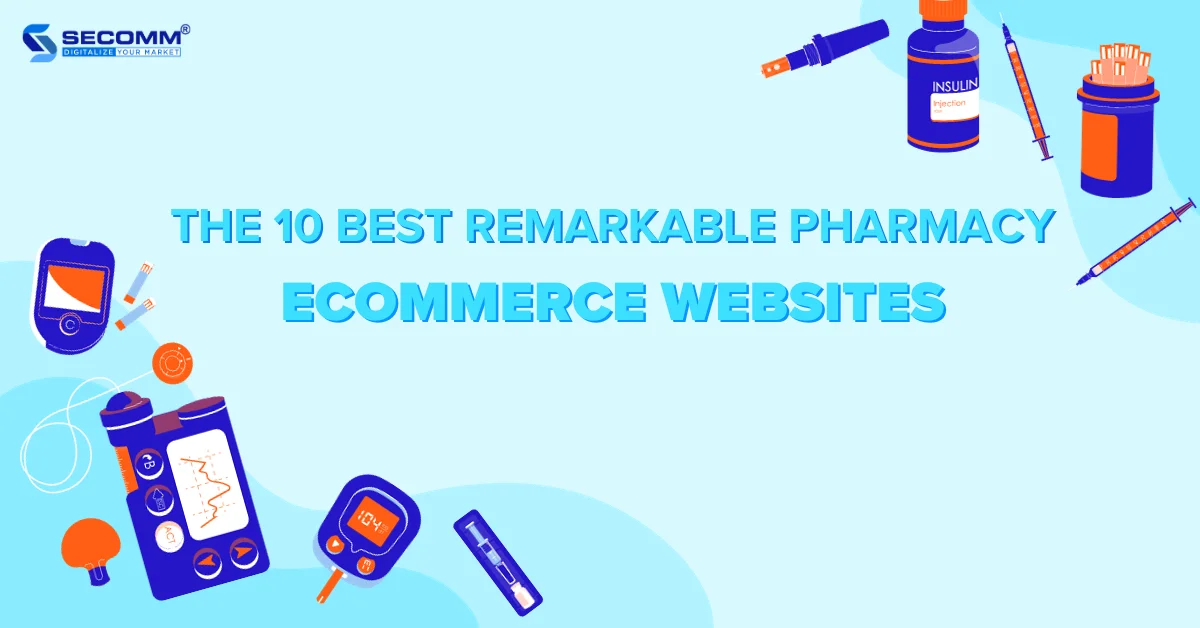
 2
2
 13,098
13,098
 0
0
 1
1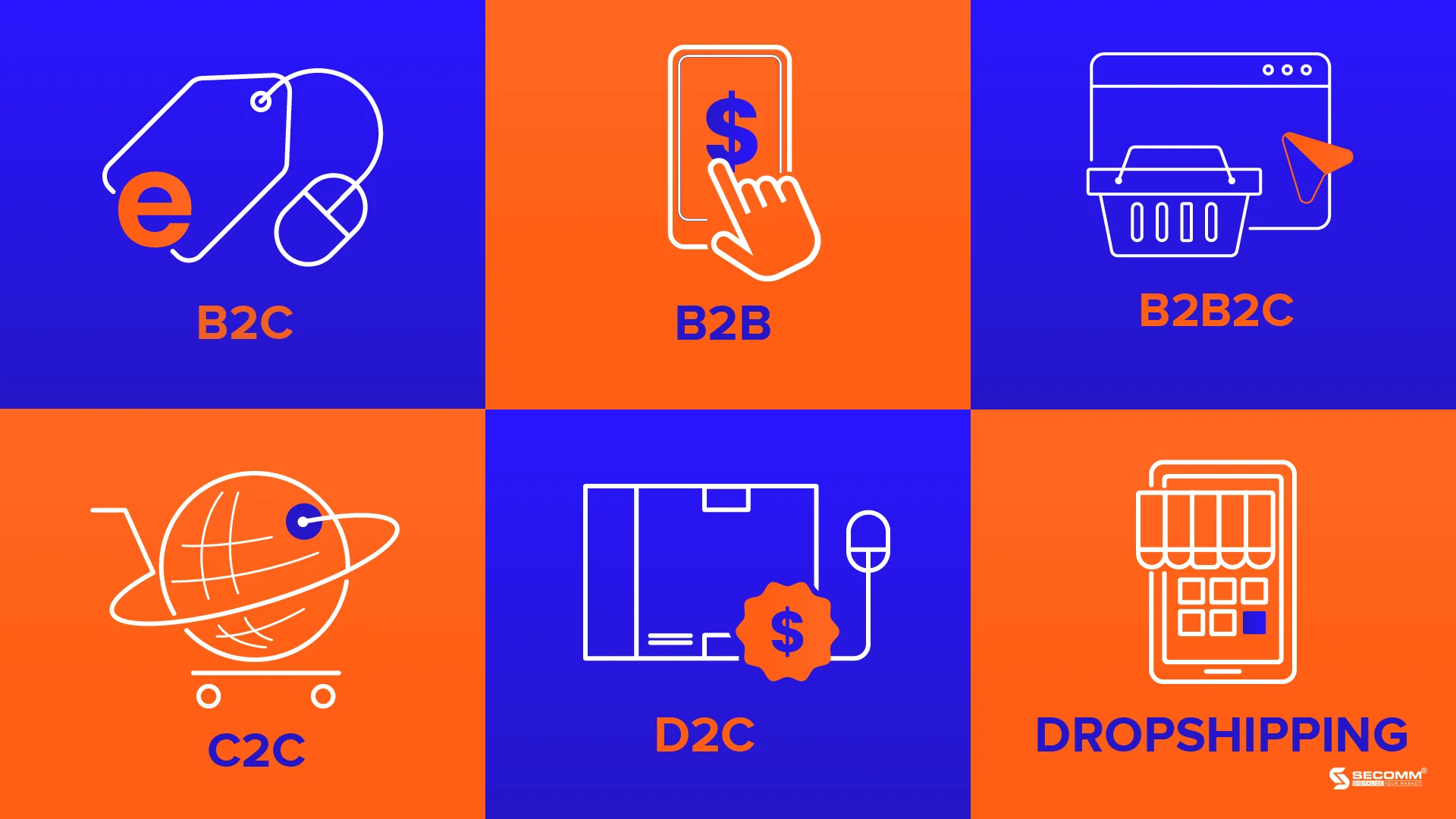
 2
2
 13,046
13,046
 0
0
 1
1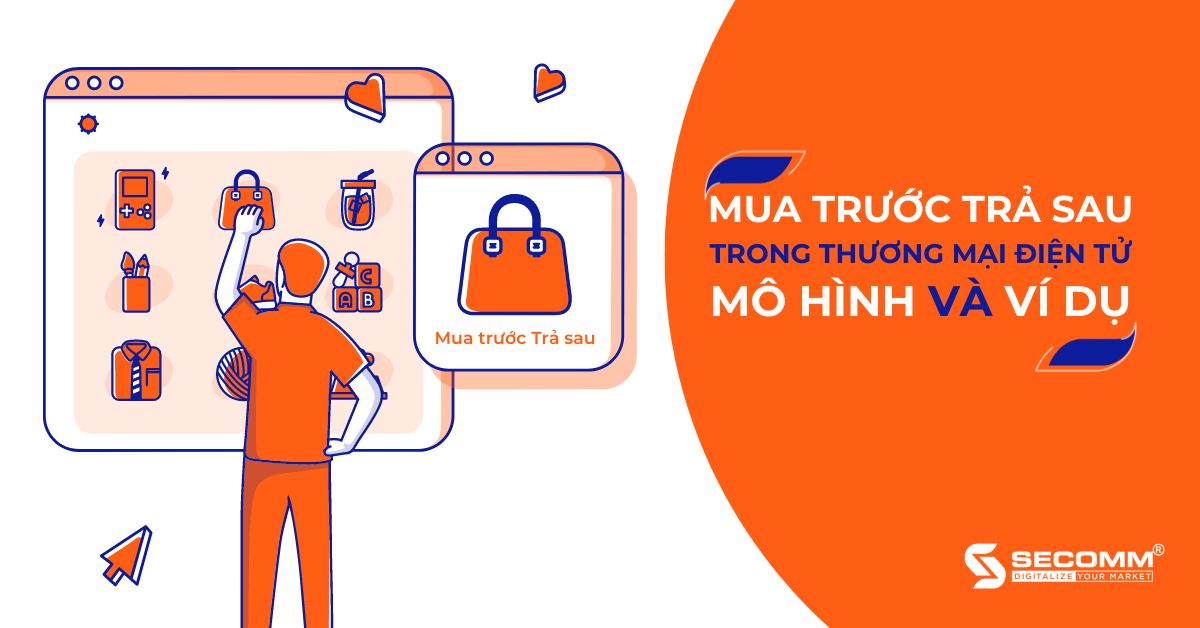
 2
2
 12,917
12,917
 0
0
 1
1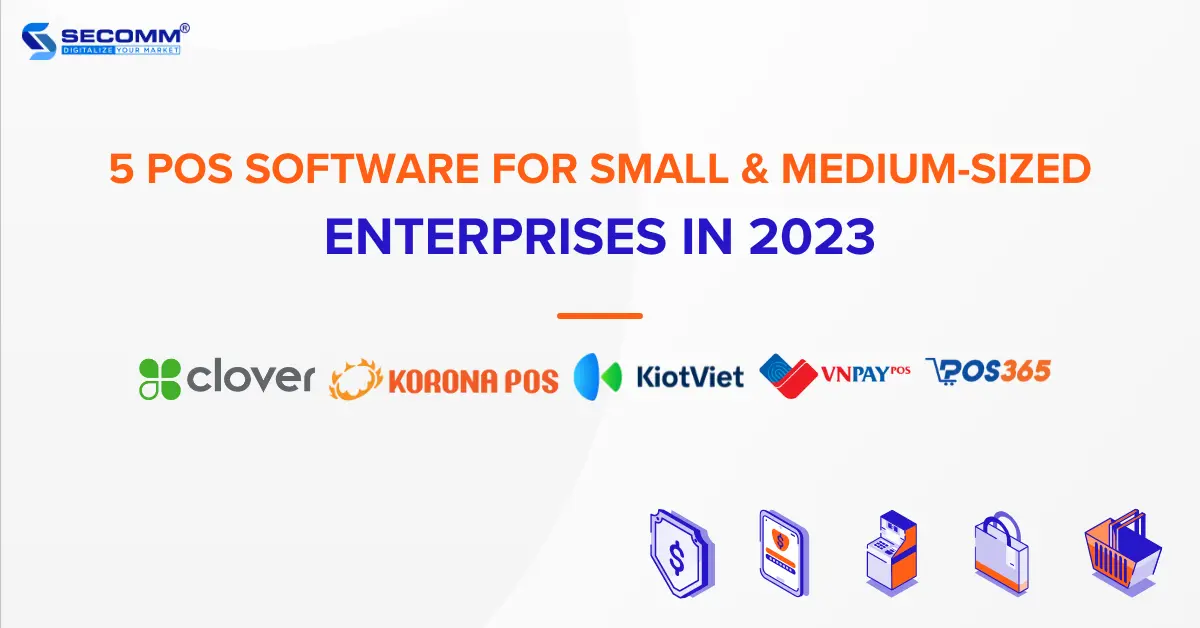
 4
4
 12,634
12,634
 0
0
 2
2



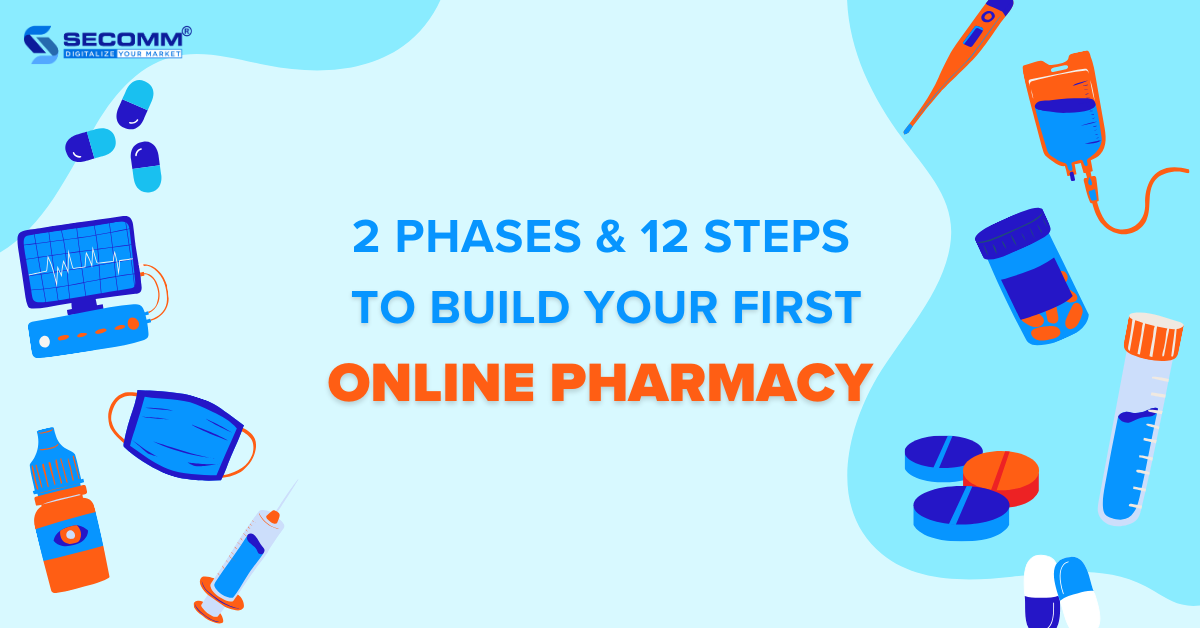
Since the advent of the COVID-19 pandemic, the pharmaceutical industry has proven the potential of transitioning from offline to online pharmacy. In the United States, the number of remote health consultations surged by 2,600% in March 2020 (during the peak of COVID-19 in the U.S.) compared to the same month in 2019. According to Statista, the global pharmaceutical eCommerce sector is projected to reach 32 billion USD by the end of 2023.
Several brands have successfully embraced eCommerce early on, achieving unexpected successes. Examples include Apollo Pharmacy (India), FPT Long Châu (Vietnam), CVS Health (USA), and Droga Raia (Brazil). The common thread among these brands lies in their comprehensive eCommerce platforms, catering to the shopping needs of customers for healthcare, pharmaceutical, and medical products.
With nearly 10 years of experience in the eCommerce sector, SECOMM has outlined the journey of building pharmaceutical eCommerce websites for the Vietnamese market.
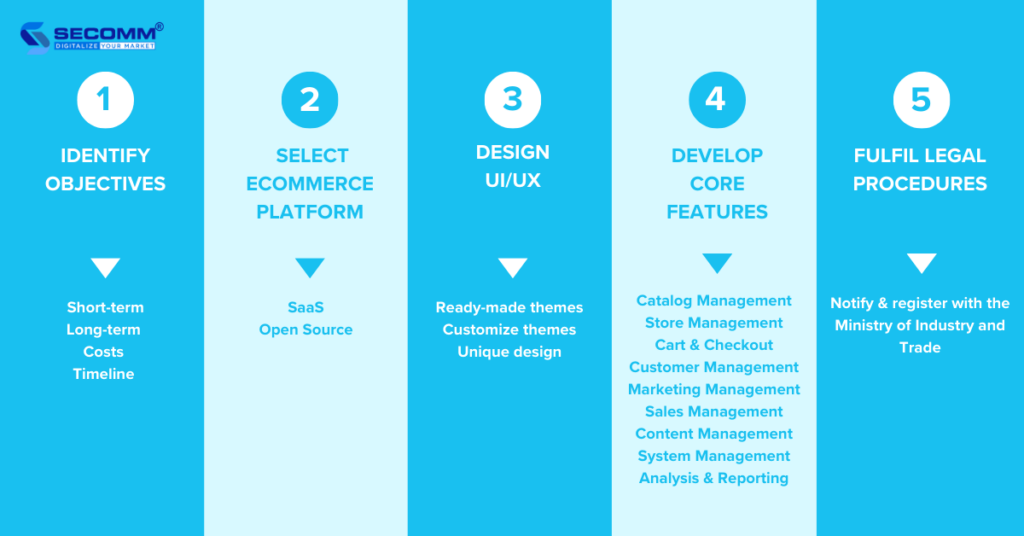
The first thing to do is identify and prioritize goals to plan the pharmacy eCommerce website development for each phase.
In the long run, businesses can consider goals like branding, generating potential customers, and optimizing online and offline operations.
For short-term goals, businesses should prioritize objectives like monitoring and analyzing customer behavior, evaluating marketing campaigns, and revenue growth.
In the first phase, businesses can decide to deploy quickly to enter the market or proceed gradually to test and adapt to this eCommerce world.
There are two types of platforms to help businesses facilitate pharmacy eCommerce websites: SaaS (Software as a Service) and open source.
Some popular SaaS eCommerce platforms include
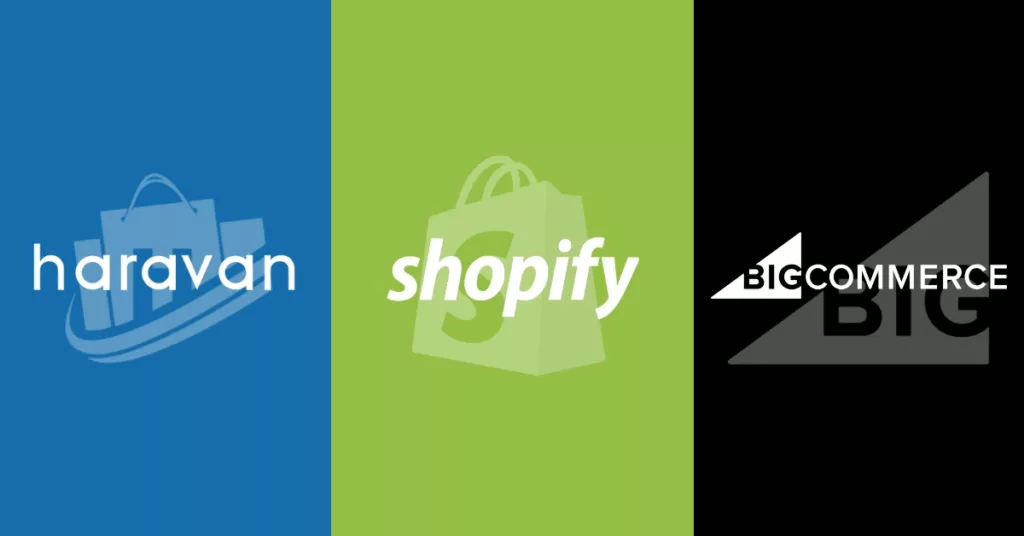
Some outstanding open-source eCommerce platforms include
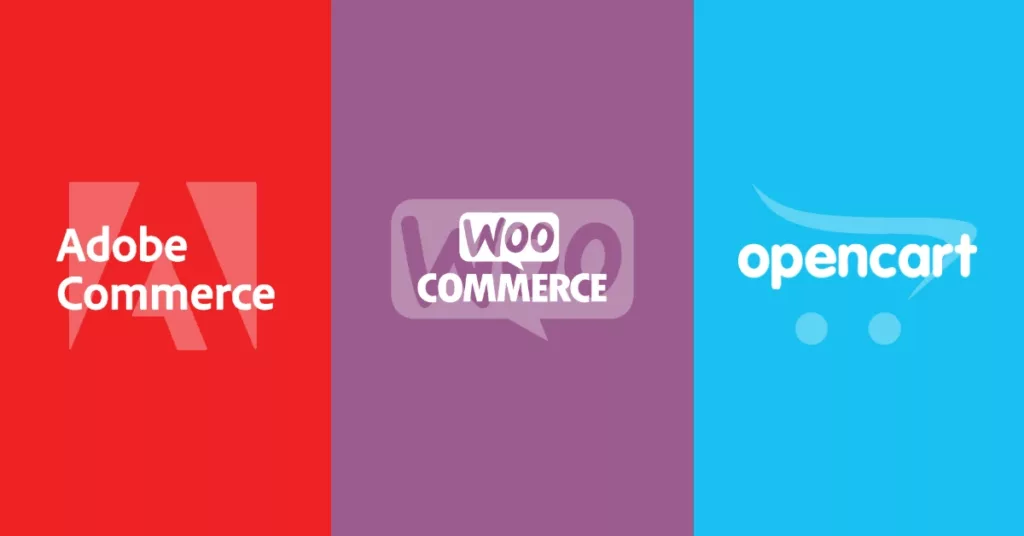
Typically, new eCommerce businesses will choose SaaS platforms to save time and budget in the initial phase of building a basic eCommerce website or an online pharmacy. Then, businesses will re-platform to an open-source platform to develop more advanced eCommerce systems.
However, some businesses decide to build their eCommerce websites in the basic phase on an open-source platform and then upgrade the system over time to remove the re-platforming step in the later phase.
When designing the interface, businesses need to meet basic criteria such as UI/UX standards, showcasing the brand’s characteristics, maintaining consistent product presentation, providing sufficient user guidance, etc.
When it comes to UI/UX design, it’s important to showcase the brand image, products, user guide, etc.
There are three ways to design UI/UX:
In this phase, businesses often choose ready-made themes to minimize costs, but some financially robust businesses may opt for the other two methods to better position their brand.
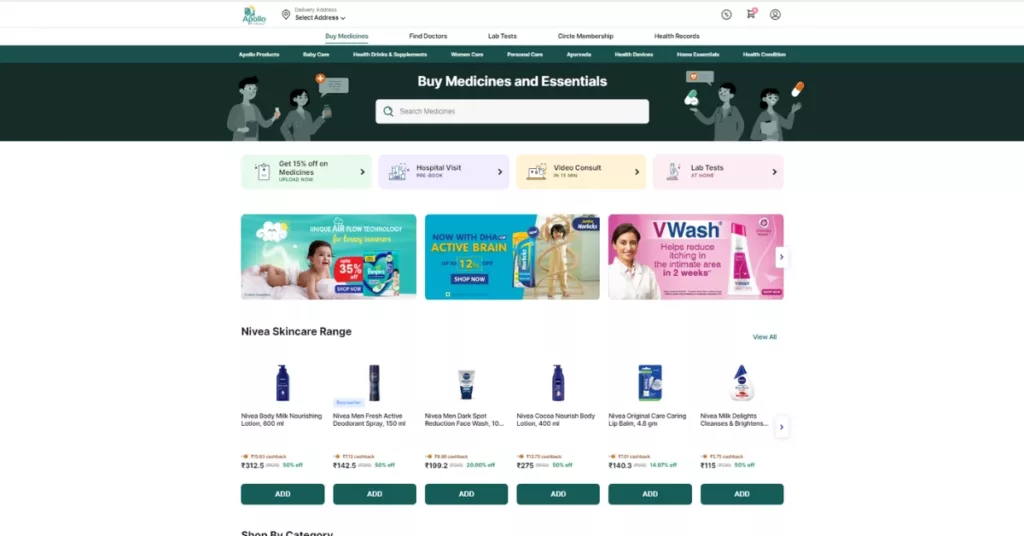
In the basic development phase, businesses should prioritize developing core features for an online pharmacy.
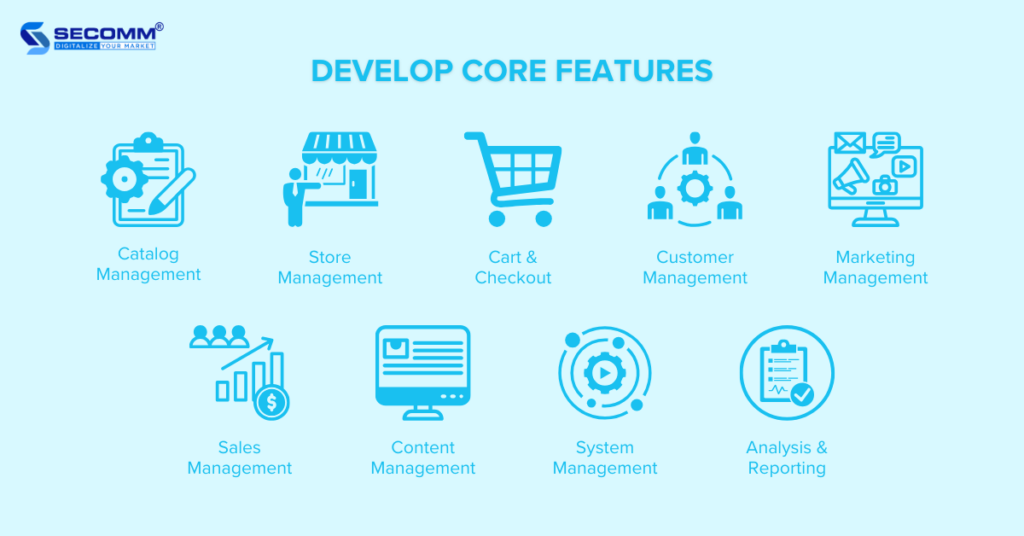
Some essential features that a pharmacy eCommerce website should have include
After developing features and ensuring a successful testing and website launch, businesses are obligated to complete the legal procedures associated with eCommerce operations.
According to Decree 52/2013/ND-CP by the Government of Vietnam, any individual or organization owning an e-commerce website for sales is required to notify or register with the Ministry of Industry and Trade through the online public service portal of the Ministry of Industry and Trade.
Note: Websites that operate beyond the specified period or fail to register/notify the authorized management agency within the designated timeframe may be subject to administrative penalties as per regulations.
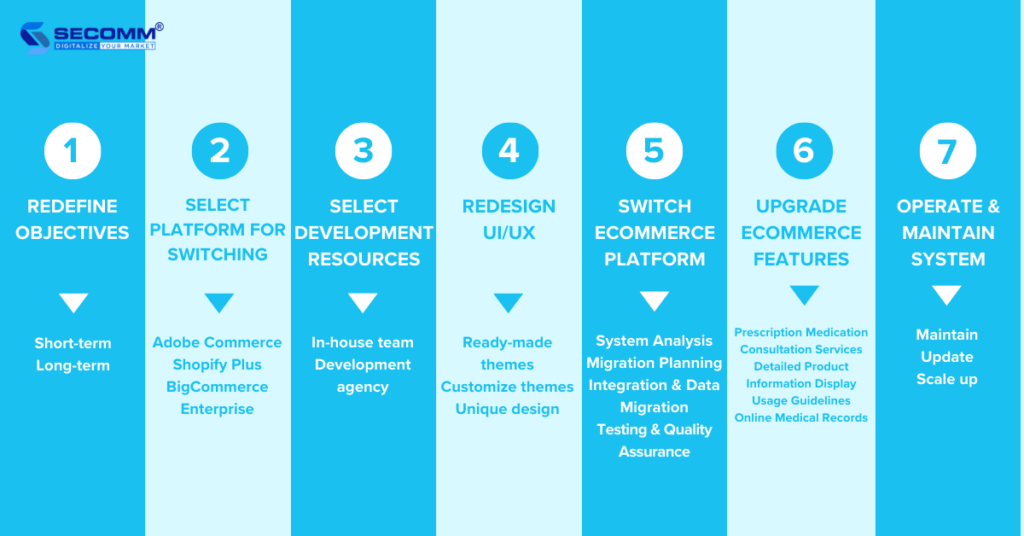
In the process of business development and amidst significant market changes, it’s important to realign goals to suit the evolving landscape. This time for business leaders to redefine objectives regarding the overall strategy, timeline, and budget for investing in the pharmacy eCommerce website.
During this phase, businesses often focus on short-term and long-term goals related to expanding the online pharmacy
For long-term goals, businesses may consider goals such as expanding market segments, establishing a loyalty program, and cultivating shopping habits for healthcare products, pharmaceuticals, and medical equipment.
For long-term goals, businesses may prioritize goals related to tapping into new potential customers, revenue growth, and supporting eCommerce marketing strategies such as livestreaming, gamification, affiliate marketing, and influencer marketing.
When SaaS platforms can’t support businesses to expand the system anymore, re-platforming to another robust platform is a top choice. Platforms like Adobe Commerce, Shopify Plus, and BigCommerce Enterprise can help businesses facilitate a deeply custom pharmacy eCommerce website.

When re-platforming, businesses have challenges such as switching costs, time to train personnel, and data loss throughout the platform migration process.
To build a high-complexity online pharmacy on a professional platform, businesses need resources to facilitate it effectively.
Businesses can decide to build an in-house team or seek a development agency. Regardless of the choice, it requires businesses to have practical experience on the selected platform.
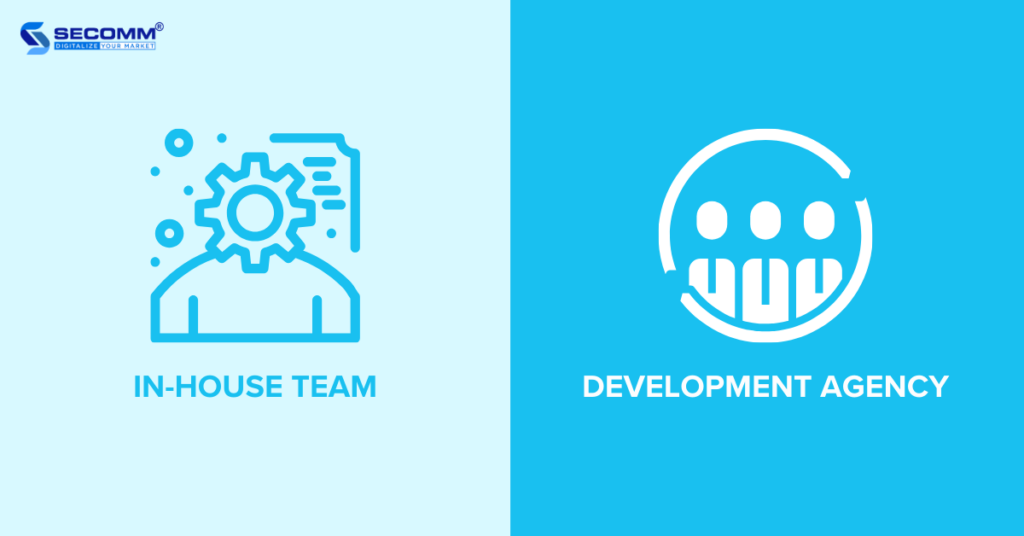
For building an in-house team, businesses need to recruit and train IT and eCommerce personnel to develop on the selected platform. This option may take time and budget to establish a high-performing team but it allows the business to have better control over resources and actively adjust or develop the website system.
In case businesses hire a development agency, here are some criteria to consider:
Partnering with a professional development agency will help businesses gain specialized knowledge, enhance experience, and create an online pharmacy tailored to the specific needs of the industry.
During the platform migration process, businesses can keep the current website design without making any changes. However, some businesses tend to redesign their websites to align with new strategies and the new platform.
Similar to the previous phase, businesses have three options to design their pharmacy eCommerce websites: using ready-made themes, customizing themes, or designing a unique interface.
However, in phase 2, businesses often decide to customize themes or design a unique interface to express the brand image and the pharmaceutical eCommerce industry.
After the right eCommerce platform for migrating, businesses should carry out the process to minimize the risk of data loss or errors. Typically, the migration process is automated as much as possible to avoid potential issues.
The migration process includes the following steps:
After re-platforming, the business needs to perform thorough checks to ensure that the data has been migrated completely and accurately according to the plan.
Beyond core features, businesses should focus on building a system with more complex features, including advanced and industry-specific functionalities for pharmaceutical eCommerce.
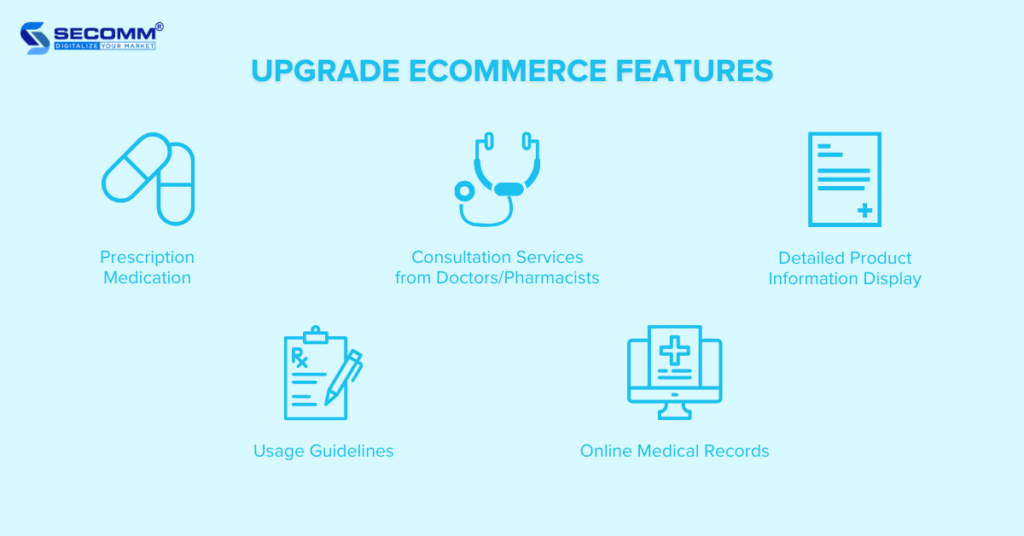
In addition, businesses need to consistently update and enhance these features to meet user needs and keep pace with market trends.
When testing the eCommerce system, businesses need to thoroughly check the entire website and its features over a specific period to ensure order processing speed and website stability. If any issues arise, businesses should immediately contact the in-house team or development partner to adjust and improve the website accordingly before officially going live.
Once the pharmacy eCommerce website system is stable, businesses should focus on eCommerce marketing strategies or Omnichannel approaches to enhance their online pharmacy.
Additionally, regular maintenance, updates, and continuous system upgrades are essential to sustain growth and quickly adapt to changes in the eCommerce market in general and the healthcare market in particular.
The Bottom Line
In general, the journey of building a pharmacy eCommerce website in Vietnam is not an easy task. This work demands substantial investments of time and budget from businesses to research the most suitable eCommerce strategy for each stage of their development.
Understanding the challenges that businesses may encounter when building an online pharmacy, SECOMM is ready to provide custom solutions for developing an eCommerce system.
Contact SECOMM or call the hotline at 028 7108 9908 for a free consultation.
 2
2
 6,595
6,595
 0
0
 1
1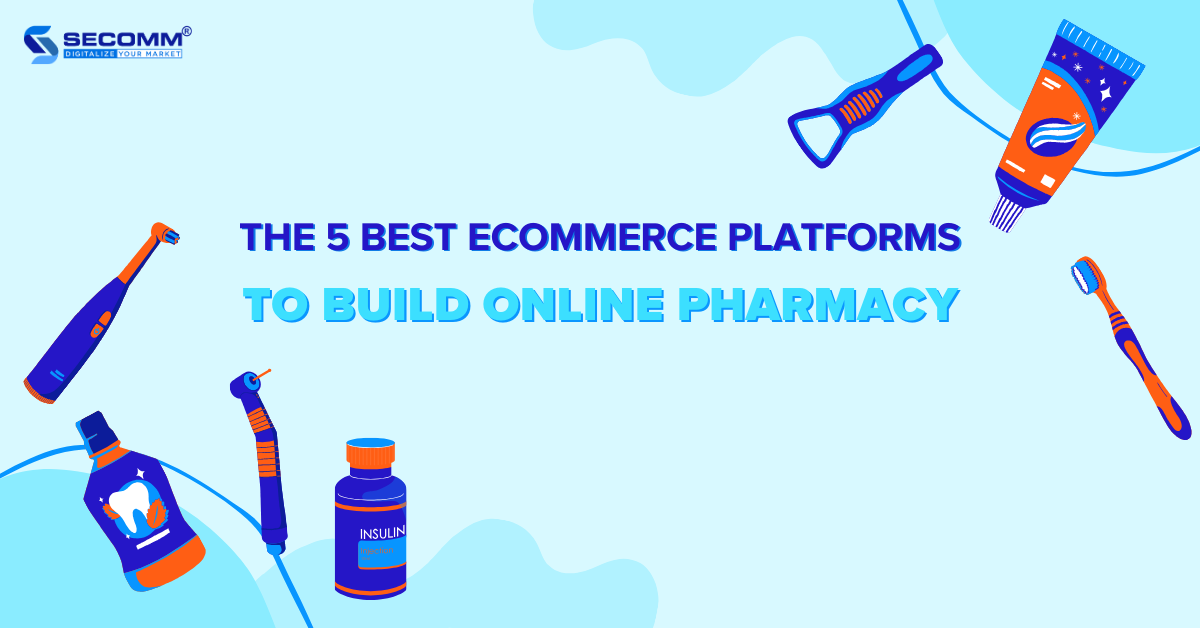
According to The Business Research Company, the global pharmaceutical eCommerce market is projected to reach $732.3 billion by 2027. This represents a significant opportunity for pharmacies, healthcare service providers, or hospitals/clinics to implement eCommerce and reach a broader range of potential customers. To achieve this, building an online pharmacy on a professional platform is a great idea to address industry-specific challenges.
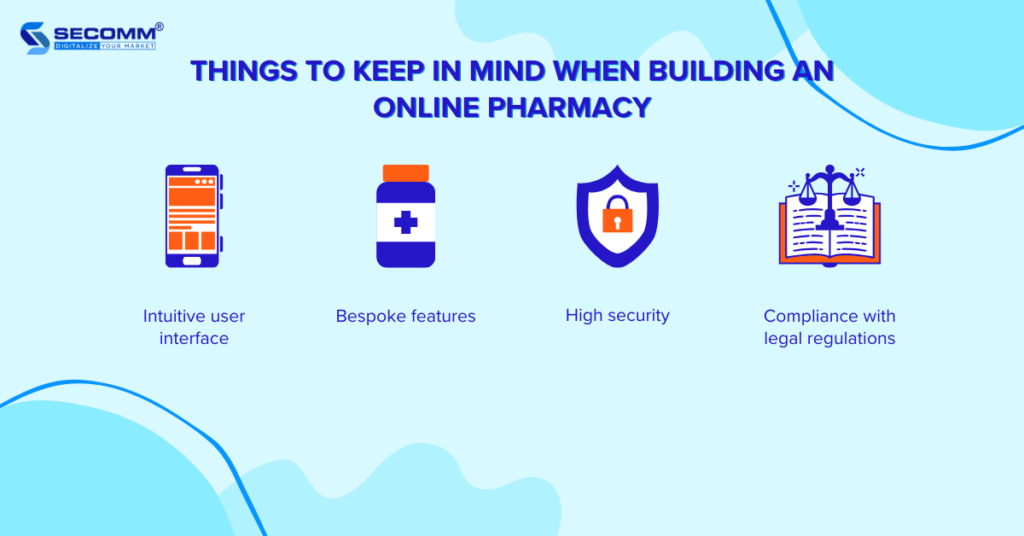
When building a pharmacy eCommerce website, businesses must meet numerous criteria to ensure professionalism, safety, and legal compliance within this industry.
The typical customer profile in the pharmaceutical eCommerce sector consists of individuals seeking to purchase medications, medical equipment, and other healthcare products for themselves, family, or friends.
Thus, the website interface needs to be visually appealing, and user-friendly, and prioritize colors such as blue or white to create a sense of safety and cleanliness.
Other factors, such as layout, font choice, and imagery, should be carefully selected and coordinated to deliver the most professional user experience.
When building an online pharmacy, beyond default eCommerce features, businesses should focus on developing the following features to address industry-specific needs:
An online pharmacy is a system that contains various crucial information including personal details, payment information, and the health status of customers. Therefore, the security system of the website needs to be built and deployed carefully to ensure the safety of customer data.
Pharmaceutical eCommerce is a specialized business area subject to the regulations of the healthcare/pharmaceutical industry. eCommerce pharmaceutical businesses need to comply with these regulations to ensure that their operations are legal and safe for customers.
Below are some key legal regulations that e-commerce pharmaceutical businesses need to adhere to in Vietnam:
In addition, pharmaceutical eCommerce businesses also need to comply with other legal regulations, such as Cybersecurity Law, Consumer Protection Law, and eCommerce Law.
Although this industry has many challenges to deploy, businesses always have eCommerce platforms to create their online pharmacies. Here are the 5 leading platforms for building online pharmacy that businesses may consider.
BigCommerce is a cloud-based eCommerce platform operating on the Software as a Service (SaaS) model, enabling businesses to create and manage online stores.
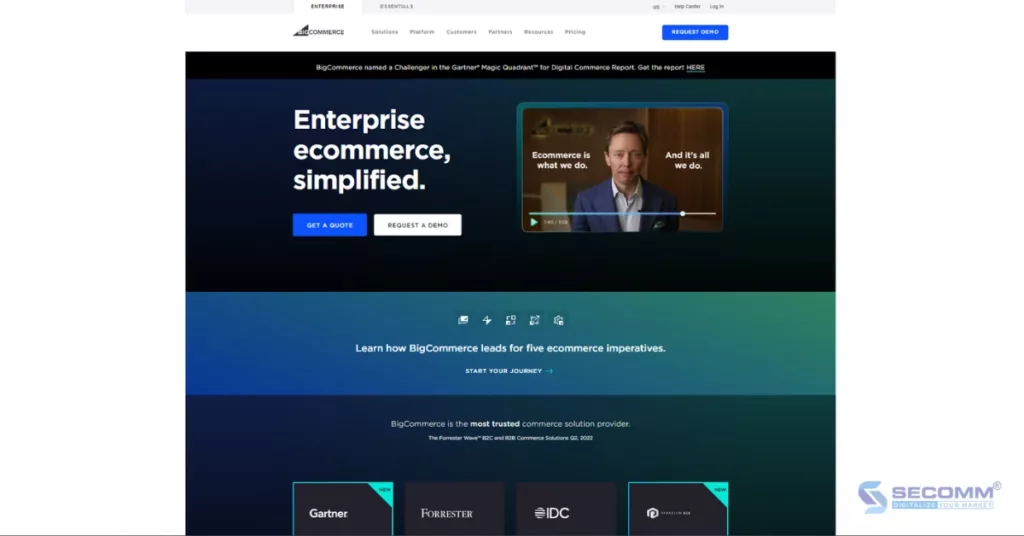
Currently, BigCommerce offers four main solutions, including
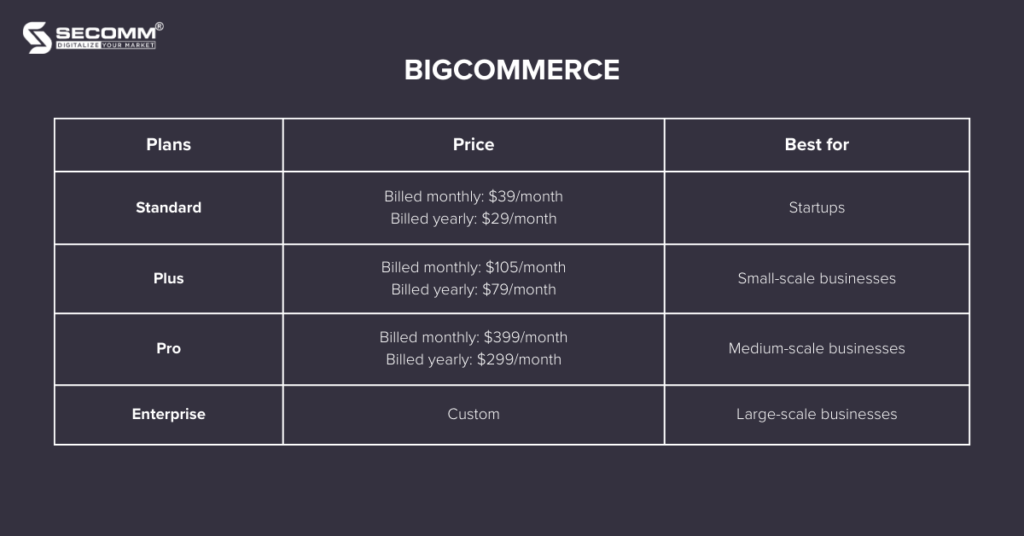
Pros:
Cons:
Some famous pharmaceutical eCommerce businesses currently utilizing BigCommerce include Victoria Health, Molton Brown, LARQ, and Zyppah.
Shopify is a SaaS eCommerce platform established in 2006. To date, Shopify has rapidly become one of the leading platforms in the eCommerce industry, supporting thousands of businesses worldwide to initiate and grow their online ventures.
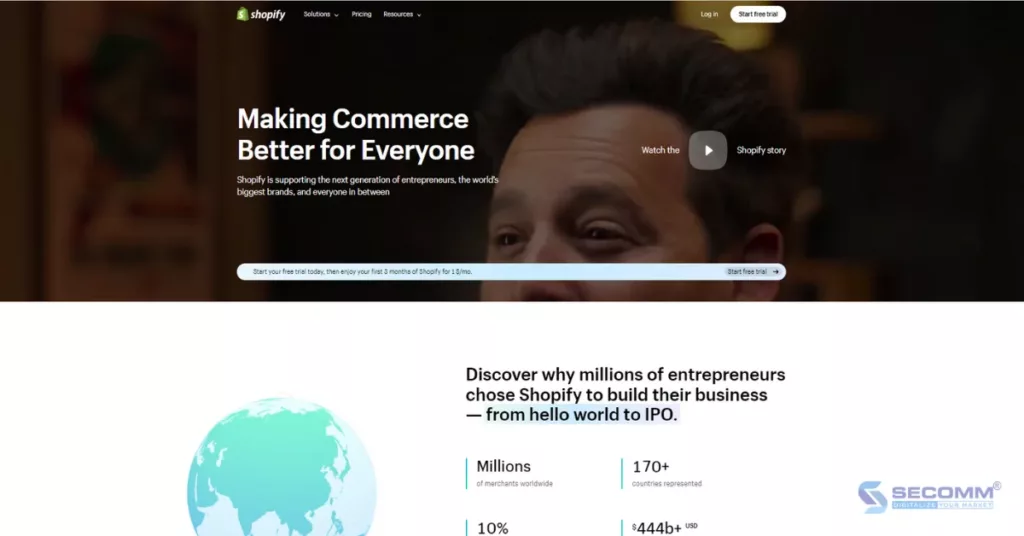
The cost to use the Shopify platform is quite diverse, including these three solutions:
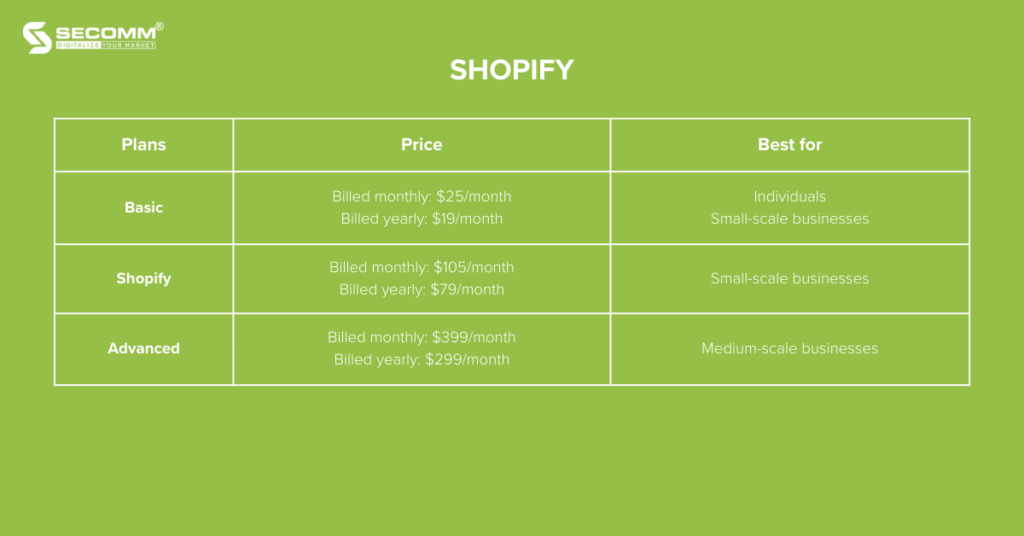
In addition, Shopify provides eCommerce solutions tailored to businesses with different needs and wants, such as:
Learn more: Top 5 benefits of Headless Commerce
Pros:
Cons:
Healthcare, pharmaceutical, and medical businesses using Shopify include Dr.Axe, 310 Nutrition, Hiya, and BUBS Naturals.
StoreHippo is a SaaS eCommerce platform established in 2014 in India. Over the years, this platform has consistently updated its technologies to meet the website-building needs of businesses, particularly those in the pharmaceutical eCommerce sector.
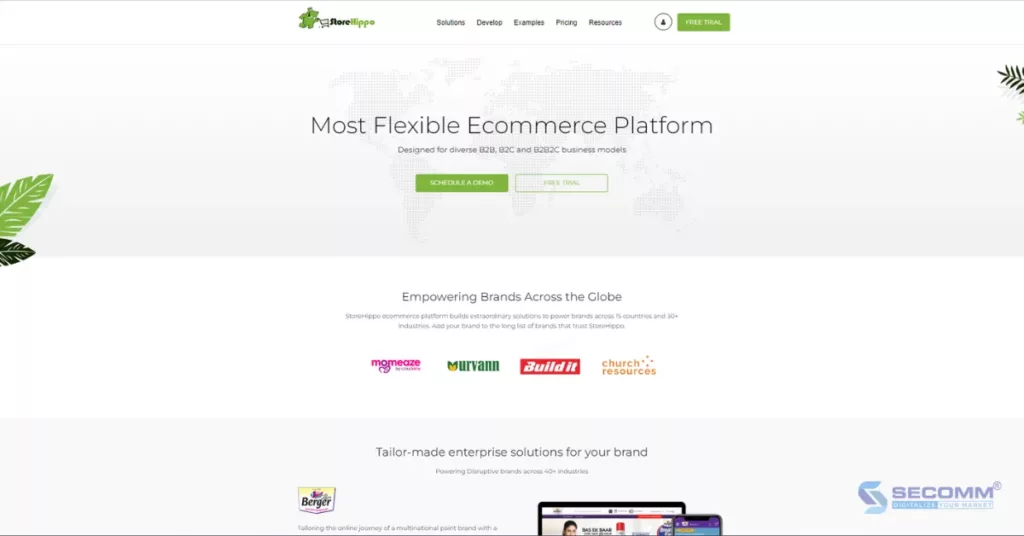
Similar to other SaaS platforms, StoreHippo offers a variety of solutions to choose from:
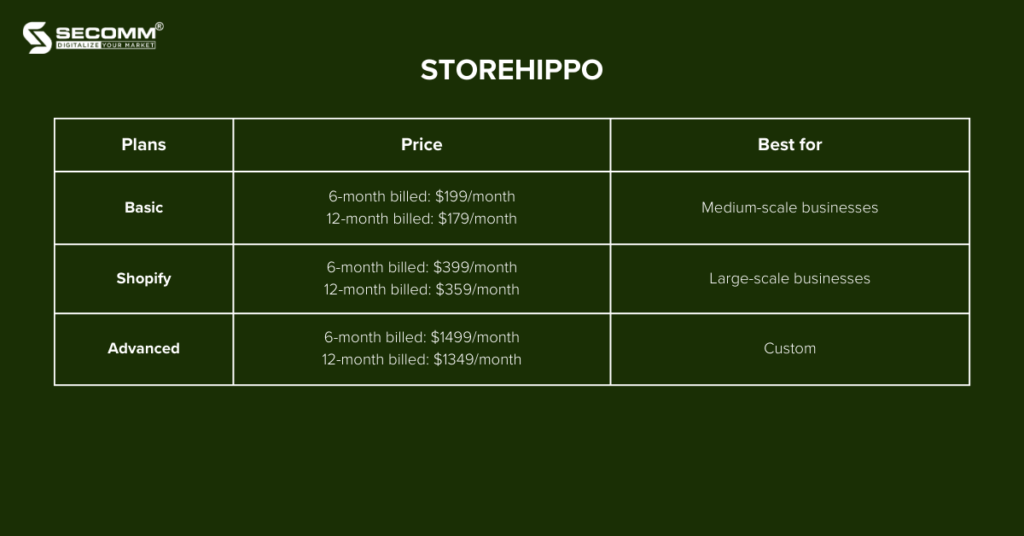
Pros:
Cons:
Some brands that built their online pharmacy with StoreHippo include WoundProfessional, Kunooz, and On A Healthy Note.
WooCommerce is an open-source eCommerce plugin developed for the WordPress platform, one of the most popular content management systems (CMS) globally. WooCommerce enables businesses to turn their WordPress websites into online stores or integrate eCommerce features into existing websites.
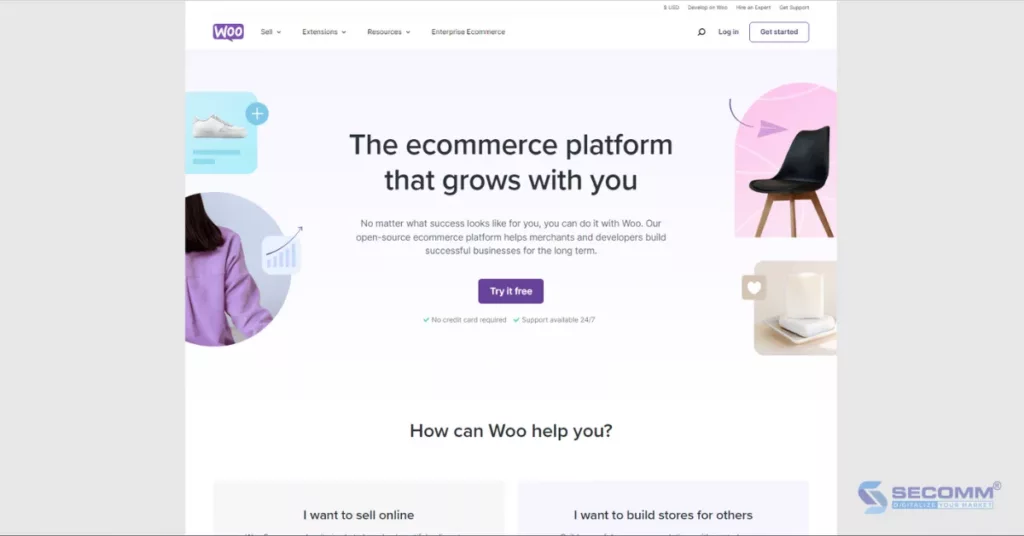
The license fee of WooCommerce depends on the complexity of each project, averaging around $1,000 for a basic eCommerce website and $10,000 for a more advanced eCommerce website.
Pros:
Cons:
Brands using WooCommerce to build online pharmacy include Dr. Scholl’s, myLAB Box, Superdrug Health Clinics, and Apothecanna.
Adobe Commerce, formerly known as Magento Commerce, is a professional and widely used eCommerce system. Adobe Commerce is part of the Adobe Experience Cloud product line and is designed to assist businesses in building eCommerce websites.
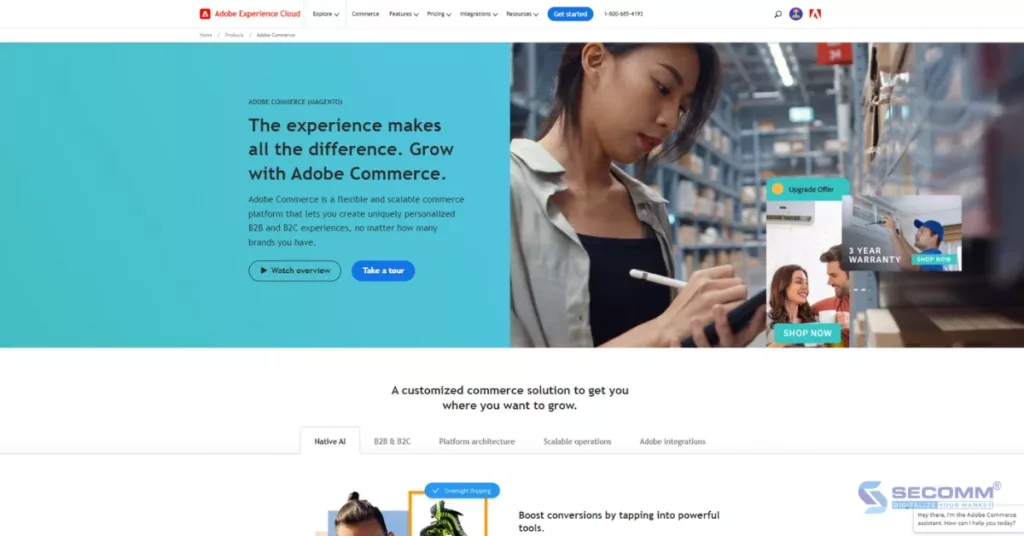
Currently, Adobe Commerce provides businesses with two main versions:
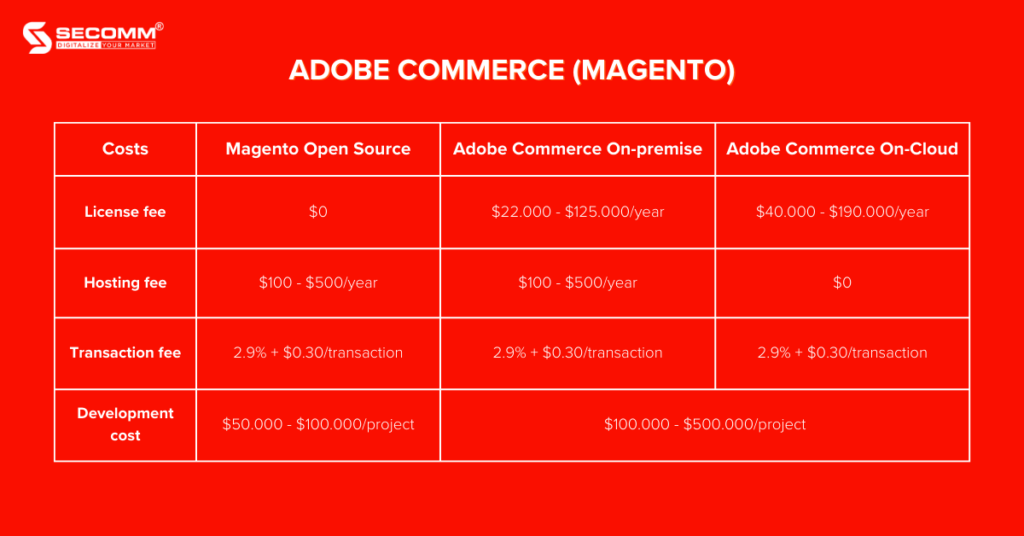
Pros:
Cons:
This list is just a few examples for businesses to reference; there are many other robust eCommerce platforms that businesses can consider based on specific needs and available resources.
With extensive experience in implementing eCommerce for clients in various countries, SECOMM understands the challenges and difficulties businesses face during the deployment of pharmaceutical eCommerce.
Contact SECOMM now or call the hotline at 02871089908 today for a free consultation.
 2
2
 8,781
8,781
 0
0
 1
1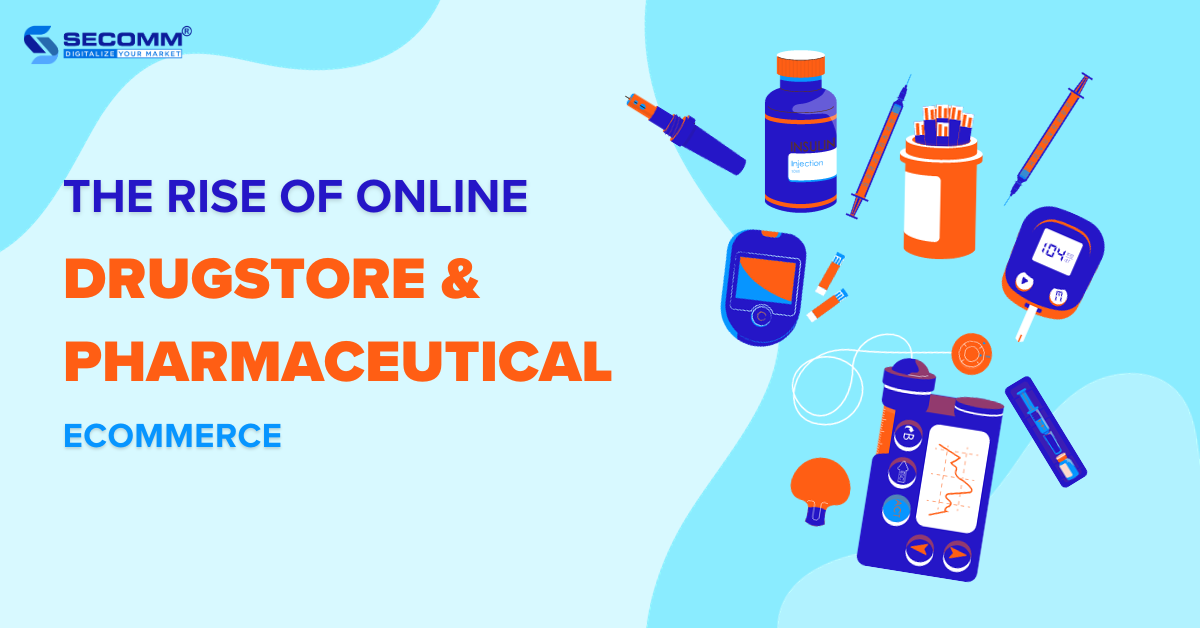
In the ever-growing digital age, online drugstores have become an ideal destination for global users seeking convenient and safe ways to care for their health and purchase medications online. The robust growth of eCommerce and changes in user behavior have driven the expansion of this pharmaceutical eCommerce industry.
Below are some crucial insights into why pharmaceutical eCommerce has become an essential component of the modern healthcare system.
Pharmaceutical eCommerce has become a promising business model in recent years. According to the “Healthcare eCommerce Global Market Report” compiled by The Business Research Company, pharmaceutical eCommerce is categorized into three main models:
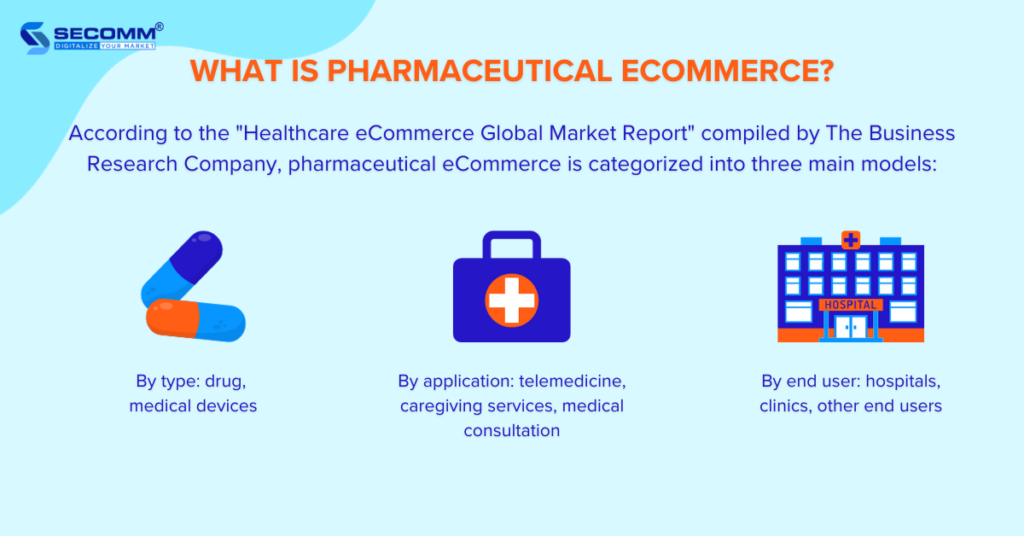
This is a model that enables consumers to order and purchase various products such as prescription drugs, over-the-counter medications, vitamins, dietary supplements, healthcare, personal care, etc., through online shopping channels.
Some well-known pharmaceutical eCommerce by type examples include Droga Raia (Brazil), Netmeds (India), Pharmacity (Vietnam), etc.
Consumers can access healthcare consultation, advice, and diagnostic services through various applications for this type of pharmaceutical eCommerce. Under this model, consumers typically subscribe to and pay for these services through packages or on a subscription basis (monthly or yearly).
Companies adopting this service-oriented eCommerce model include Teladoc (USA), iCliniq (India), SBB Healthcare (Vietnam), and others.
This pharmaceutical eCommerce model often involves websites or applications created by hospitals/clinics to assist patients in scheduling appointments, offering healthcare packages, prescription medications, and more.
Examples of hospitals/clinics following the eCommerce model by end-users include The Royal Melbourne Hospital (Australia), NYC Health+ Hospital (USA), Vinmec (Vietnam), and others.
Certainly, Covid has not only led to a rise in traditional healthcare expenditures but has also acted as a driving force for pharmaceutical eCommerce. In the United States, telehealth visits witnessed a remarkable surge of 2,600% in March 2020 (during the peak of the COVID-19 outbreak in the U.S.) compared to the same month in 2019.
The growth of the pharmaceutical eCommerce market seems unabated. According to a recent report by CMS, total healthcare spending in the United States reached $3.8 trillion, marking a 4.6% increase in 2022. The Asia-Pacific region is anticipated to experience rapid growth in healthcare eCommerce, with a projected CAGR of 20.5% from 2020 to 2027.
Nielsen predicts that the pharmaceutical eCommerce market in Vietnam will attain a value of $10 billion by 2025.
Some other reasons for the rise of pharmaceutical eCommerce include:
Apollo Pharmacy is a well-known retail pharmacy chain in India, affiliated with the Apollo Hospitals. After years of operation in the healthcare sector, Apollo decided to establish an eCommerce website to serve millions of customers nationwide. The Apollo eCommerce website is built on the Magento platform, ensuring the capability to manage an extensive product catalog.
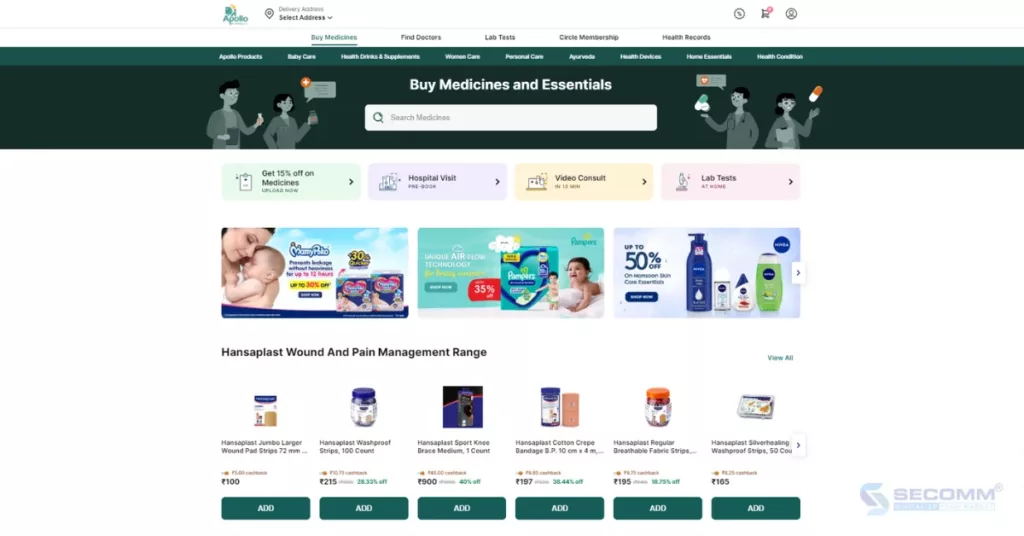
Beyond selling prescription and non-prescription drugs, as well as health care products, Apollo also provides various related services. Among these, notable offerings include online consultation services, health check-up appointments, vaccination appointments, and insurance sales.
Teladoc Health, Inc. is an American healthcare technology company headquartered in Purchase, New York. The company provides remote healthcare services, including video consultations, phone consultations, and remote health monitoring.
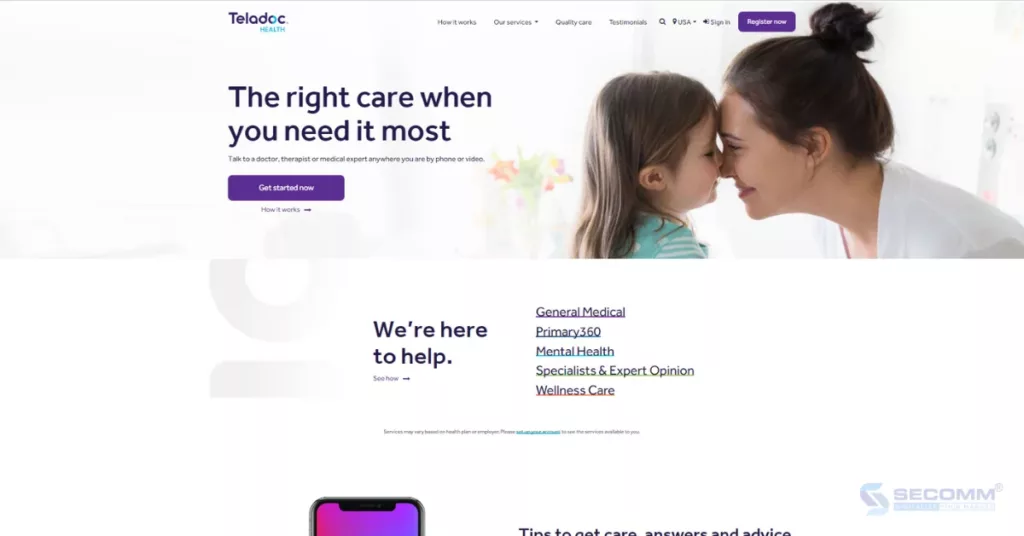
By rapidly deploying a website and eCommerce application, along with the utilization of cutting-edge technologies such as artificial intelligence (AI), machine learning (ML), and data analytics, Teladoc has been able to enhance customer experience and deliver improved remote healthcare services.
Mayo Clinic was founded in 1889 by Dr. William W. Mayo and his two sons, Dr. Charles and Dr. William J. Mayo. Initially, Mayo Clinic was a small clinic specializing in providing healthcare services to the local community. However, the hospital quickly expanded and became one of the leading hospitals in the world.
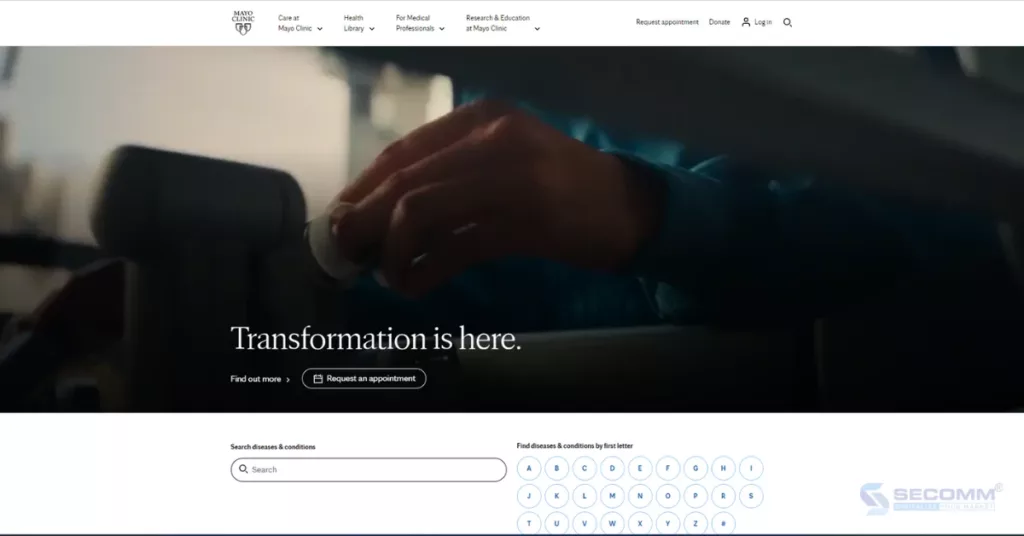
Much of Mayo Clinic’s success can be attributed to the early adoption of eCommerce, allowing patients to schedule appointments, check test results, and purchase medications online. This has helped patients save time and effort, contributing to Mayo Clinic’s overall success.
Learn more: The 10 Best Remarkable Pharmacy eCommerce Websites
The Bottom Line
Pharmaceutical eCommerce not only brings convenience and diverse choices for consumers but also presents attractive business opportunities for healthcare enterprises. If invested systematically and guided correctly, businesses in this field can seize significant opportunities in this promising market.
With extensive experience in implementing eCommerce for customers in various countries, SECOMM understands the difficulties and challenges that businesses face during the deployment process.
Contact SECOMM now or call directly at the hotline number (02871089908) today for a free consultation
 2
2
 13,720
13,720
 0
0
 1
1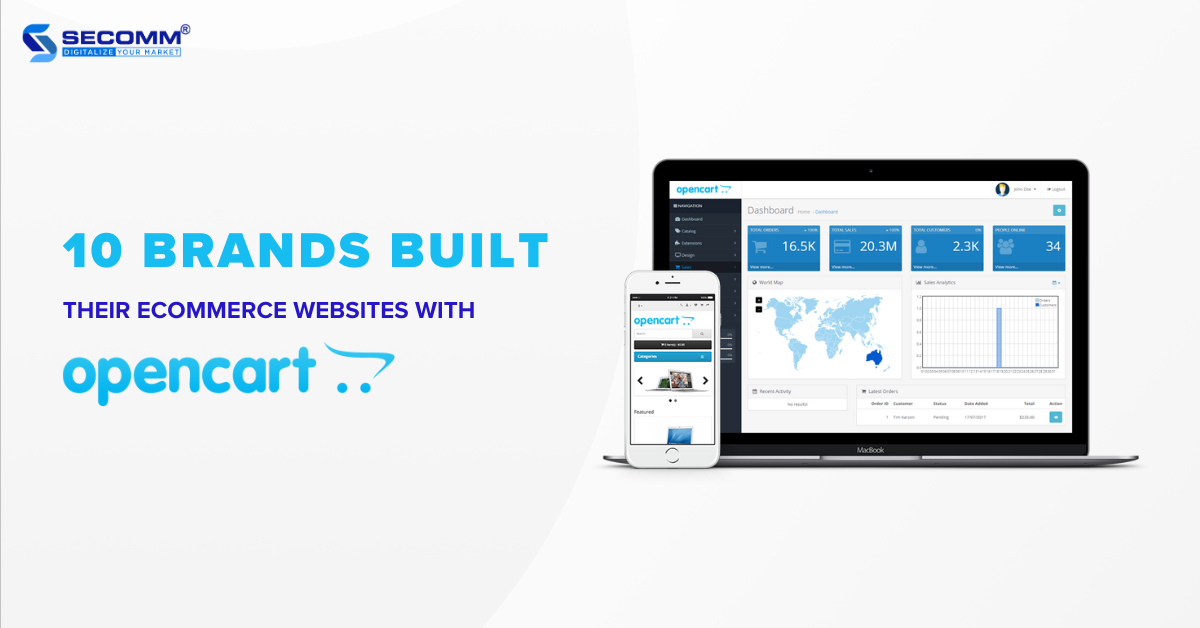
OpenCart is an open-source eCommerce platform based on the PHP programming language, utilizing the MySQL database and HTML components to build eCommerce websites. According to Builtwith, the platform powers over 2,500 websites, with the majority in the United States and Russia.
OpenCart offers businesses various options for building eCommerce websites: Free (Open Source) and Cloud Store (Paid). Due to the flexibility of open-source code, many businesses choose this platform to meet specialized requirements in website development.
Below are some brands that have used OpenCart to create dedicated eCommerce websites
Bensound is the brainchild of musician Benjamin Tissot, founded in 2012. It is an eCommerce website specializing in providing free and licensed music, as well as sound effects. Initially, Benjamin Tissot composed and licensed only his songs on this platform.
However, as the service grew, Benjamin Tissot started accepting musical works from other artists, making it an ideal destination for content creators on platforms like YouTube, Facebook, and Instagram.
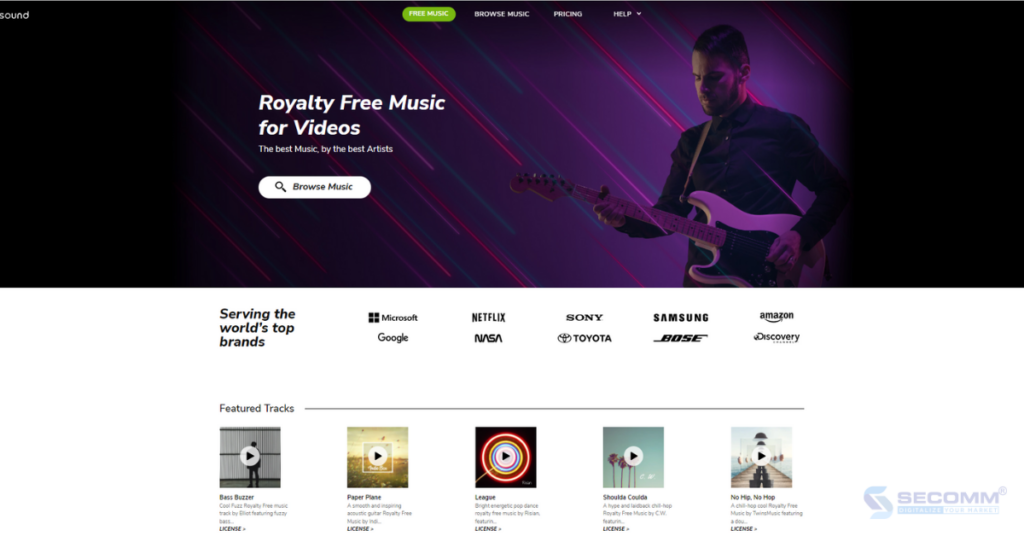
Vicrez is an online automotive parts retailer established in 2014 in the city of Whittier, Southern California, USA. What sets Vicrez apart is that customers can shop online for any external car parts and accessories to customize their vehicles according to their individual preferences.
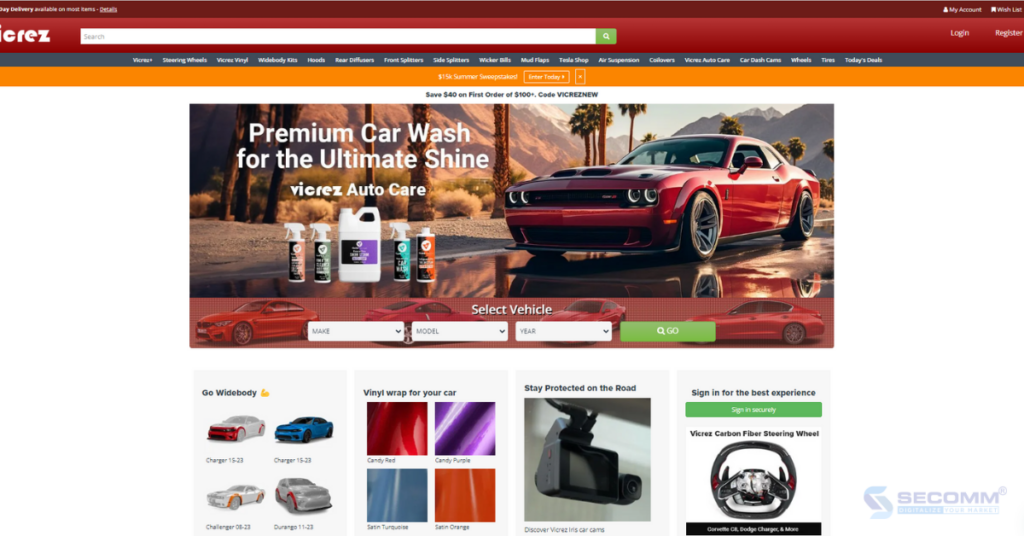
Pharmacy Direct is the first online pharmacy to follow the eCommerce model, owned and operated by pharmacists in Australia since 1996. Initially, the brand operated on a small scale, serving local customers. However, as the demand for health products in Australia steadily increased, Pharmacy Direct experienced remarkable growth.
The business invested more in its eCommerce website to offer over 17,000 products, including vitamins, supplements, beauty products, fragrances, childcare products, prescription medications, and over-the-counter medicines from reputable pharmaceutical brands. This expansion allowed Pharmacy Direct to provide online services to the Australian population.
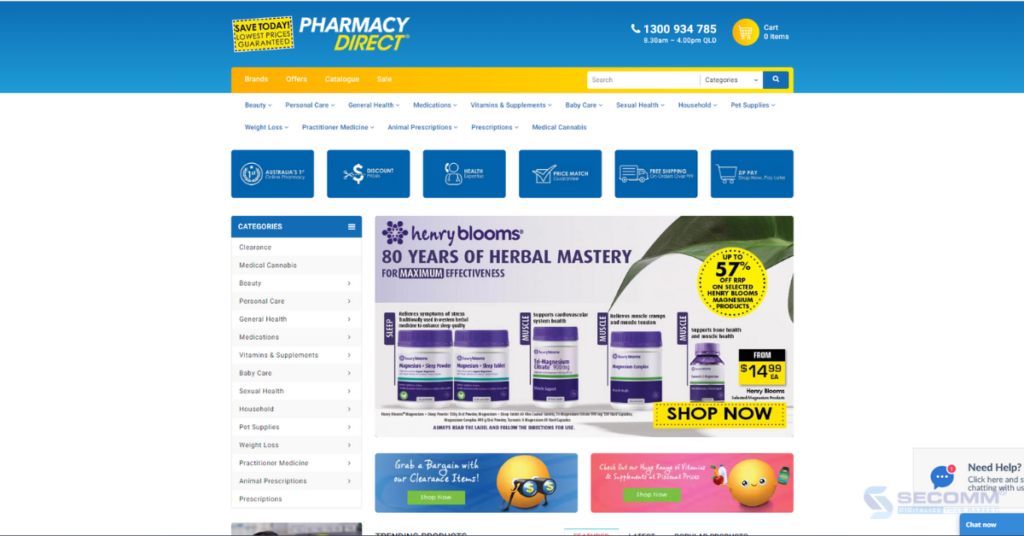
Get Laid Beds is a business specializing in handcrafting solid wood beds, founded in 2012 by John and Jean, a pair of architect and carpenter friends.
After more than 10 years of development, Get Laid Beds has expanded its product lines to include bedroom furniture, focusing on building its eCommerce website and enhancing customer service. This brand has gained popularity among customers in the UK and the US.
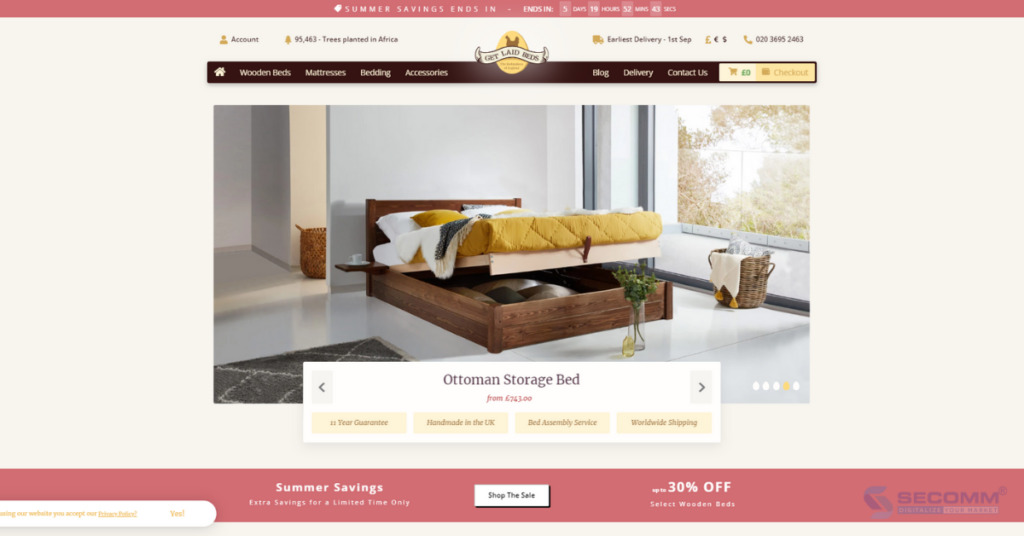
Self Edge is a men’s fashion brand with a vintage style, established in 2006 by the American couple Kiya and Demitra Babzani. Currently, Self Edge has a presence in major cities such as San Francisco, New York, Los Angeles, Portland, and San Jose del Cabo.
Additionally, Self Edge focuses on developing its eCommerce website to reach new customers across the United States and Mexico.

BNA Model World is a model business established in 2007 in Australia. Since its establishment, the brand’s management has focused on the eCommerce market and gradually upgraded its products/services. Currently, BNA Model World offers over 100,000 products from more than 1,000 manufacturers, serving over 104,000 customers worldwide.
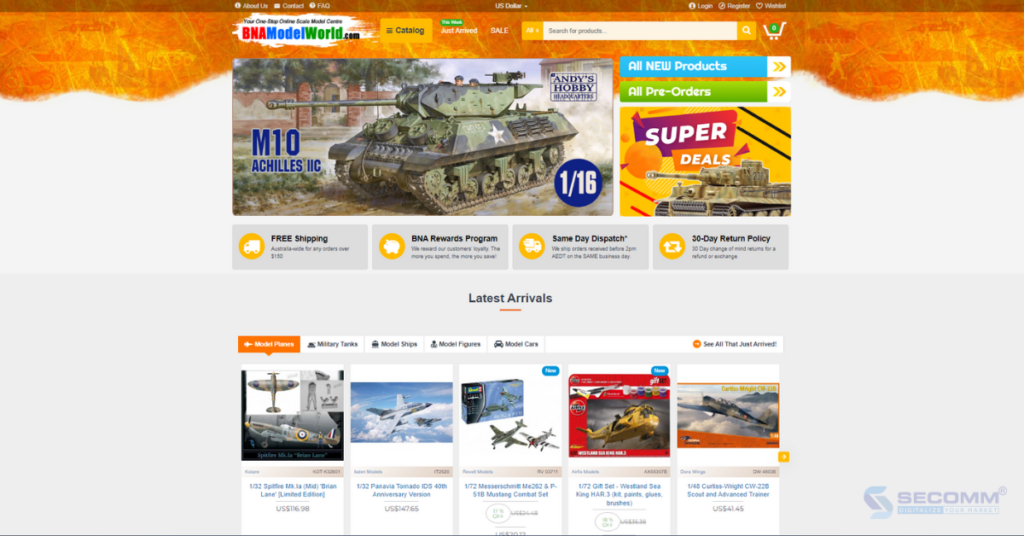
Godukkan is a consumer electronics retail business established in 2017 and headquartered in Dubai, United Arab Emirates (UAE). Godukkan’s main goal is to become the number one eCommerce website in the UAE, offering a wide range of products, including laptops, mobile phones, tablets, PCs, gaming equipment, and more.
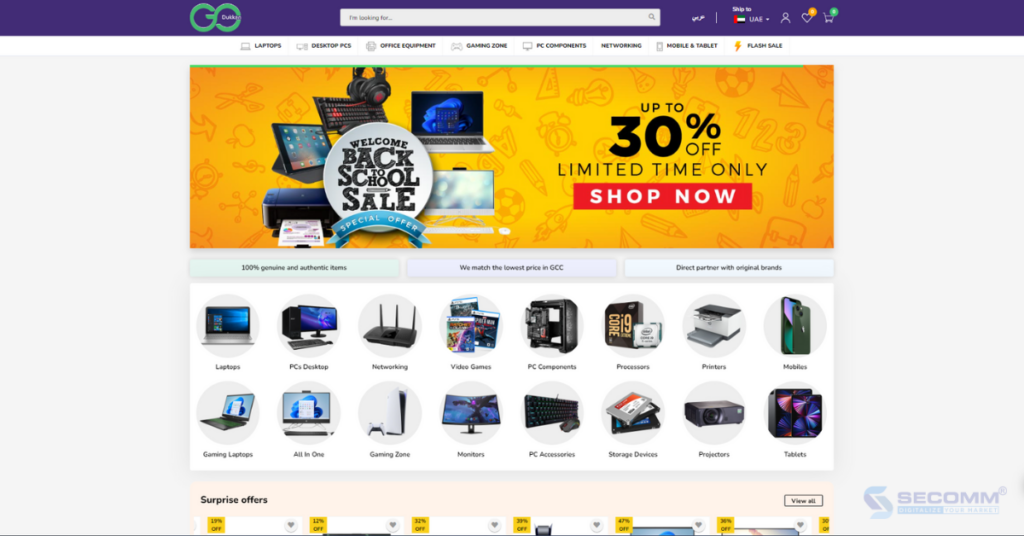
Get Er Brewed is a beverage brand specializing in brewing beer, wine, tea, etc., as well as supplying fermentation ingredients and brewing equipment. The business was established in 2013 and is based in Northern Ireland.
In recent years, Get Er Brewed has expanded its reach by launching an OpenCart website to cater to an international customer base, achieving certain successes, particularly in securing contracts for the installation of fermentation and brewing systems.
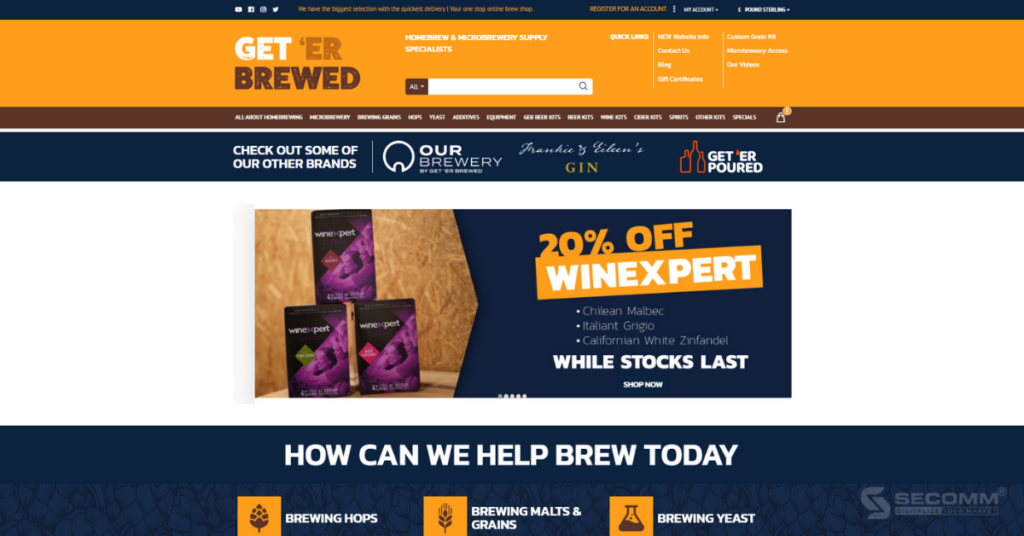
With over 20 years of experience in the pet industry, brothers Raymond and Roger decided to establish CatSmart, the largest cat-centric brand in Singapore. Currently, CatSmart is actively investing in its OpenCart website and expanding its presence beyond traditional retail branches in the “Lion City.”
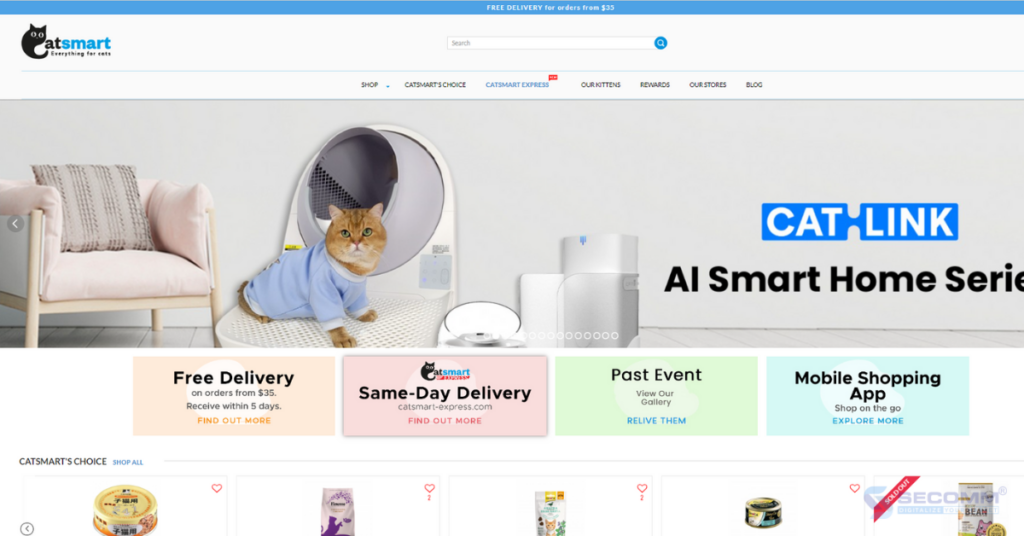
Derails is a business specializing in designing and selling model trains, established in 2010. With the boom of eCommerce, Derails began building an OpenCart website to adapt to the changing market.
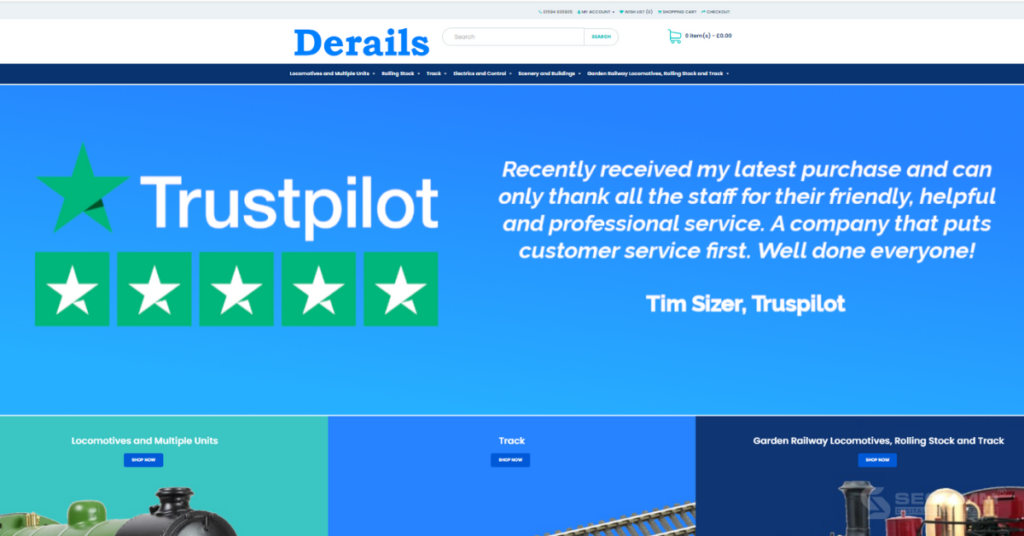
The Bottom Line
Here are 10 brands that have developed OpenCart websites and achieved success in both branding and revenue. This success serves as inspiration for other businesses seeking solutions to break through their operations and enhance competitiveness in the market.
Learn more: OpenCart vs Magento: Which Fits Your Business Best?
With extensive experience in deploying eCommerce for clients in many countries, SECOMM understands the difficulties and challenges that businesses face during implementation.
Contact SECOMM now or call the hotline at 02871089908 today for a free consultation.
 2
2
 10,583
10,583
 0
0
 1
1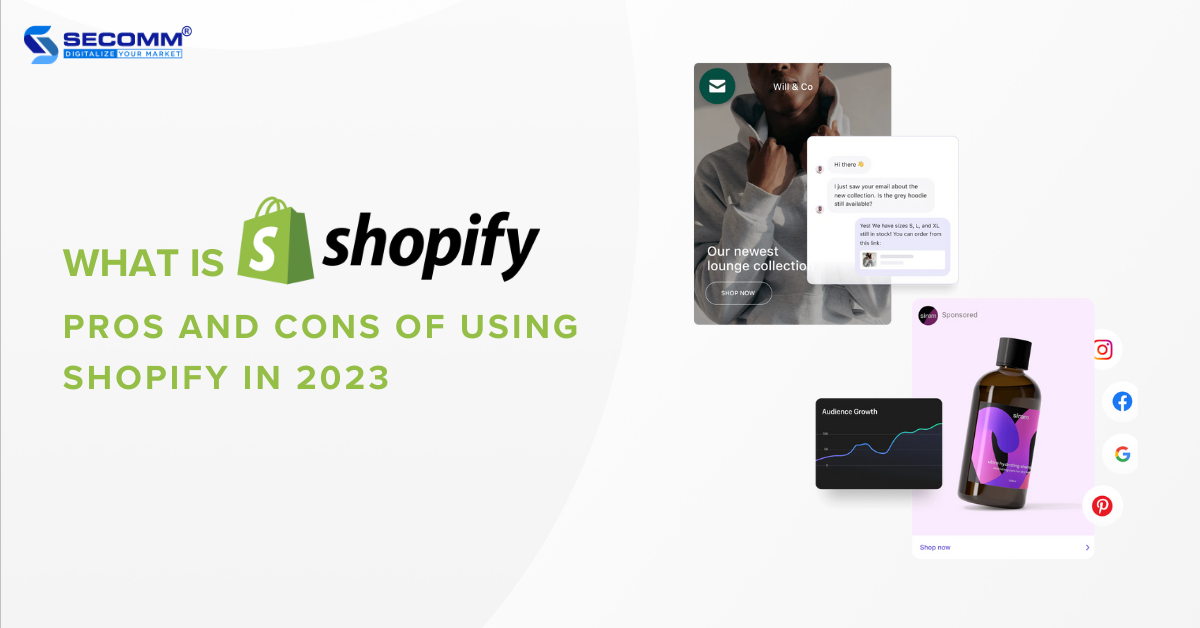
The eCommerce world is growing, and the significance of building and developing eCommerce websites has never been more crucial. Among the popular SaaS platforms, Shopify stands out as a name that commands attention.
Shopify is a SaaS platform and an outstanding solution that helps thousands worldwide turn their online business ideas into reality.
So, what is it? Why it is the top choice for eCommerce businesses, ranging from small-scale to large-scale operations. Let’s explore the power of Shopify in this article.
Shopify is a widely used eCommerce platform that allows businesses to build, develop, and manage their online store. With its user-friendly interface, even those with limited technical expertise can effortlessly navigate it easily.
Shopify operates as a Software as a Service (SaaS), requiring businesses to pay a monthly fee for usage and adhere to the platform’s regulations. However, the platform manages hosting and takes responsibility for technical issues, ensuring the security and efficient operation of the business’s eCommerce website.
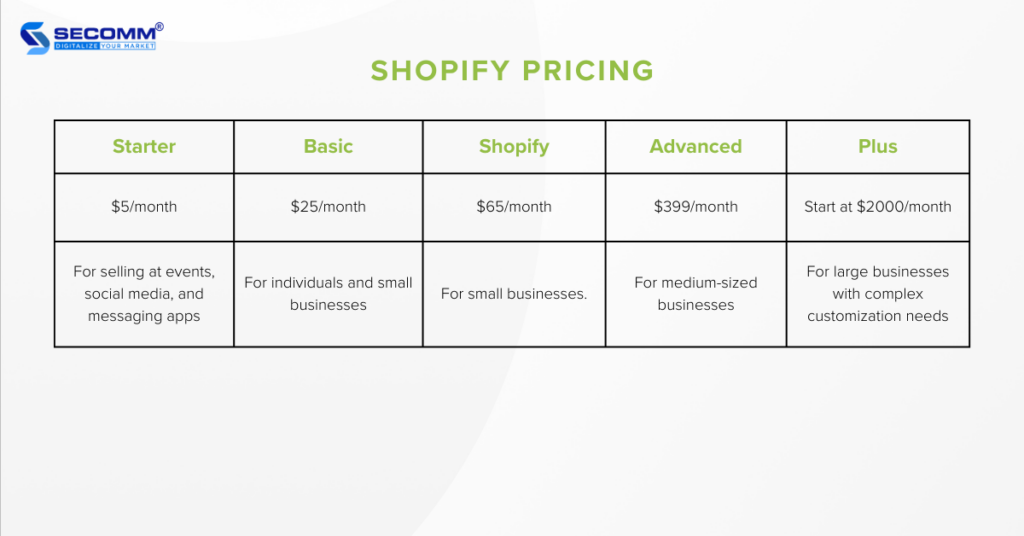
Until now, businesses have been familiar with 5 main solutions: Starter, Basic, Shopify, Advanced, and Plus. Recently, the platform introduced a new advanced solution called Commerce Components. This solution allows businesses to use the platform as a modular service, paying only for the features they need. It’s worth noting that this new solution is currently exclusive to the U.S. market.
For the Basic, Shopify, Advanced, and Plus plans, transaction fees are waived when businesses use Shopify Payments. However, in reality, this payment method isn’t available for all countries. Currently, it only supports countries in this list.
Conversely, transaction fees will apply at rates of 2%, 1%, 0.5%, and 0.15%, respectively. For the Starter plan, whether or not using it, transaction fees still apply and are relatively high at 5%.
Plus businesses using this payment method will enjoy no transaction fees. However, this exemption doesn’t apply to businesses in Austria, Belgium, and Sweden, even though these countries are included in the list.
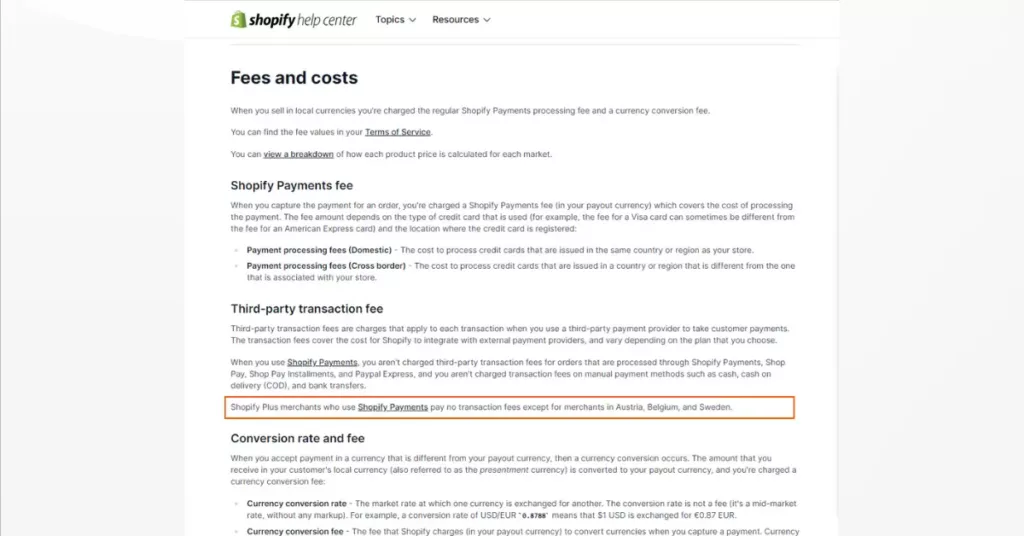
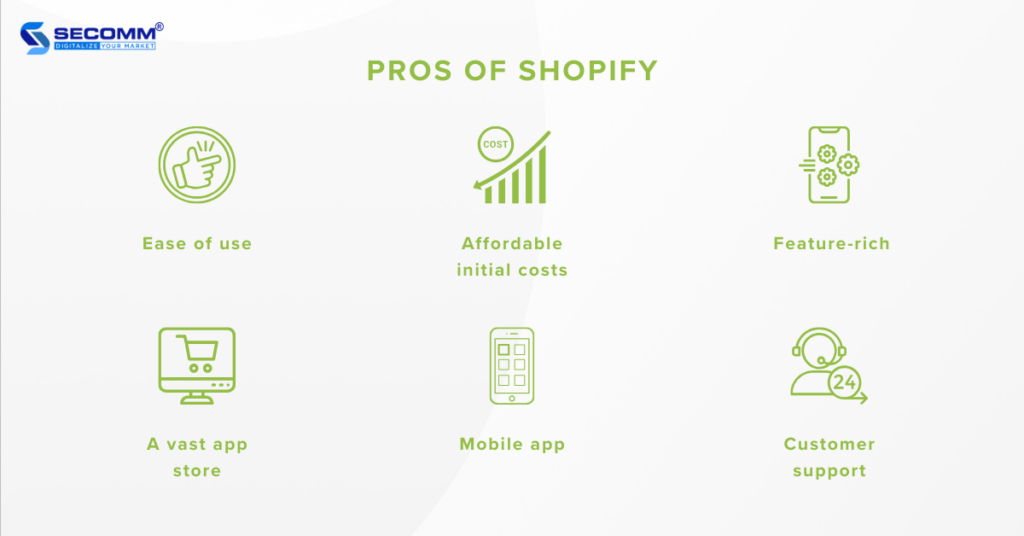
The platform is designed with an intuitive interface, allowing users with limited technical expertise to navigate it effortlessly. The platform offers a drag-and-drop editor, enabling businesses to easily add or remove products and make quick customizations.
Businesses also have the flexibility to customize layouts, colors, fonts, and font sizes, and add or remove elements and widgets from both free and premium themes.
Moreover, it offers businesses documentation and tutorial videos, ensuring a seamless and efficient setup and utilization experience.
The platform provides a range of cost-effective solutions suitable for startups and small to medium-sized businesses entering the eCommerce market. However, larger enterprises often prefer the Shopify Plus solution, given its reasonable costs of around $2,000, offering customization and scalability comparable to open-source platforms.
Moreover, as a SaaS platform, businesses pay a monthly fee for using it based on actual Gross Merchandise Volume (GMV), eliminating the need for a substantial one-time payment common with open-source platforms.
This is a versatile eCommerce platform suitable for businesses of all sizes and deployment needs. Whether for individuals, startups, or medium to large enterprises, it can provide features and tailored solutions to meet the specific needs of the business.
Some standout features that the platform brings to businesses include:
Beyond a diverse range of solutions and outstanding features, the platform offers businesses over 6,000 applications and integrations across various categories, from marketing, analytics, and shipping to inventory management and customer care. Each application is designed to address specific challenges and goals in the development of eCommerce.
Most applications and integrations in the App Store are developed by third-party businesses or independent developers. It provides resources, documentation, and tools for developers to create and release their applications on the store. While some apps offer a free version, it often comes with limited features, and businesses need to pay a monthly fee to access the full functionality.
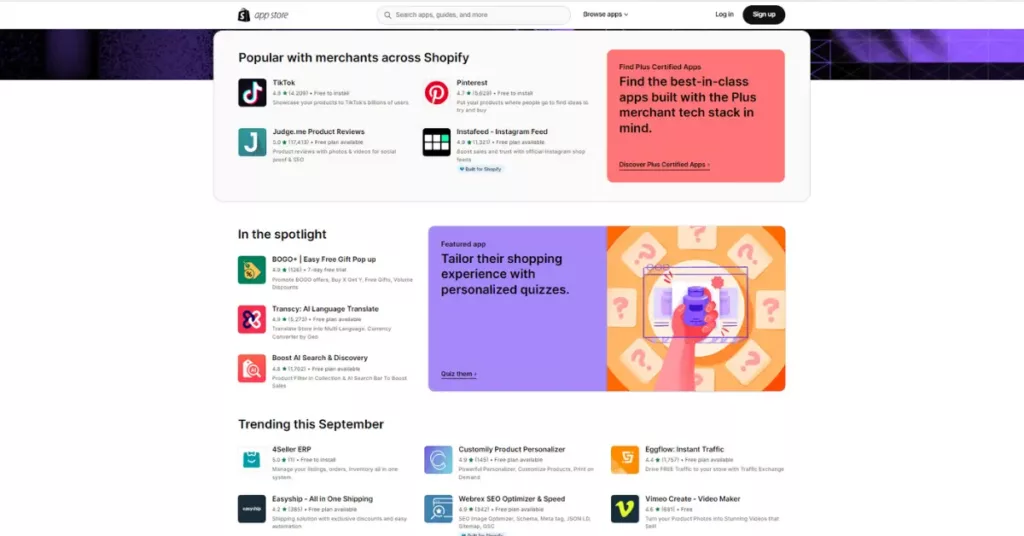
Compared to other SaaS platforms, Shopify provides businesses with up to three mobile applications for effective remote management of eCommerce operations:
The SaaS platform offers 24/7 customer support through chat, hotline, and email to address any customer issues throughout the eCommerce website development process. The level of support is equivalent for both small and large businesses. Moreover, it provides Shopify Experts services to offer businesses in-depth technical support, including web development, web design, marketing, and sales.
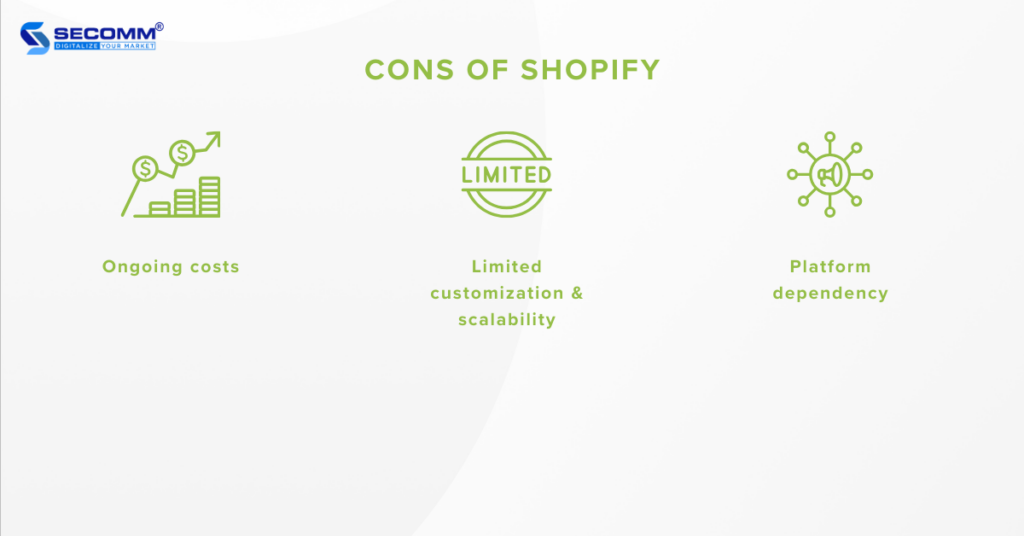
While the fees for using the plans seem reasonable, depending on the need for additional features, apps, or extensions, monthly costs may increase significantly, posing challenges for cash flow management, especially for larger businesses.
While this popular SaaS platform serves as a versatile eCommerce platform, its regular plans come with limitations in terms of customization and scalability. If a business requires a unique design or seeks freedom in designing the website interface, customizing themes on it can be restrictive and may require advanced programming skills.
Moreover, customizing third-party features and apps may add extra costs and dependencies. As an eCommerce website grows and expands, performance may be affected by increased traffic, accompanied by significant cost increases due to transaction fees (if not using Shopify Payments), app fees, and platform fees.
In such cases, the regular pricing plans (Basic, Shopify, Advanced) may not meet the business’s expectations for scalability, and businesses should consider transitioning to the Plus platform for long-term goals.
As a SaaS platform, Shopify has full control over the source code and data within the entire eCommerce website system. This means that all data related to the eCommerce operations will be locked into the platform’s database.
If it declares bankruptcy or ceases operations, all business data on this platform could be lost. However, this risk is highly unlikely. In the second scenario, when a business switches to another eCommerce platform, the exported data is typically provided in the form of a CSV file.
Get started with Shopify today!
When Tobias Lütke transformed Shopify from a snowboard-selling website to an eCommerce platform for businesses, he probably couldn’t have envisioned the significant impact it would have on the global business and technology landscape. The figure of 4.5 million active eCommerce websites is sure to increase substantially in the coming years.
Having accompanied many businesses, both domestically and internationally, in deploying Shopify website, the SECOMM team has accumulated extensive experience in web development and a deep understanding of the platform.
Contact SECOMM or call the hotline at 028 7108 9908 to get started!
 2
2
 7,150
7,150
 0
0
 1
1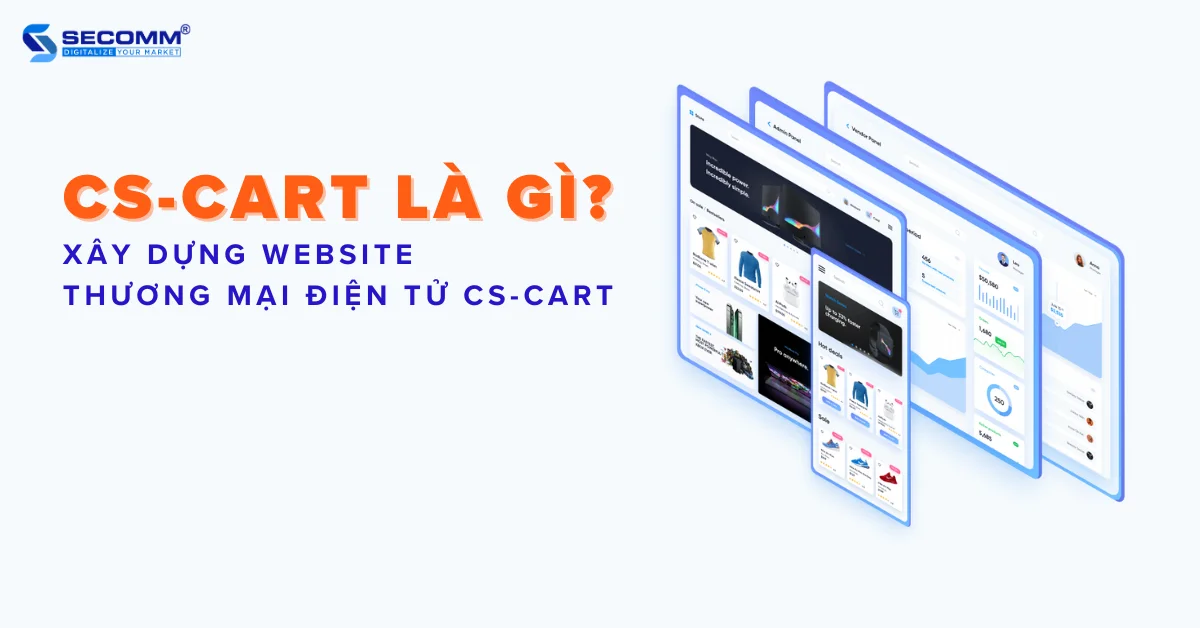
In the era of growing eCommerce, building an eCommerce website has become an essential part of how businesses approach and interact with customers. To successfully build and manage an online store, businesses will need to choose the right eCommerce platform that aligns with their business needs and wants. CS-Cart is one such eCommerce platform chosen by many medium and large-scale businesses.
According to BuiltWith, the platform currently supports approximately 13,232 websites globally, with Russia (about 3,772 websites) and the United States (about 2,809 websites) being the most prevalent markets.
In this article, SECOMM will share insights into what CS-Cart is and the advantages and disadvantages of this eCommerce platform.
CS-Cart is an open-source eCommerce platform that utilizes a SaaS (Software as a Service) model and was developed by Simbirsk Technologies Ltd. Launched for the first time in 2005, CS-Cart has gradually become one of the popular and trusted solutions used by many businesses worldwide.
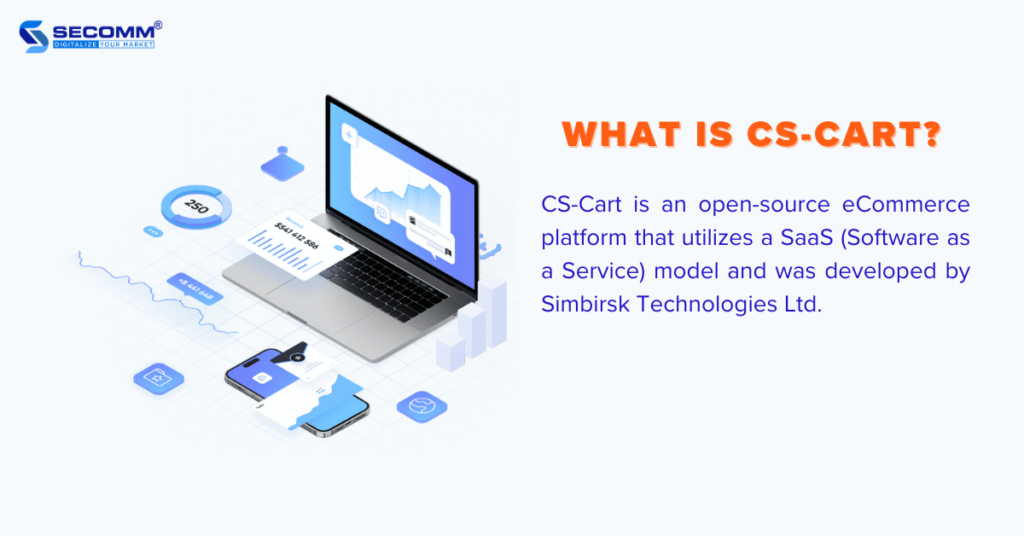
Some eCommerce websites currently using the CS-Cart platform include TechAble (USA), Yumbles (UK), Bakeshop (Australia), ToolBrothers (Germany), Inasbay (Canada), Nguyễn Kim (Vietnam), and more.
Currently, CS-Cart offers two main solutions: No-Code (a no-code e-commerce website builder) and On-Premises (an open-source eCommerce solution for website customization).
No-Code solution pricing:
On-Premises solution pricing:
Moreover, CS-Cart provides a free open-source version for businesses to freely apply for building eCommerce websites.
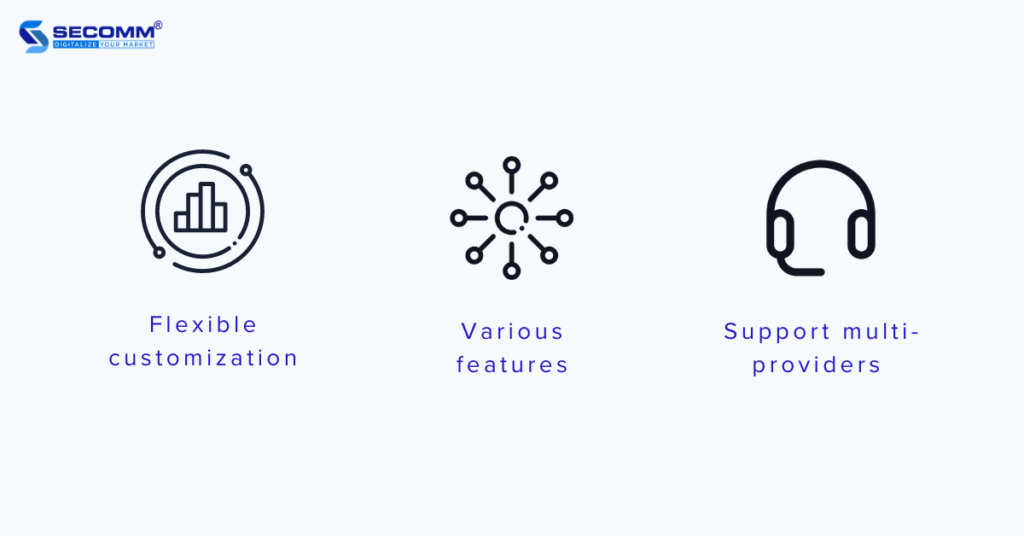
One of the standout features of the CS-Cart platform is its flexibility, supporting businesses of both moderate and large scales in the eCommerce market.
Beyond employing open-source with the PHP language, CS-Cart also implements Headless architecture, allowing businesses extensive customization capabilities. This flexibility empowers businesses to create eCommerce websites tailored to their specific needs, delivering a unique and memorable shopping experience for customers.
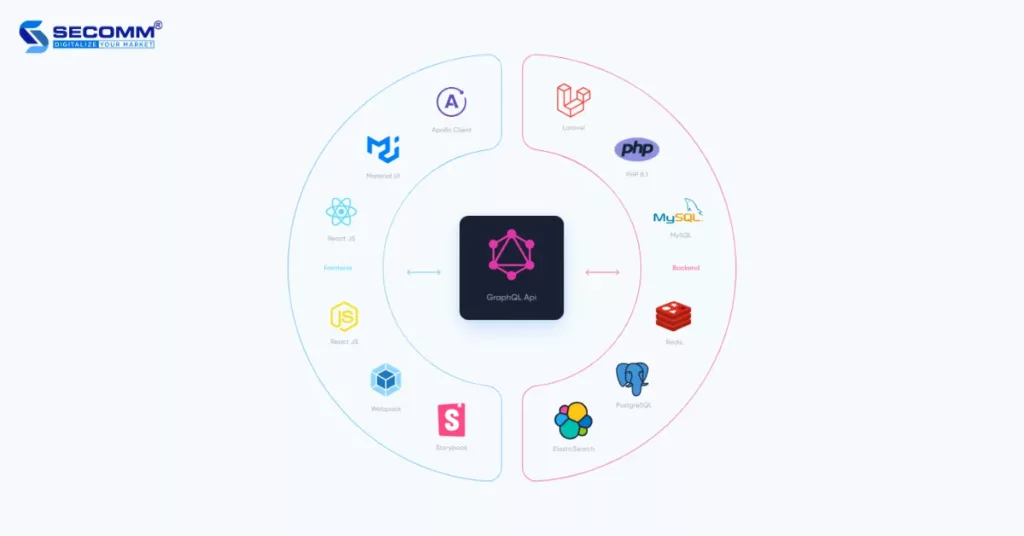
CS-Cart provides a comprehensive range of features from A to Z for operating an eCommerce system for businesses, including over 500 features and 2,000 available add-ons. From product management and order processing to marketing and SEO optimization, among others
This richness helps businesses minimize the need to integrate numerous third-party plugins, streamlining the technology stack of the eCommerce website.
CS-Cart is highly praised for its ability to connect and manage multiple suppliers with customers. This multi-vendor capability optimizes the management of different sellers, inventory, and payments, making the website system an ideal solution for businesses looking to oversee multiple suppliers on a single platform.
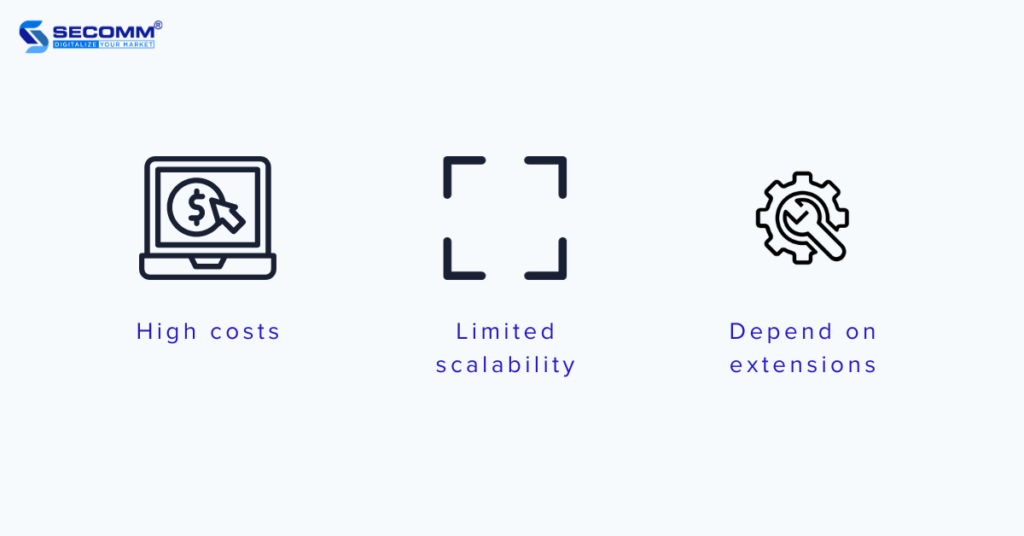
The paid versions, No-Code, and On-Premises, are considered to have relatively high usage costs. Additionally, the free version of CS-Cart may not be sufficient to meet the needs of building an eCommerce website for businesses, especially larger ones.
Businesses should note that many advanced features and functionalities will require purchasing licenses or additional add-ons. The costs associated with these add-ons and development and customization expenses can accumulate, particularly for small businesses or startups with limited budgets.
While CS-Cart is suitable for a variety of business scales, it may not be the most scalable solution for rapidly growing businesses with high levels of traffic and transactions. As businesses expand, performance issues may arise, necessitating improvements to the system’s performance or a transition to another platform.
Although CS-Cart provides many comprehensive features, some businesses feel the need for specific functionalities, requiring the purchase or development of additional third-party add-ons outside the CS-Cart ecosystem.
Relying heavily on third-party add-ons can lead to issues of compatibility, security concerns, and difficulties during the upgrade process.
The Bottom Line
In general, CS-Cart is an eCommerce platform suitable for businesses seeking an open-source solution, especially those with a medium scale. However, when upgrading to a more specialized and complex eCommerce website system, businesses will need to invest additional costs and resources to scale up the system.
These are the details about CS Cart, along with its notable advantages and disadvantages that businesses should consider when developing an eCommerce website.
After years of implementing eCommerce solutions for various businesses across different countries, SECOMM has accumulated valuable experience in helping businesses build and develop effective eCommerce websites.
Contact SECOMM or call the hotline at 02871089908 for advice on choosing a platform and deploying eCommerce today!
 2
2
 7,752
7,752
 0
0
 1
1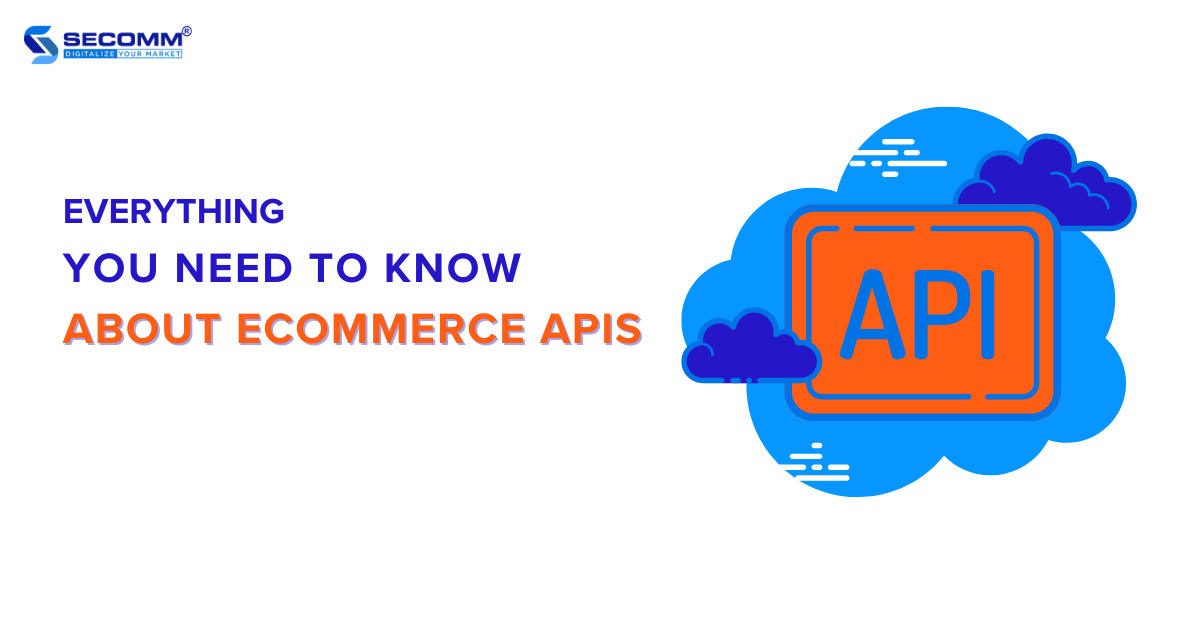
Businesses going headless aim to integrate with third-party applications or services to extend capabilities, boost performance, and enhance the flexibility of their eCommerce systems. Therefore, they have to understand eCommerce APIs or application programming interfaces.
This article will provide a brief overview of what eCommerce APIs are, how they work, the types, and roles for going headless, and the advantages gained through their integration.
Learn more: What is Headless Commerce?
eCommerce APIs are application programming interfaces (APIs) that enable external applications and systems to access and interact with the functionalities and data of an eCommerce platform.
For example, an eCommerce API allows businesses to access product information, place orders, handle payments, manage inventory, or integrate with third-party services such as shipping, analytics, email marketing, and delivery.
They operate based on a request-and-response model. When an application or system intends to access or perform a function on the eCommerce system, it sends a request to the API through an HTTP method such as GET, POST, PUT, or DELETE.
This request contains information like the URL address of the API and necessary data. Then, eCommerce APIs process the request and respond to the application or system that initiated the preceding request. This response includes an HTTP code indicating the outcome of the request (success or failure) and may contain data in formats like JSON, XML, etc.
APIs in the field of eCommerce are often published in the form of documentation known as “API documentation”. This documentation contains detailed instructions on how to establish connections and share data through the API. This helps businesses and developers understand how to use each type of API effectively.
There are various types of eCommerce APIs depending on their functions and specific use cases. Some common include:
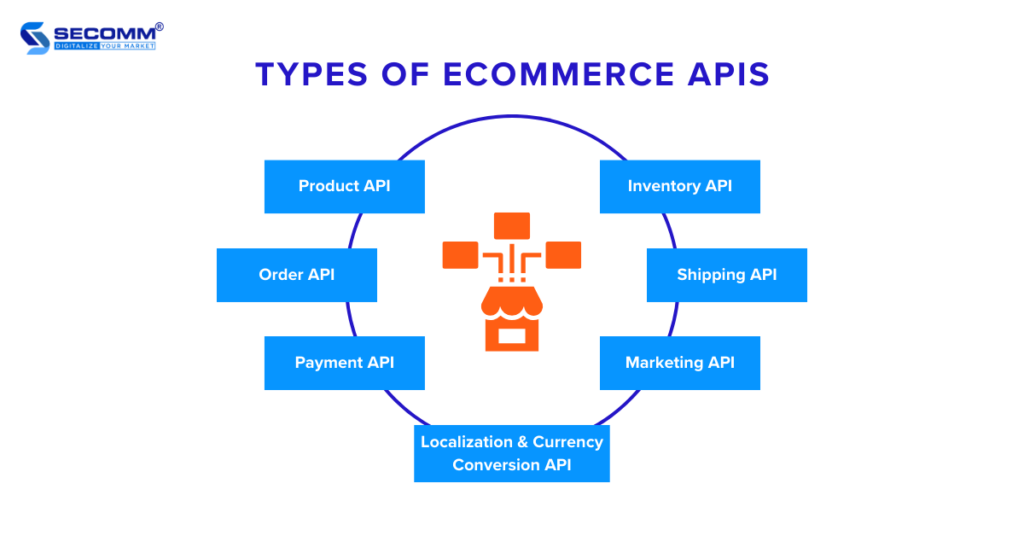
Headless is an eCommerce model that allows the separation of the user interface (frontend) and the management system (backend) of an eCommerce website. is also referred to as the “API-first” approach because the frontend and backend communicate with each other through an API layer.
Therefore, eCommerce APIs play a crucial role in connecting the frontend and backend. For instance, when a customer accesses a business’s eCommerce website and places an order, the website’s frontend can use eCommerce APIs to send requests to the backend to check product availability, calculate the order value, and create the order.
The backend can then process these requests and provide the necessary information to display to the customer.
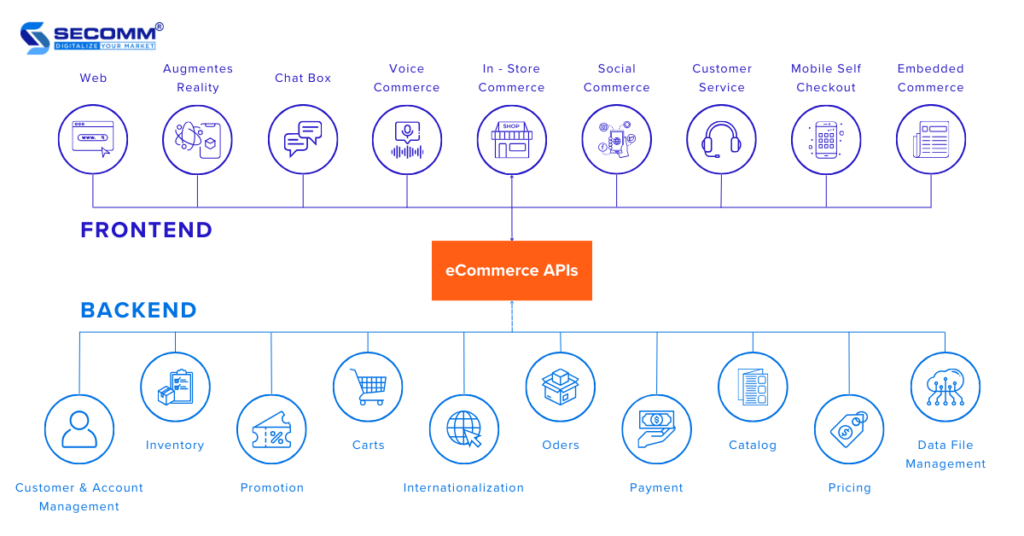
eCommerce APIs allow the frontend to access and interact with the functions and data of the backend. They also enable the backend to integrate with third-party services and systems such as CMS, CRM, ERP, and DXP. Additionally, eCommerce APIs help businesses create various user interfaces for diverse sales channels and devices, including websites, mobile apps, voice commerce, wearables, AR/VR.
These eCommerce APIs empower businesses to go headless flexibly, providing not only a multi-channel shopping experience but also facilitating rapid and efficient expansion and development in the international market.
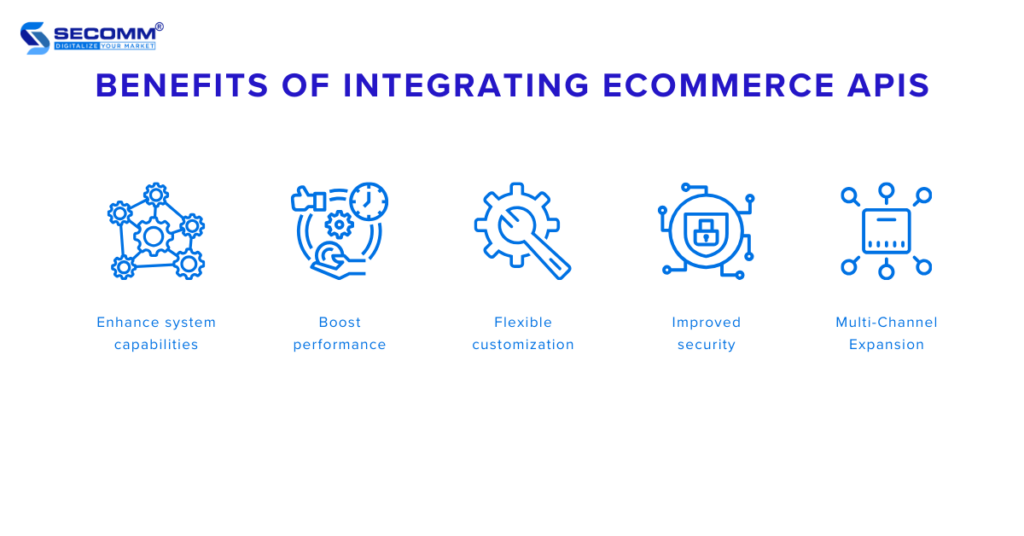
Businesses can add new functions and features to their eCommerce websites by using available APIs or creating their own APIs. This allows businesses to easily expand the capabilities of their eCommerce systems, providing customers with an enhanced shopping experience.
Businesses can optimize the performance of their eCommerce websites by leveraging eCommerce APIs to automate business processes, minimizing potential errors. For example, a business can use APIs to synchronize data across different systems for more efficient management and operations.
Businesses have the freedom to customize their eCommerce websites according to their needs and preferences by integrating APIs to connect with third-party applications and systems. For example, businesses can use APIs to create a unique user experience, incorporating new technologies such as AI, AR/VR, and blockchain.
Third-party applications and systems, especially payment systems, often include strict security protocols. Therefore, integrating them into a business’s website through APIs enhances the security of the site. This helps safeguard business data, customer information, and payment details from the risk of theft.
APIs enable businesses to integrate with various user interfaces, allowing them to expand their business operations across multiple sales channels, including websites, mobile apps, and even social media.
The Bottom Line
Here is what you need to know about eCommerce APIs – application programming interfaces that enable various applications and systems to interact with each other efficiently within the eCommerce system. In other words, eCommerce APIs act as a bridge between the frontend and backend in the Headless model, allowing businesses to customize operations flexibly and provide customers with a unique and seamless shopping experience.
Contact SECOMM or call the hotline at 028 7108 9908 to learn more about integrating eCommerce APIs and going headless. We have a team of experienced and specialized experts to turn your business ideas into reality and accompany businesses on their eCommerce journey.
 2
2
 6,672
6,672
 0
0
 1
1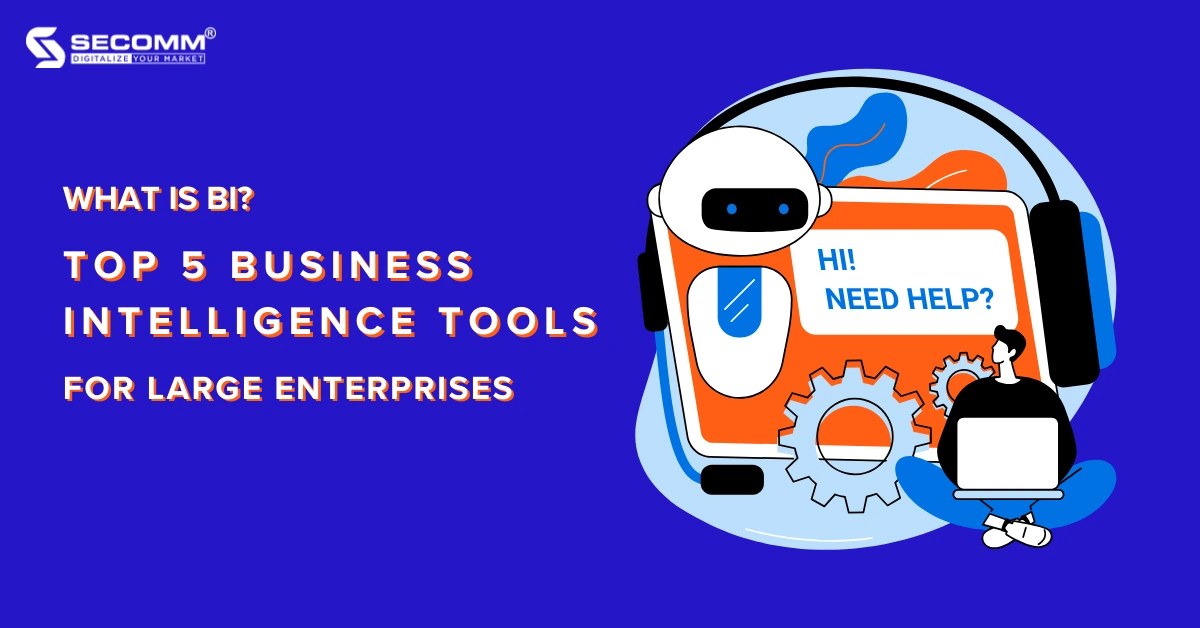
Trong thời đại thương mại điện tử đang ngày càng lên ngôi như hiện nay, việc thu thập, phân tích và ứng dụng thông tin kinh doanh là một yếu tố quan trọng để nắm bắt được các cơ hội mới trong thị trường.
In the current era dominated by eCommerce, gathering, analyzing, and applying business information is crucial to seize new opportunities in the market. Business intelligence (BI) can be an invaluable tool for managing corporate data for enterprises.
So, what is Business Intelligence, and what makes it the perfect choice for large businesses?
Business Intelligence (BI), often referred to as intelligent business or corporate intelligence, is an information technology management system involved in collecting, organizing, analyzing, and transforming business data into valuable information to support decision-making and guide business strategy for enterprises.
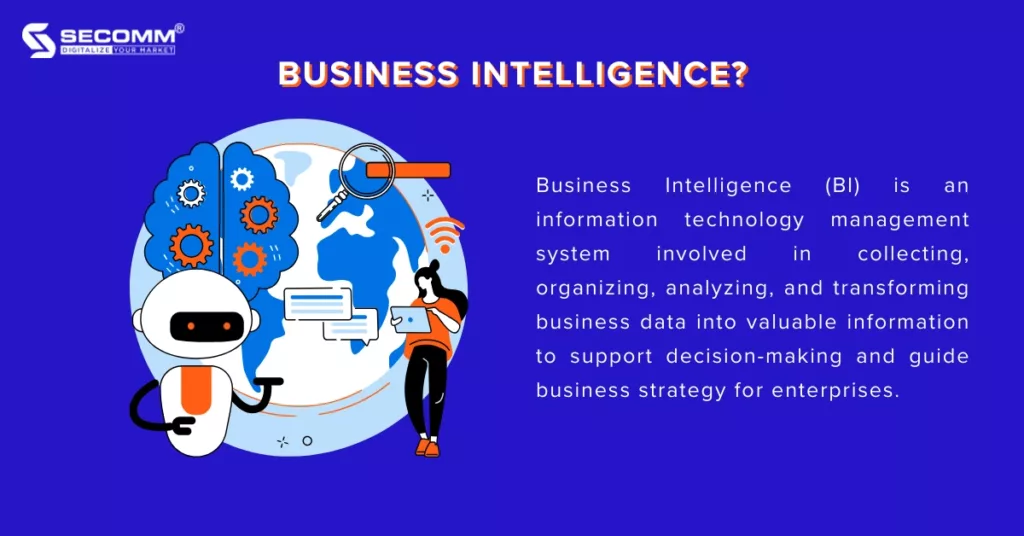
BI systems help businesses track and measure key business performance indicators such as revenue, profit, profitability, customer satisfaction, consumer behaviour, favourite products, etc. Through the analysis and comparison of this collected data, BI systems enable the visualization of trends and the most suitable business models, thereby assisting corporate managers in developing appropriate business strategies.
A BI system is a collection of technologies, tools, and methods used to deploy the BI process in a business. This BI system typically includes components such as:
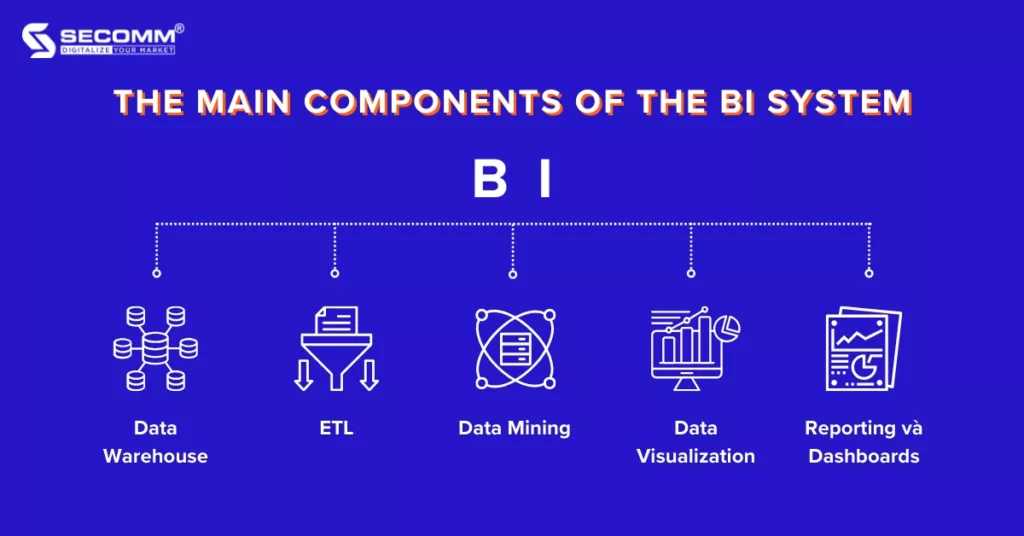
Tableau is an interactive data visualization software focused on business intelligence. Established in 2003 in Mountain View, California, and now headquartered in Seattle, Washington, Tableau was acquired by Salesforce in 2019 for $15.7 billion.
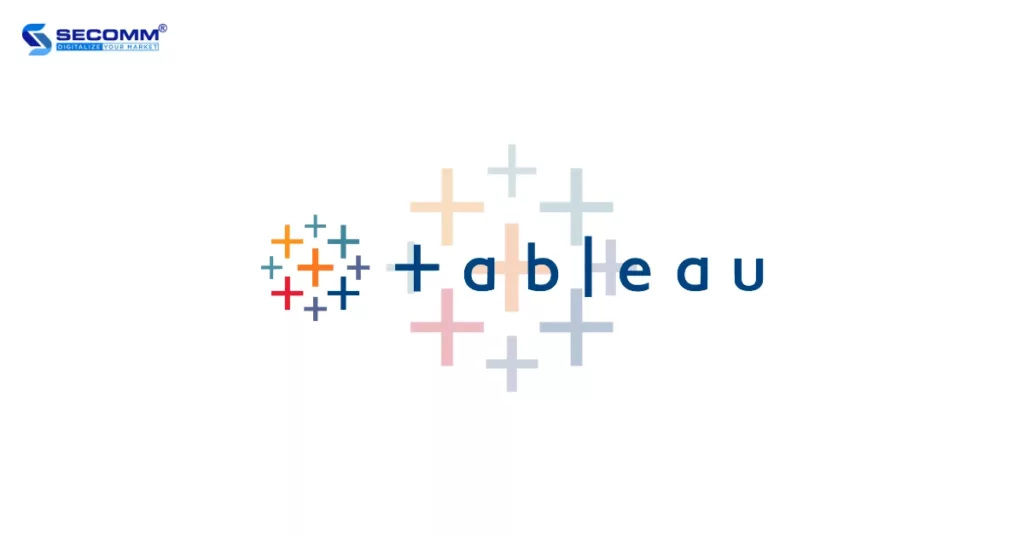
Advantages:
Disadvantages:
Microsoft Power BI is an interactive data visualization software developed by Microsoft in 2011, with a primary focus on business intelligence.
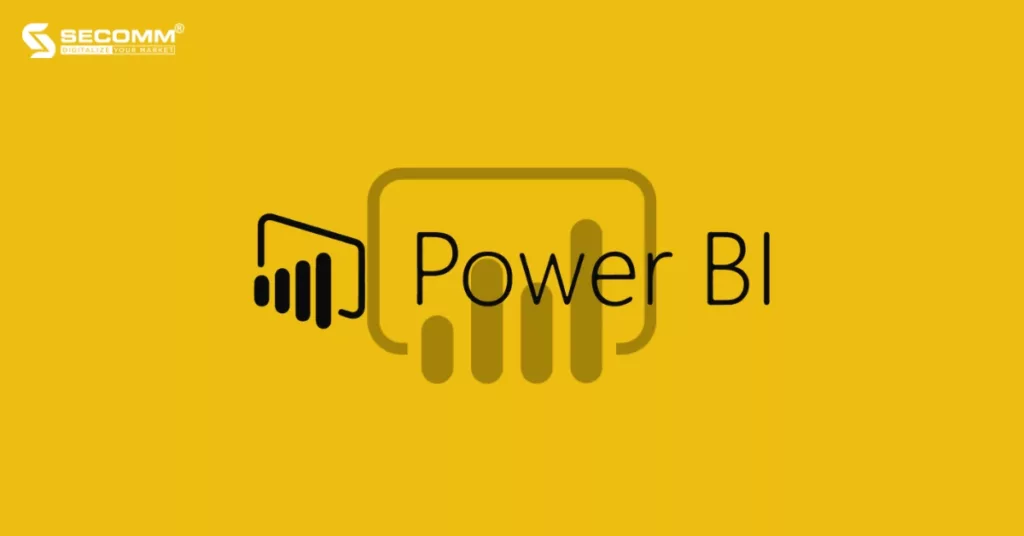
Advantages:
Disadvantages:
Looker is a popular BI system used for data visualization and analysis in large enterprises. This system allows users to access, explore, and analyze data most intuitively.
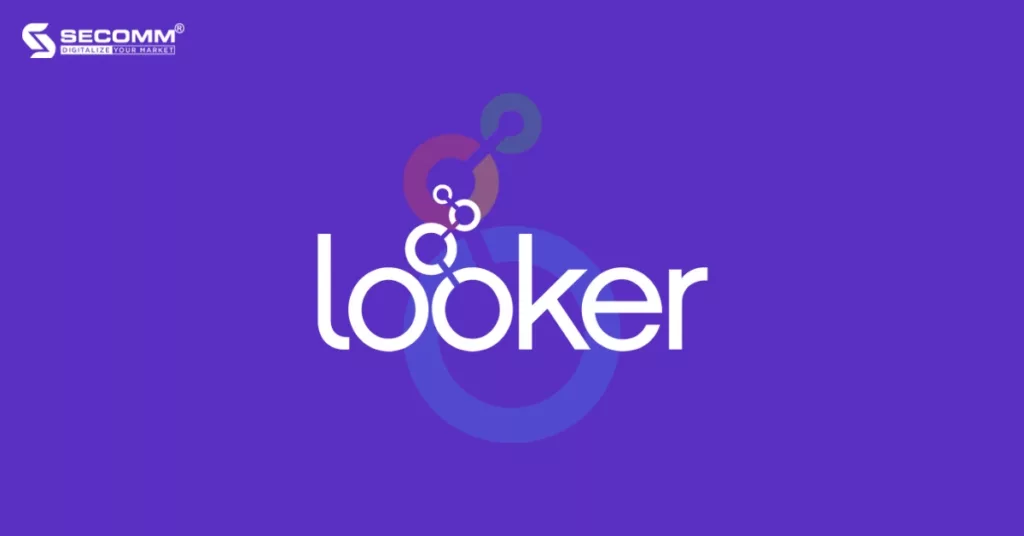
Advantages:
Disadvantages:
Amazon QuickSight is a serverless BI service operating on the cloud, developed by Amazon and released on February 22, 2022. Amazon QuickSight provides tools for data visualization, interactive dashboards, and machine-learning-supported data analysis.
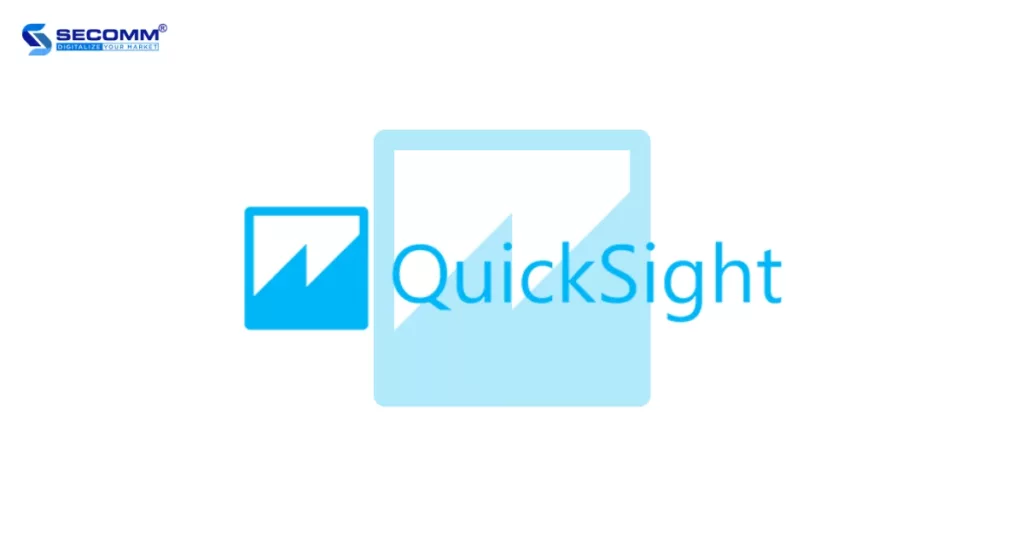
Advantages:
Disadvantages:
ThoughtSpot is a self-service BI system developed in 2012. This system allows users to easily search, query, and visualize data, making it a popular choice among businesses.
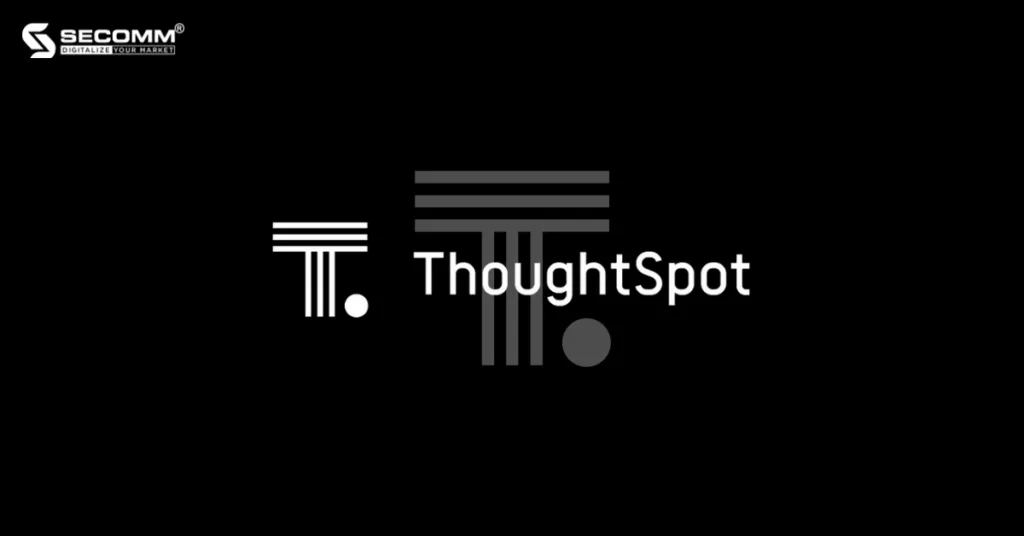
Advantages:
Disadvantages:
View more: What is PIM? The 5 best PIM software for large enterprises
The above is a summary of 5 BI software options for large-scale enterprises, detailing the individual advantages and disadvantages of each system. Depending on the needs for BI system development and budget planning, businesses can consider and choose the most suitable BI solutions.
Contact SECOMM to learn more detailed information!
 2
2
 12,357
12,357
 0
0
 1
1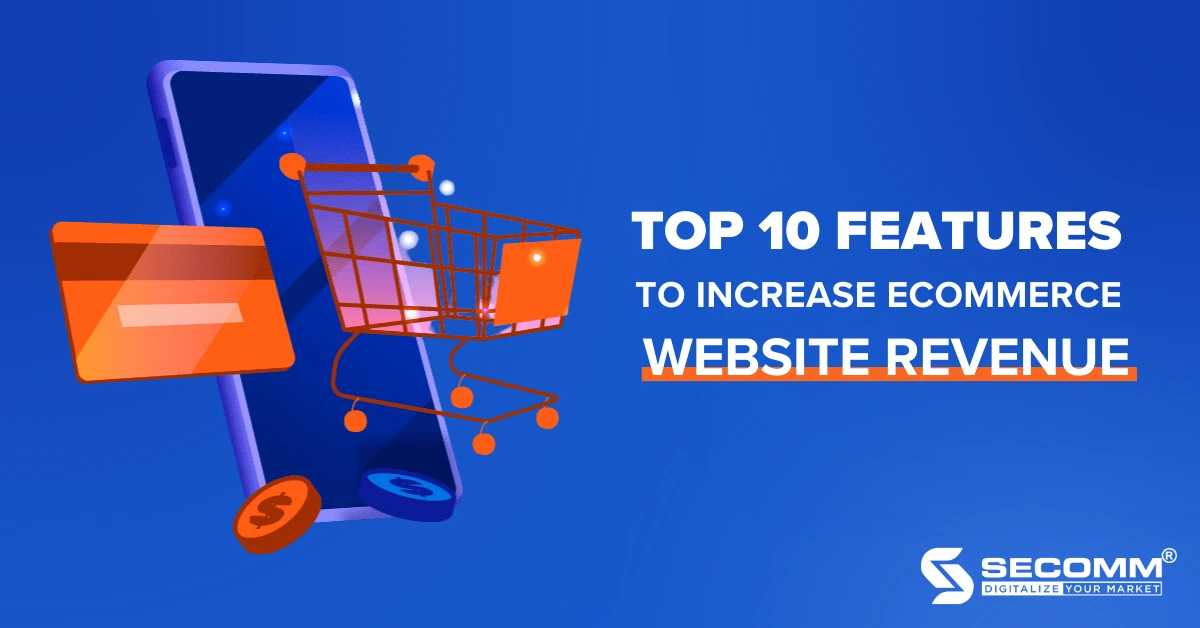
eCommerce has become an essential trend for successful business in the Vietnamese market. According to a report from Facebook’s SYNC Southeast Asia and consulting firm Bain & Company, Vietnam is expected to be the fastest-growing eCommerce market in Southeast Asia by 2026, with a total eCommerce goods value reaching $56 billion, 4.5 times that of 2021, ranking second in the region.
To harness the advantages of this thriving market, businesses need an eCommerce website system with a full range of functionalities, from basic to advanced. Therefore, planning a step-by-step construction of the functional system is crucial to avoid situations where there are ‘missing essentials’ or ‘unnecessary features’ for the business.
Here are some specialized functionalities that any eCommerce website system for businesses in this lucrative market should have!
Images and videos play a crucial role in allowing customers to evaluate the quality of products, especially high-involvement items like jewellery, watches, gemstones, etc.
Additionally, businesses can incorporate features such as 360-degree views, Augmented Reality (AR), or Virtual Reality (VR) to help customers get a comprehensive and realistic view of the product’s quality on the eCommerce website.
In today’s era where ‘good wood comes with good paint,’ investing in high-quality images or videos enhances the impression of a business’s products in the eyes of consumers and demonstrates the professionalism of the brand. Consequently, businesses can keep customers engaged on the website for longer periods, reduce bounce rates, and boost online sales.

One of the essential features of modern eCommerce systems is the ability to filter and search for products effectively, such as live search or ElasticSearch in Magento.
This feature plays a role in directing customers to the detailed product information they are looking to purchase, enhancing the overall customer experience and shortening the shopping journey.
As a result, businesses can improve customer satisfaction and streamline the purchasing process.

Sometimes, customers may be interested in a particular product but decide to purchase it later, or they might find an intriguing product and want to check detailed information before making a buying decision. In such cases, a wishlist allows customers to store these products for easy retrieval when they are ready to make a purchase decision.

Although promotional programs are not unfamiliar to consumers in the eCommerce market, this feature has never gone out of fashion for businesses. According to Google, up to 75% of customers view advertisements before making a purchase, and 84% of customers use information from ads to research product details.

Frequently displaying promotional programs/deals such as flash sales, D-Day promotions, festive season offers, etc., will stimulate customers’ ‘sale hunting’ desires, increase website traffic significantly, and boost sales for businesses.
After leveraging and analyzing the collected data from customers, an advanced eCommerce website system can provide suggestions for similar or related products, aiming to increase the quantity and value of orders. This, in turn, contributes to the growth of online sales revenue for the business.

Up-selling is a technique aimed at selling a more expensive version of a product that a customer already has or intends to purchase by adding new features or accessories to that product. Meanwhile, Cross-selling is a technique aimed at selling complementary products, items that may be related to the product a customer has purchased or intends to buy.
In addition to suggestions for similar and related products on the homepage, product category page, product detail page, and search results page, Up-selling and Cross-selling are also designed to appear on the checkout page to encourage customers to spend more.
The quick order placement feature is an essential function for an eCommerce website. To expedite the shopping process, it’s not enough to have a step-by-step ordering process. Businesses need to design a ‘quick order’ function that allows customers to add products to the checkout page immediately. This will be a significant advantage for businesses to expedite the customer’s ‘order confirmation’ process, thereby generating a surge in online sales.

Typically, the default checkout process on an eCommerce website is a step-by-step procedure, meaning that each step is completed automatically only after the customer finishes the previous one until the entire process is completed.
According to a report from Adobe, 88% of customers abandon their purchases simply because the checkout process takes too much time and is complicated. To streamline this cumbersome payment process, the One Step Checkout feature has been introduced. This feature provides essential information to customers in just one step, facilitating faster transactions and creating a smoother payment process.

Diverse payment methods, including card payments (local cards, VISA, Mastercard), e-wallets (MOMO, Zalopay), payment gateways (OnePay, VNPay, PayPal, Stripe), and Cash on Delivery (COD), will enhance the shopping experience for customers. Additionally, businesses should stay updated on emerging payment trends in the eCommerce market, such as creating their digital wallets, implementing Buy Now – Pay Later options, etc., to build a Loyalty Program and provide more payment choices for customers.

However, to diversify payment methods, businesses should choose open-source eCommerce platforms such as Magento, WooCommerce, and OpenCart to have high integration capabilities and ensure compatibility between payment software and the company’s website.
According to a report from Customer Gauge, 92% of customers will read product reviews from other users before making a purchasing decision. Therefore, the product review feature is always prioritized by businesses to be included in the functionality system from the beginning to enhance the brand’s credibility.
A website with many positive comments from previous users will attract attention and trust from potential new customers, laying the foundation for revenue growth for the business. In addition, negative reviews will help businesses identify the weaknesses of the product, thereby motivating them to improve product quality and services for the future.

In addition to a visually appealing interface and standard UI/UX, the ability to be compatible across multiple devices such as desktops, smartphones, and tablets is a mandatory feature that must be present on the interface of an eCommerce website. This is not only a factor affecting the Omnichannel experience of customers but also a criterion that influences SEO and rankings from Google.

Furthermore, many other features need to be considered for integration into the functional system of the eCommerce website of the business. This will depend on the strategy and business model of each enterprise, as well as the eCommerce platform the business is using.
With SaaS platforms, businesses will not have many options for features since these systems are pre-built, making it difficult to modify the source code and potentially causing instability if there are automatic edits or additions/removals of features.
In contrast, with open-source platforms, businesses have the freedom to choose features to build at each stage of brand development, as well as the ability to integrate with third-party utilities more easily than SaaS platforms.
With deep expertise and experience in developing complex eCommerce systems across multiple countries such as Vietnam, Australia, the US, and New Zealand, SECOMM understands the challenges in the process of building and deploying eCommerce functions that businesses are currently facing.
Contact SECOMM now for a free consultation on detailed eCommerce system development solutions!
 2
2
 10,088
10,088
 0
0
 1
1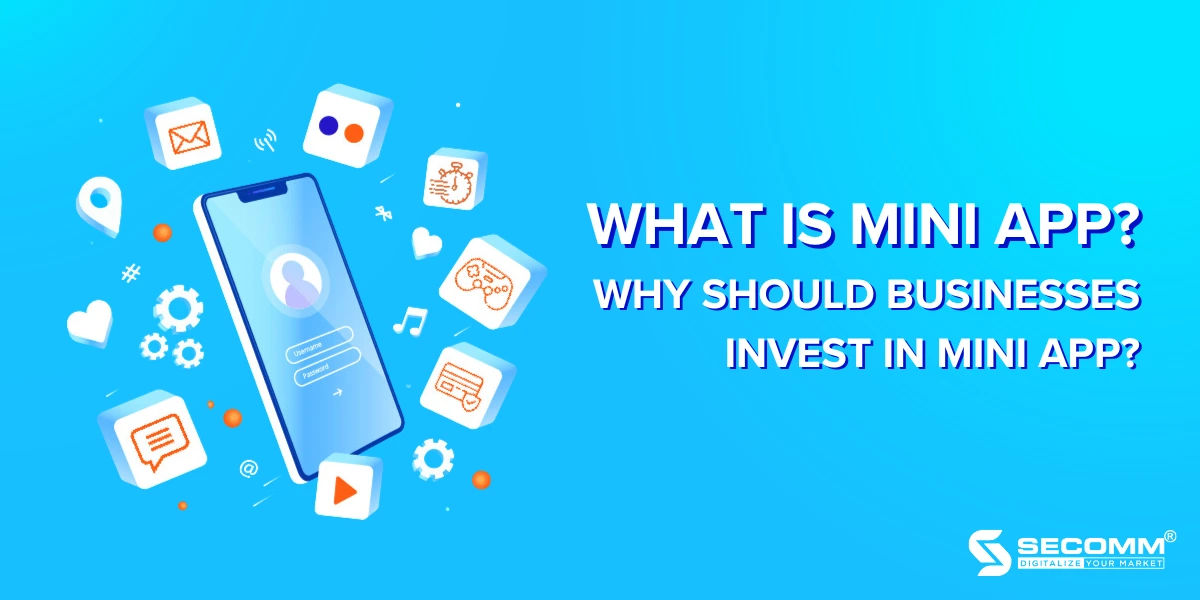
Mini Apps or Mini Programs are small applications developed within Super Apps, allowing users to access them without the need for frequent downloads or updates like Native Apps (applications for Android and iOS) or Hybrid Apps (cross-platform applications)
Currently, there are various types of these apps, but the most popular ones include:
For example: Mini App on Momo
In addition to internal apps like ‘Heo Đất Momo’ or ‘Đi bộ cùng MoMo,’ MoMo has ambitious plans to expand its ecosystem by integrating these apps from partner brands. This e-wallet has allowed the integration of these apps from various brands in different sectors such as 7Eleven, AhaMart, Highlands Coffee, etc.
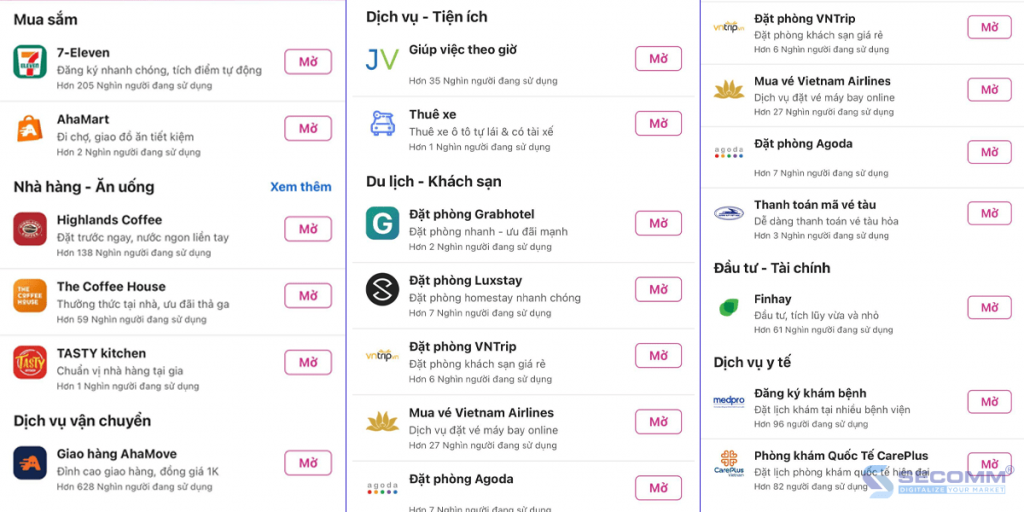
All Super Apps such as MoMo, Tiki, Shopee, Lazada, and Zalo allow other brands to register for free. However, businesses must pay for in-house IT teams or outsource to external units to develop these apps.
Compared to Native Apps or Hybrid Apps, Mini Apps have a simpler framework (pre-written code segments) and useful APIs (Application Programming Interfaces), enabling developers to deploy applications quickly within a cost-effective budget.
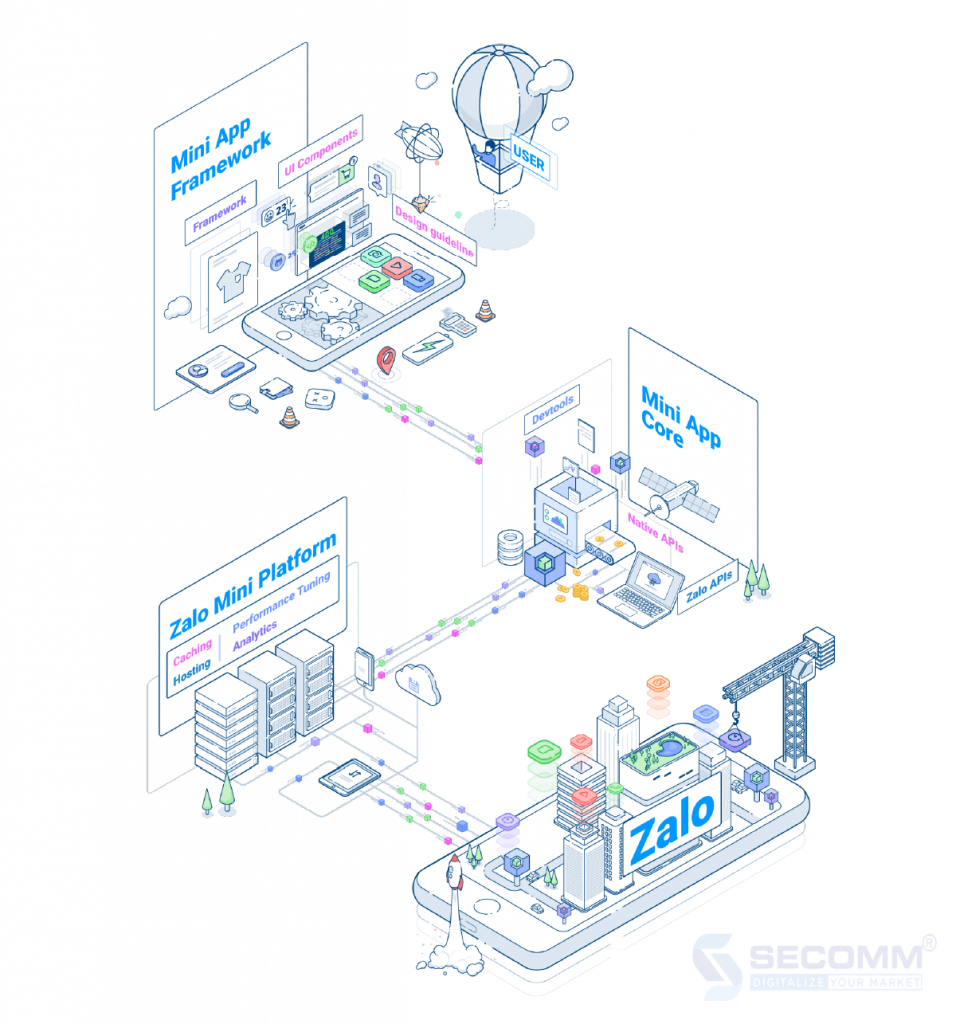
When businesses release these apps on Super Apps such as MoMo, Zalo, Tiki, Lazada, and Shopee, these brands gain access to and leverage millions of existing users. Here are the user statistics for some of these platforms:
Moreover, these apps can also take advantage of the existing utilities within the ecosystem of these “Giant” Apps, such as online payment, delivery services, marketing tools, etc.
These apps typically have very low file sizes, averaging around 10MB. This allows these applications to deliver a smooth user experience. By leveraging the ecosystem provided by “Giant” Apps, customers can have a seamless experience encompassing various activities such as shopping, payment, order tracking, customer support communication, voucher accumulation, etc., all within a single application.
During the eCommerce journey, businesses go through various stages: Social media commerce (Facebook, Zalo) → Selling on eCommerce platforms (Shopee, Lazada, Tiki, Sendo) → Mini App → Basic eCommerce website and app → Advanced eCommerce website and app.
Among these, these apps serves as a perfect stepping stone for businesses to adapt to technological infrastructure, navigate the eCommerce environment, and launch more effective online business campaigns.
While these apps are no longer unfamiliar globally, the term is still relatively new in Vietnam. Currently, in Vietnam, only Tiki has a dedicated team developing Mini Apps for businesses on the Tiki platform (Tini App). To develop these apps on other Super Apps, businesses must engage with development teams or agencies specialising in this area.
When releasing a Mini App, businesses must trade off the risk of customer data being in the hands of the ‘big players’ because all source code and data are stored on the servers of the “Giant” Apps.
Not expressing the full uniqueness of the business: Although each app is unique to individual businesses, it has to adhere to certain standards set by the “Giant” Apps, including frameworks, APIs, UI components, etc., to synchronize the interface with the ‘parent app.’ While this can provide a consistent user experience, it may not showcase the brand’s distinct personality.
In general, these apps serve as a perfect stepping stone for any business looking to enter the eCommerce market by leveraging the advantages of “Giant” Apps. However, limitations such as technical resources, user data, and brand positioning need to be carefully weighed before making a final decision.
 2
2
 17,643
17,643
 0
0
 1
1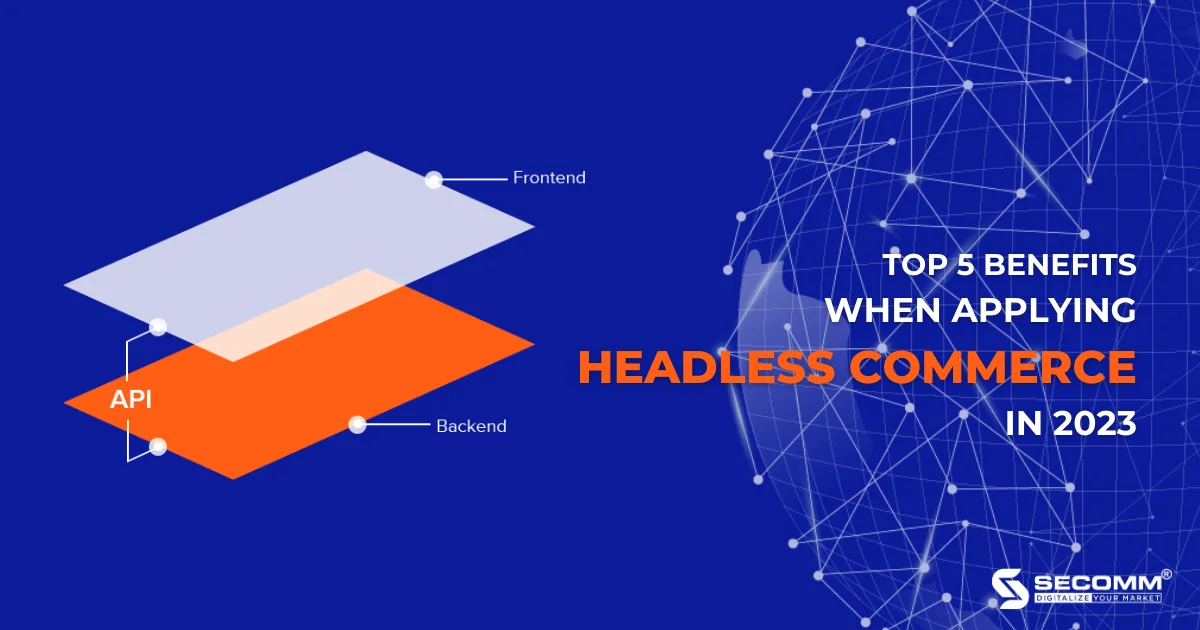
In just a decade, eCommerce has become the epicentre of the online business market, undergoing continuous and robust growth. This is evident in the explosion of mobile commerce (m-commerce), the emergence of social commerce, and shifts in consumer behaviour and expectations.
So, how can businesses adapt to the ceaseless changes in the market? The answer lies in embracing new eCommerce technologies, one of which is Headless Commerce.
Today, businesses have many choices for building an eCommerce website, but fundamentally, the structure of a website includes the following main parts:
In traditional eCommerce models, businesses often use the monolithic model, which was developed over two decades ago. At that time, the monolithic architecture was the only choice for eCommerce businesses because there were no alternatives other than building, continuously updating, and maintaining.
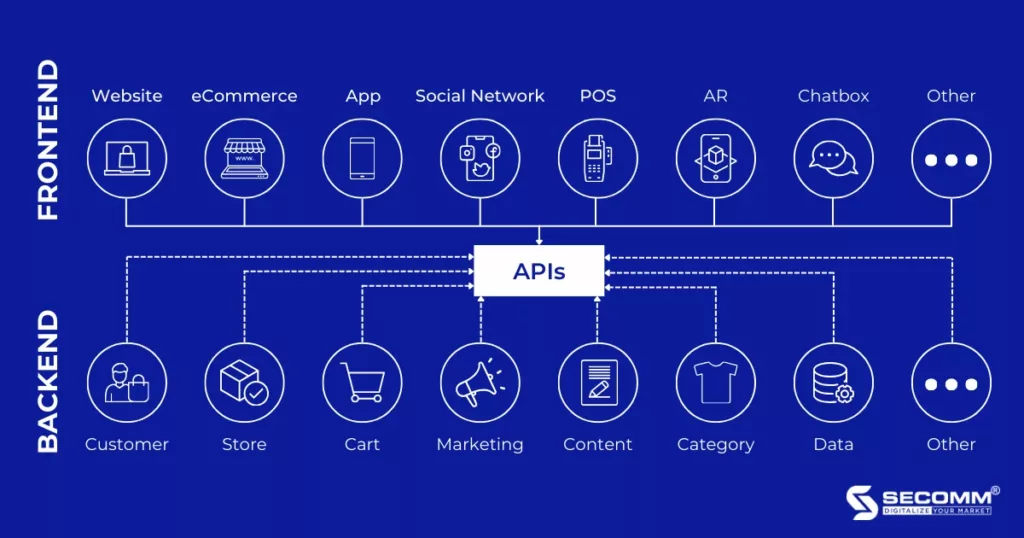
In the Monolithic Model, the frontend and backend are tightly connected, so any changes to the website require improvements in both. Therefore, every frontend change leads to a change in the backend structure and vice versa. Hence, every technology decision becomes riskier, and more complex, directly impacting the entire eCommerce website system.
On the other hand, Headless Commerce is an eCommerce architecture in which the frontend is separated from the backend, and connected through APIs. This allows businesses to easily customize and update functionality without interfering with the user interface or CMS pages.
For that reason, Headless Commerce has many competitive advantages compared to Monolithic Model:
| Headless Commerce | Monolithic Model |
| Separate frontend and backend but still “connect” seamlessly with API | Connect frontend and backend using common protocols (HTML, CSS, etc) |
| Enhance page loading speed | Page load times are slower due to multiple API calls from the platform in use |
| Flexible develop the frontend without needing to update or impact the backend | The backend is susceptible to frontend customization (especially unique designs) |
| Increase integration with third-party services/utilities | Although it is easy to integrate with services/utilities from third parties, it often leads to code bloat (too much source code) slowing down the website system |
| Adapting quickly to new channels enhances seamless customer experiences | Most are difficult to adapt to new sales channels |
Comparison table between Headless Commerce and Monolithic Model
According to Forbes, more than $1.65 billion in funding has been raised for Headless Commerce technologies during the 2020-2021 period.
Several platforms support Headless Commerce technology, including Magento Commerce (or Adobe Commerce), Shopify Plus, BigCommerce Enterprise, SAP, etc.
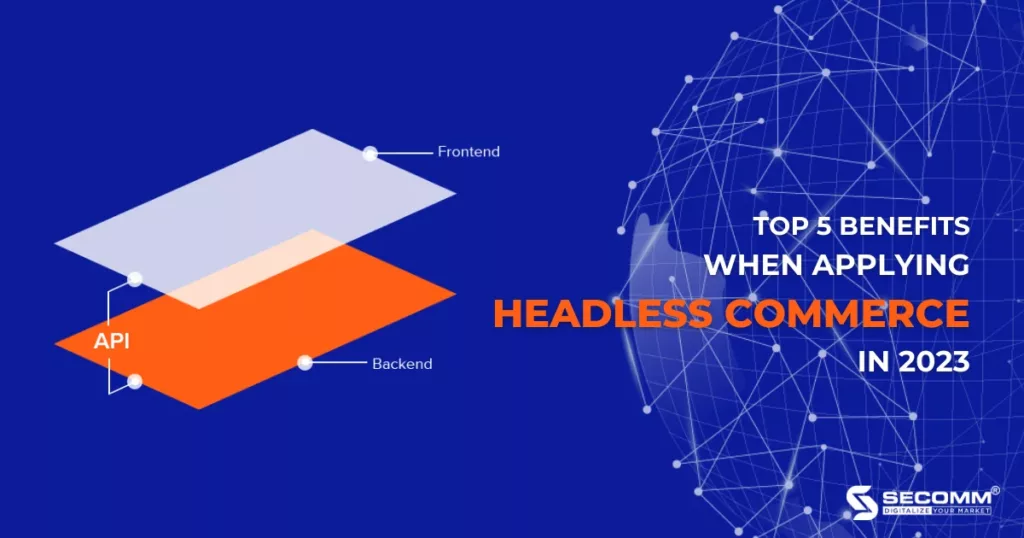
In Headless Commerce application platforms, separating frontend and backend into distinct components allows businesses to achieve limitless customization for designing an eCommerce system. For example, optimizing eCommerce functionalities and customizing the user interface can be done independently without impacting the overall system’s operation. As a result, businesses can better seize new opportunities in this competitive market.
Another crucial aspect of the Headless Commerce architecture is the connections between the frontend and backend through APIs. Thanks to these API connections, businesses can easily modify existing functionalities and develop new features when expanding the system and business model.
In platforms applying Headless Commerce technology, the frontend and backend are no longer tightly integrated into a unified entity. This separation allows for more independent and centralized data storage through API connections. This approach significantly accelerates the processing of API calls compared to traditional eCommerce platforms.
This enhancement reduces the amount of user data to be received and downloaded, thereby improving page loading speed. Given that page loading speed is a component of SEO (Search Engine Optimization), improving this aspect helps boost the website’s ranking on search engines such as Google, Safari, Cốc Cốc, and others.
Another notable advantage of API connections is the seamless integration they offer for eCommerce systems. This is particularly evident in the integration with various third-party services and utilities, such as CRM, ERP, PIM, BI, or other pre-integrated tools. Additionally, this architecture enables businesses to rapidly test services, and utilities, and measure their suitability for eCommerce campaigns.
This flexibility in integration allows businesses to adapt their technology stack to evolving needs and take advantage of the latest tools and services in the market, fostering innovation and efficiency.
In the Headless Commerce structure, API connections facilitate seamless integration with various sales channels, including eCommerce platforms, websites, mobile apps, social media, or any future channels with available APIs.
Simultaneously, Headless CMS (Headless Content Management System) aids in optimizing content across devices such as desktop, tablet, and mobile, connected through the Internet of Things (IoT), to provide a seamless shopping experience for customers. This approach ensures that content is consistently delivered and tailored for diverse devices, enhancing the overall customer journey.
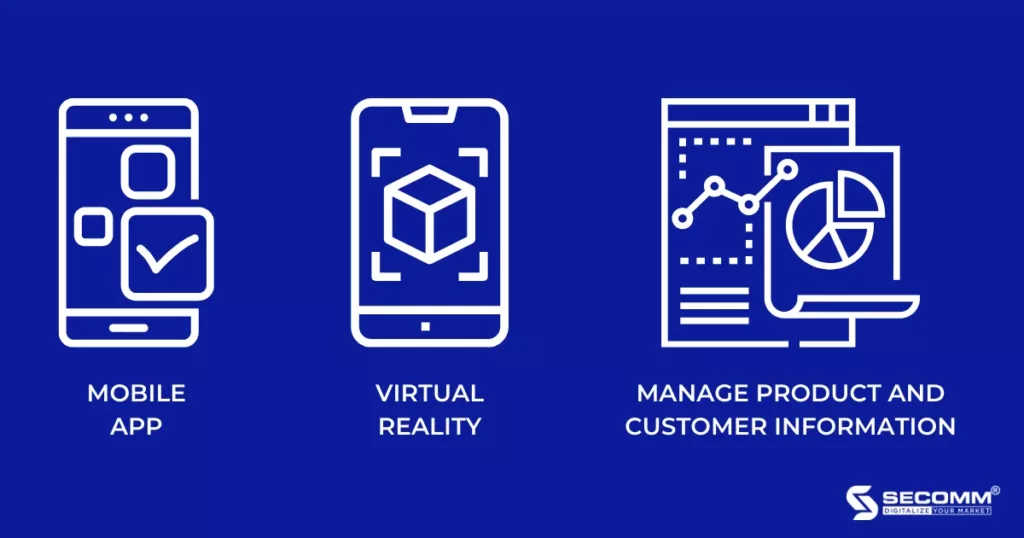
Headless Commerce finds widespread applications in eCommerce implementation. Some common use cases include:
Allows administrators to manage products, marketing campaigns, and inventory through the eCommerce website’s backend system.
Changes in the backend system do not impact the frontend user interface, and APIs can be controlled to display information on the user’s mobile app frontend.
Utilized by eCommerce businesses to implement AR technology.
Users can view dynamic simulated images of products through augmented reality devices, acting as a frontend linked to the backend through APIs in a Headless Commerce application.
PIM (Product Information Management) and CRM (Customer Relationship Management) function as back-office software for processing product information and customer data in the backend system.
In a Headless Commerce structure, backend data can be controlled and displayed on various frontend interfaces through API links, such as eCommerce platforms, websites, mobile apps, and social media.
Enables businesses to deploy eCommerce concurrently with Headless Commerce, offering various advantages.
The decision to adopt Headless Commerce depends on the long-term eCommerce business strategies of a company.
In summary, the implementation of Headless Commerce alongside eCommerce is becoming a realistic option for businesses with long-term market strategies, thanks to the numerous benefits it offers. Whether or not to adopt Headless Commerce and when depends on various eCommerce business strategies.
With over 8 years of experience designing complex eCommerce systems for companies like An Nam Gourmet, Laybyland, Jasnor, etc., SECOMM understands the challenges that businesses face when exploring new eCommerce technologies.
Contact SECOMM now for a free consultation on detailed eCommerce system development solutions!
 2
2
 11,922
11,922
 0
0
 1
1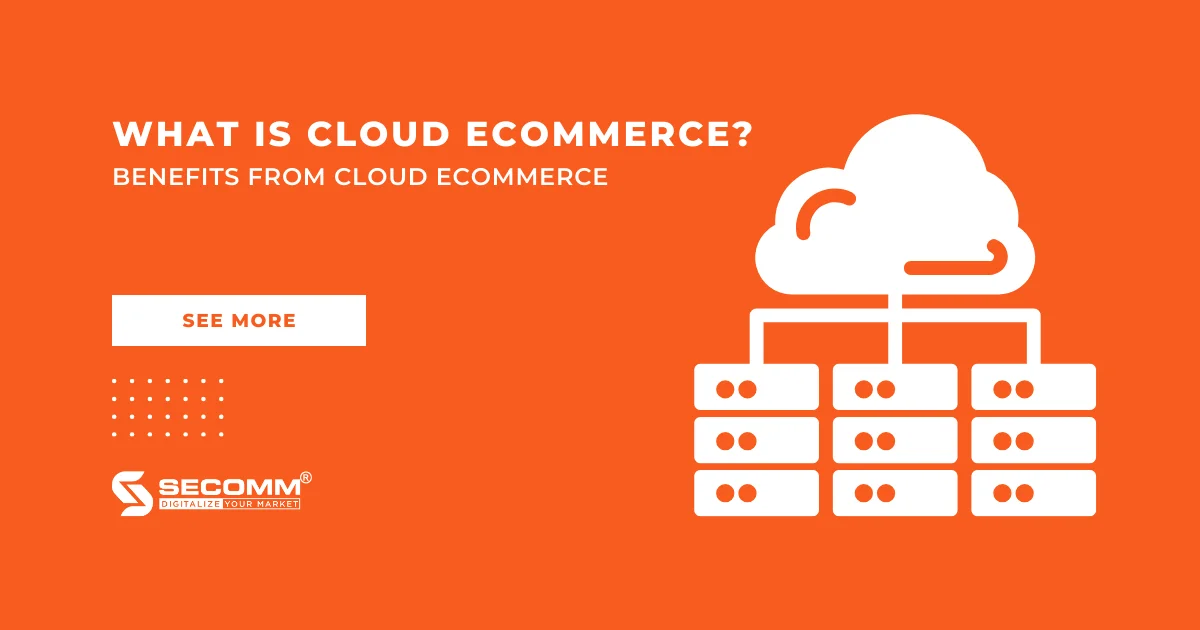
eCommerce has been booming more than ever, driving the demand for new technologies to adapt to the continuous growth of the market. Some emerging eCommerce technologies include VR/AR, MSI (Multi-Source Inventory), PWA (Progressive Web Apps), Headless Commerce, etc. However, among these, the technology that developers and businesses are currently paying the most attention to is Cloud eCommerce.
Cloud eCommerce utilizes server clusters and cloud computing systems from cloud service providers to process large transaction volumes and online sales channel traffic. In simpler terms, Cloud eCommerce involves renting Internet servers based on cloud platforms to process, store, or use applications for various eCommerce business purposes.

Before cloud-based eCommerce platforms and other solutions emerged, traditional eCommerce platforms like IBM WebSphere and Oracle ATG required on-premise server setups and continuous maintenance. Unlike those “on-premise” eCommerce solutions, cloud-based eCommerce allows companies to outsource their IT infrastructure without the need to invest in equipment and continuous maintenance as before.
This solution helps businesses adapt to the increasing demands of customers, enhance security, simplify maintenance, and integrate new eCommerce applications as needed. For these reasons, Cloud eCommerce is often combined with eCommerce platforms such as Shopify Plus, Salesforce, Magento, etc.
There are several cloud eCommerce solutions to choose from, including IaaS, PaaS, and SaaS, each with different resource requirements.
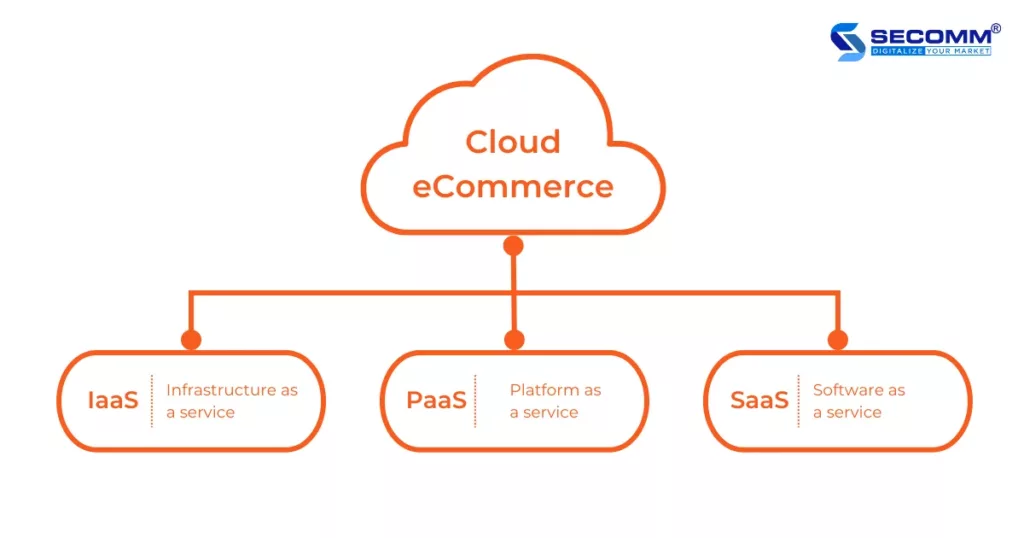
Infrastructure as a Service (IaaS) is where businesses rent physical resources such as servers, databases, and network equipment to build a sustainable eCommerce architecture. IaaS eCommerce focuses on providing on-demand data storage on disks and virtual servers, making it easy for businesses to use database services rather than dealing with hardware. However, businesses are responsible for managing applications, data, runtime, middleware, and the operating system on this infrastructure.
Notable IaaS providers include Amazon AWS, Microsoft Azure, and Digital Ocean. IaaS is suitable for businesses wanting full control over the system without the complexity of on-premise eCommerce.
Platform as a Service (PaaS) is similar to IaaS but requires less infrastructure management, allowing more time to build eCommerce applications using predefined infrastructure with pre-defined operating systems and processes to handle resources, planning, and error correction.
For example, Google App Engine provides a PaaS environment for developers to build web applications without worrying about infrastructure. PaaS eCommerce is suitable for businesses needing to build specialized eCommerce applications and are willing to eliminate infrastructure-related factors in their technology stack.
Software as a Service (SaaS) provides ready-made eCommerce services, including complete eCommerce solutions or individual eCommerce applications like Product Information Management (PIM) software, Order Management System (OMS), etc. SaaS eCommerce providers are responsible for managing both the infrastructure and software and businesses only need to configure the desired software. Additionally, SaaS eCommerce developers can work outside the user interface with APIs to develop custom solutions without the need for custom software development.
SaaS eCommerce is suitable for businesses that want to quickly deploy eCommerce solutions without significant involvement in infrastructure and software management.
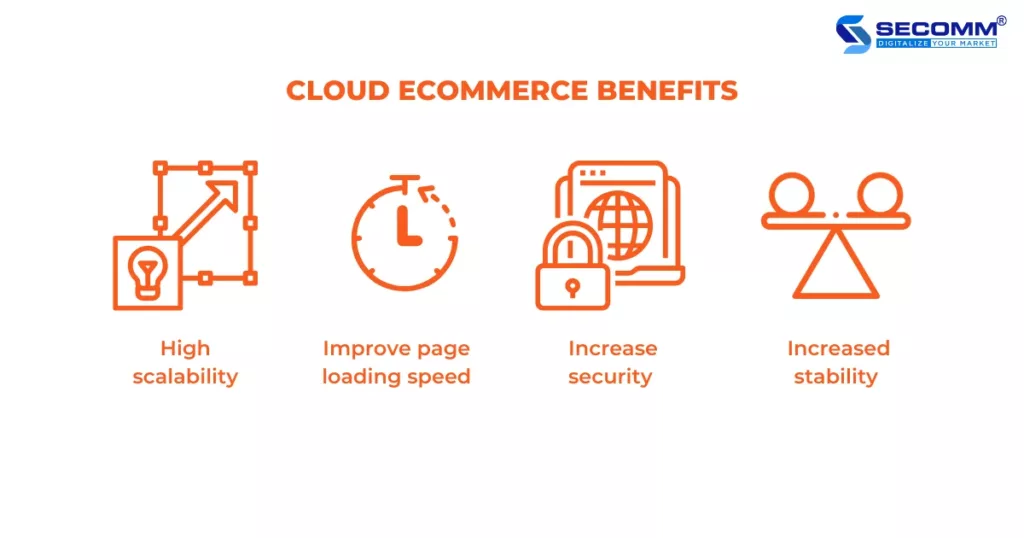
Cloud eCommerce inherits features from PaaS, making it easier to expand system functionality.
Typically, when fashion businesses start, they may not initially focus on scalability. However, from a strategic perspective, investing in technologies with scalability capabilities, such as Cloud eCommerce, can help businesses expand system functionality in each stage of eCommerce website development to foster business growth.
According to Think with Google, if a website takes up to 6 seconds to load, the probability of users bouncing increases by 106%. That’s why businesses need to focus on page load speed.
When an eCommerce website leverages Cloud eCommerce with data stored on a cloud platform, the speed of processing queries and API calls is significantly faster.
In the current era of the 4.0 technological revolution, the concern for data loss is a major focus for business leaders. As a response to this, numerous new technologies have emerged to address this goal.
According to PC Magazine, Cloud eCommerce provides control over data and storage locations, along with options such as physical backups and file synchronization to ensure data safety. Additionally, Cloud eCommerce supports businesses in obtaining PCI-DSS (Payment Card Industry Data Security Standard) certification, enhancing the credibility of their website.
Typically, businesses struggle to optimize storage capacity on their websites, especially when facing a massive surge in traffic during peak seasons, such as the “sale hunting” period. This sudden increase in workload poses a significant challenge to storage operations.
Cloud eCommerce offers a flexible solution to meet the demands of unpredictable spikes in traffic, whether seasonal or even hourly. It can dynamically scale up or down to support the real-time needs of a business. Overall, Cloud eCommerce is becoming a widely adopted technology in the digital transformation journey, helping businesses expand their functionality, improve page loading speeds, and enhance the security and stability of their websites.
However, mastering these new technologies requires programmers to possess a significant amount of specialized knowledge and hands-on experience with various complex projects. As a result, the costs associated with implementing Cloud eCommerce can be relatively high.
With over 9 years of experience designing complex eCommerce systems for companies like An Nam Gourmet, Laybyland, Jasnor, etc., SECOMM understands the challenges that businesses face when exploring new eCommerce technologies.
Contact SECOMM today for a free consultation on detailed eCommerce system development solutions!
 3
3
 11,640
11,640
 0
0
 2
2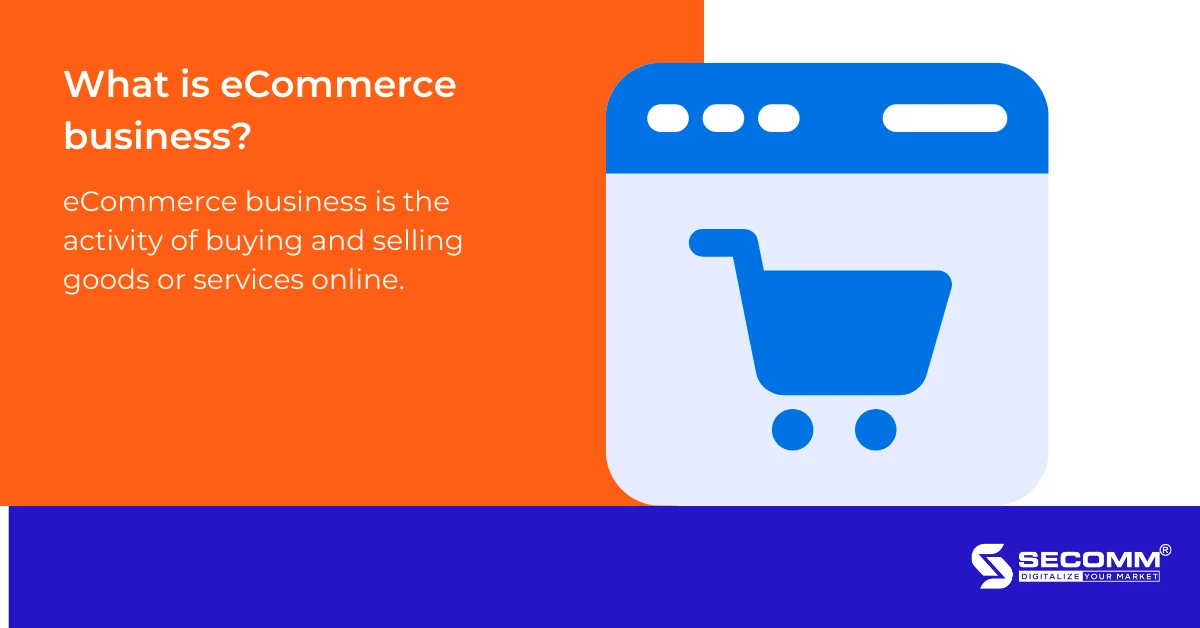
For businesses that are just entering the market, the term “eCommerce” is often recognized through eCommerce marketplaces. Most managers are often unsure of where to start, including which systems to use, which eCommerce platform to choose for development, and what steps to take next.
Therefore, in this article, SECOMM will share comprehensive information from basics to advanced levels to kickstart eCommerce business in Vietnam.
According to Decree No. 52/2013/ND-CP on eCommerce: “eCommerce activities involve conducting all or part of the commercial process through electronic means connected to the Internet, mobile telecommunications networks, or other open networks.”
In simpler terms, eCommerce business is the activity of buying and selling goods or services online.
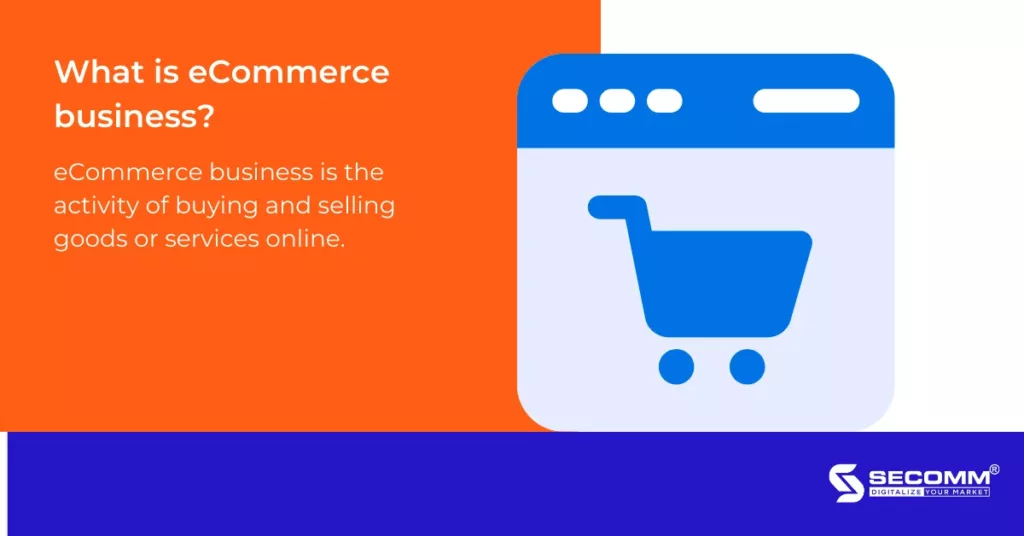
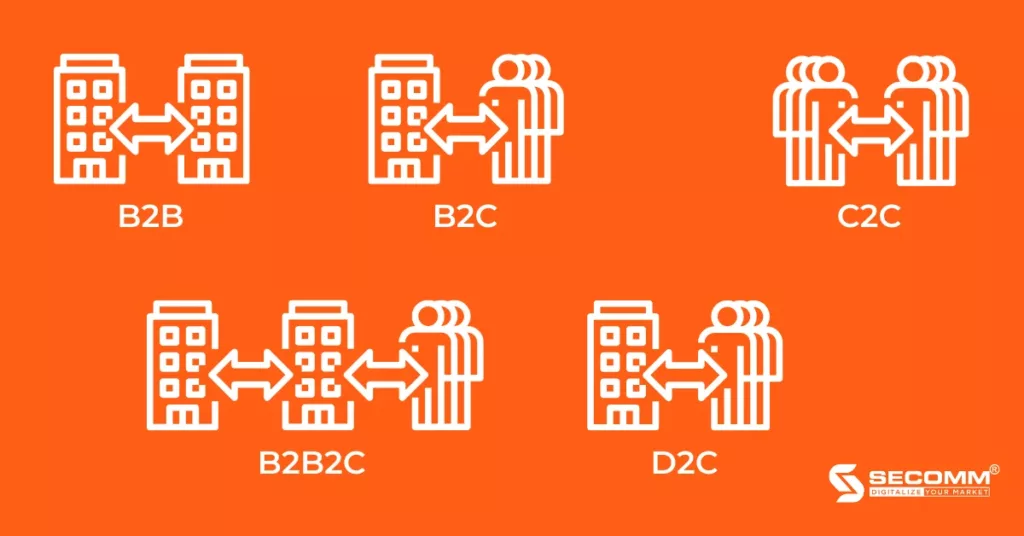
B2C (Business to Customer) involves transactions between businesses and customers. This is also the most common model in the Vietnamese market.
Example: Thế Giới Di Động is the number one retail model in Vietnam’s eCommerce market for devices such as phones, laptops, tablets, and accessories.
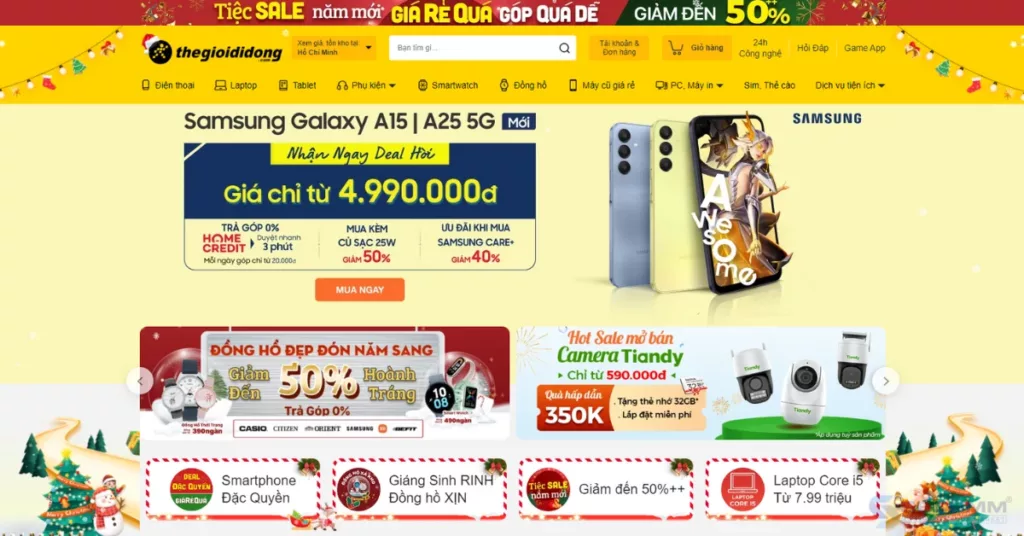
B2B (Business to Business) involves commercial transactions between two businesses.
Example: TELIO is Vietnam’s first B2B eCommerce platform, facilitating the connection between small-scale traditional retailers and brands by aggregating demand, providing more choices, better prices, and more efficient logistics support.
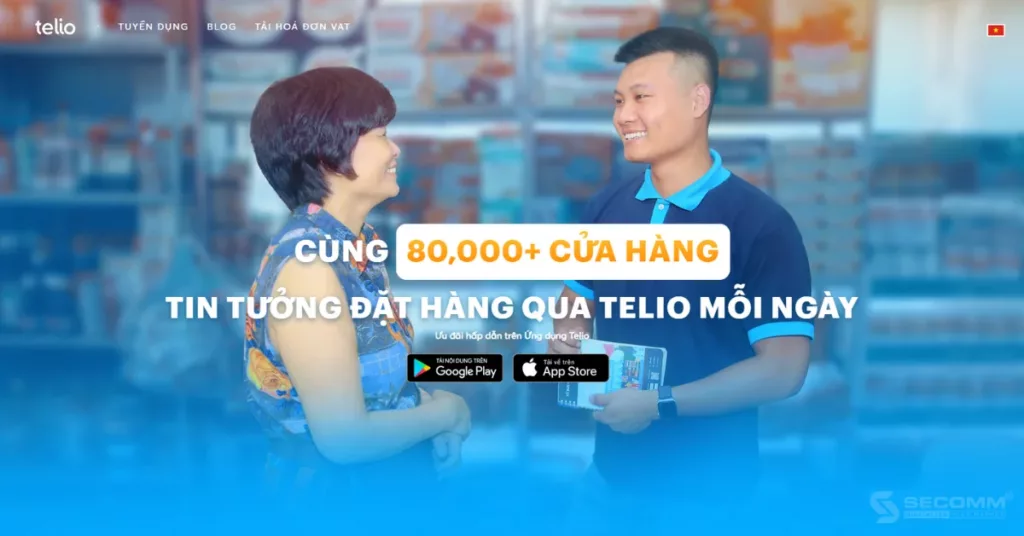
B2B2C (Business to Business to Customer) is a business model that involves collaboration between two businesses (B2B) to create and deliver products or services to end consumers (B2C).
Example: Shopee is the most popular eCommerce platform in Vietnam. Shopee Vietnam initially operated under a C2C model, serving as an intermediary in the buying and selling process between individuals. However, Shopee Vietnam has evolved into a B2B2C hybrid model by offering various services and conveniences to support the shopping process for both businesses and consumers.
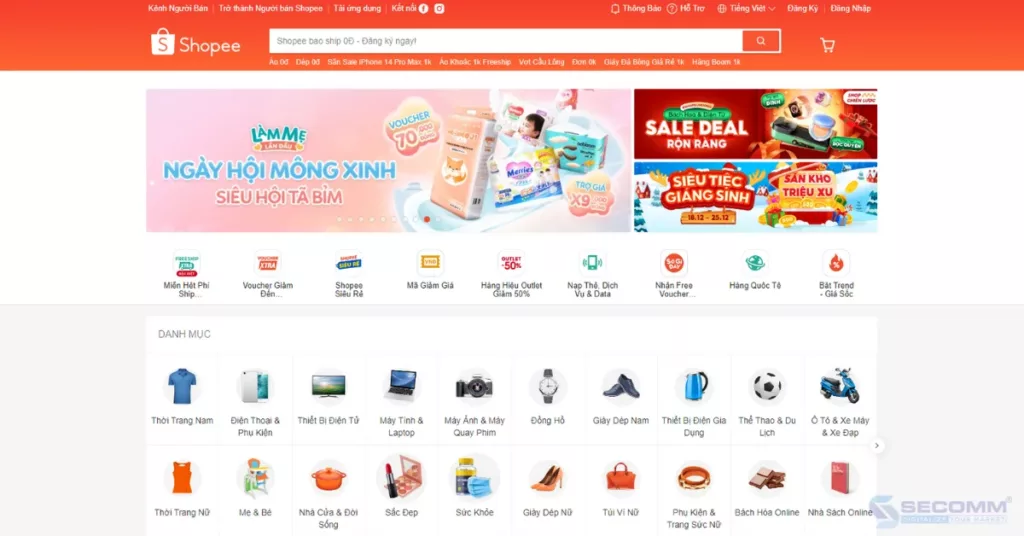
C2C (Consumer to Consumer) is a form of business where transactions occur directly between two individuals rather than involving businesses.
Example: Chợ Tốt is an eCommerce website that facilitates transactions between individual sellers and buyers for items such as real estate, cars, job postings, used electronics, pets, and various home services.
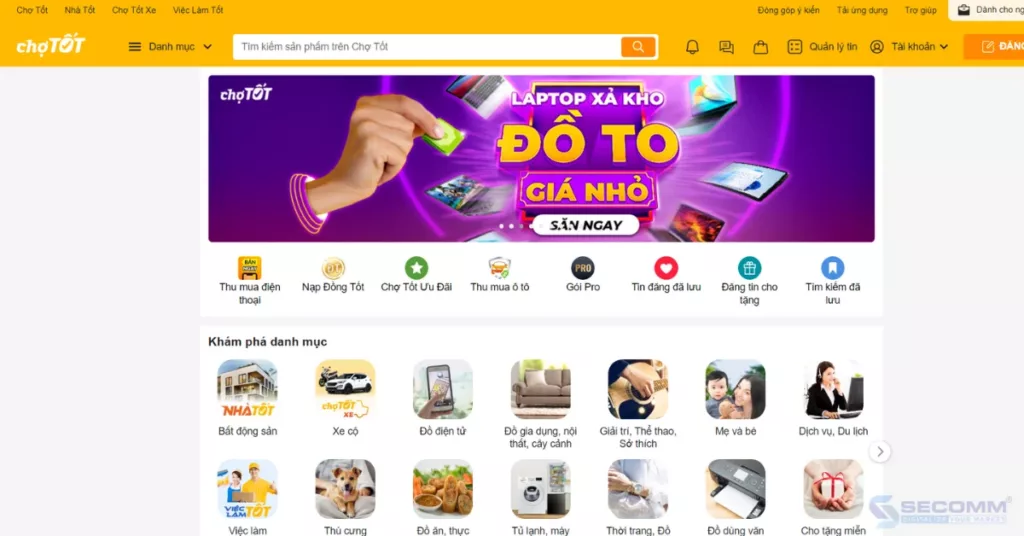
D2C (Direct to Customer) is a business model that delivers products directly from the business to the customer, bypassing intermediary distribution channels.
Example: Coolmate is a men’s fashion startup established in 2019. Within just 2 years of operation, the brand raised a rapid $500,000 in funding for Sharktank.

When starting to plan a business, the first step that managers should take is market research to understand the overall market situation, details about competitors, trends, and consumer behaviour. Some free and reputable sources businesses can refer to include the White Paper on eCommerce in Vietnam by IDEA, the e-Conomy SEA report by Google & Temasek, the eCommerce Index report by Vecom, etc.
After conducting market research, the next thing businesses should pay attention to is defining objectives, such as adding sales channels to increase revenue, positioning the brand in the eCommerce market, supporting marketing campaigns, enhancing user experience and interaction, etc.
Following market research and goal setting, businesses should also budget and plan the implementation timeline for each stage of eCommerce operations. Depending on the goals and strategies, each business will set budgets and timelines for the most effective eCommerce operations.
Next, businesses need to choose an eCommerce platform to build a system that aligns with the brand’s scale and strategy. The components of an eCommerce system typically include a website and an eCommerce website application.
There are two main types of platforms nowadays: SaaS (Software as a Service) and Open Source.
For Open Source platforms:
For SaaS platforms:
Once the eCommerce platform is selected, businesses have two options for resources to build the website: building an in-house team or using services from developers.
For building an in-house team, businesses need to recruit and train IT and eCommerce professionals with expertise and experience on the chosen platform. This process may take time and budget to build a suitable team but provides better control over resources, allowing adjustments or developments according to specific requirements.
For collaborating with development firms, businesses should seek developers based on criteria such as deep experience in eCommerce, an experienced team, a clear process, quick handling and support, and commitments to warranty and maintenance. This approach helps businesses gain professional expertise, enhance experience, and develop a suitable website.
In the eCommerce market, there are various payment methods, with Cash on Delivery (COD) being the most common. However, due to the rise of “cashless” payment trends amid the Covid-19 pandemic, electronic payment methods are gaining more prominence.
Some payment methods chosen by eCommerce businesses include:
Usually, a fulfilment process includes the following steps: Importing goods or manufacturing → Shipping to warehouse/distribution centre → Warehousing → Processing goods upon request (Shipping, invoicing, packaging, labelling) → Delivery → Handling post-sale requests (Returns, refunds, exchanges).
Therefore, a comprehensive eCommerce system needs to build or integrate functionalities such as eLogistics, blockchain, QR codes, etc., to automate the shipping process, track orders, and thereby enhance the quality of delivery to end consumers.
A Customer Relationship Management (CRM) system is an essential component in the operation of eCommerce businesses. Building and continuously improving the CRM system, as well as implementing a multi-channel customer care centre, helps expedite the processing of complaints, returns, and refunds. Additionally, a CRM system assists businesses in gaining insights into customer needs, facilitating the establishment of interactions between the brand and its customers.
Maintaining the eCommerce system 24/7, continually updating and upgrading it helps businesses promptly address arising issues, achieve sustainable sales growth, and adapt quickly to the ever-changing market. Simultaneously, continuous monitoring and maintaining eCommerce operations aim to prevent risks from hackers, data breaches, etc.
One of the crucial strategies in current eCommerce operations is omnichannel selling. By following customers’ “footprints” across eCommerce platforms (Shopee, Lazada, Tiki, Sendo), social media (Facebook, TikTok, Instagram, Zalo), websites, and eCommerce apps, this strategy centralizes customer data, reaches diverse shopping behaviours, and optimizes personalized experiences in the eCommerce system. Additionally, various eCommerce marketing campaigns are being developed, such as Affiliate Marketing, Shoppertainment, SEO, Email Marketing, etc. This strategy optimizes brand visibility and boosts online sales.
Building reporting functions to exploit the efficiency of data, including reports on Sales, Marketing, Customers, Inventory, and Operational Performance, to improve and enhance business efficiency. Integrating analytical tools such as Google Analytics, Facebook Pixels, Microsoft Power BI, etc., supports tracking and measuring system performance to provide detailed reports on business results in eCommerce.

In summary, conducting eCommerce based on the above 8 steps is not an easy task for business managers. To stay competitive in the eCommerce race, various factors come into play, including financial strength, human resources, the general economic situation, changes in consumer behaviour, etc. Therefore, managers need to be cautious when making critical decisions to bring business efficiency.
With over 9 years of experience in designing complex eCommerce systems for companies like Annam Gourmet, Laybyland, and Jasnor, SECOMM understands the challenges businesses face in researching and efficiently implementing eCommerce.
Contact SECOMM now for free consultation on detailed eCommerce system development solutions!
 2
2
 16,456
16,456
 0
0
 1
1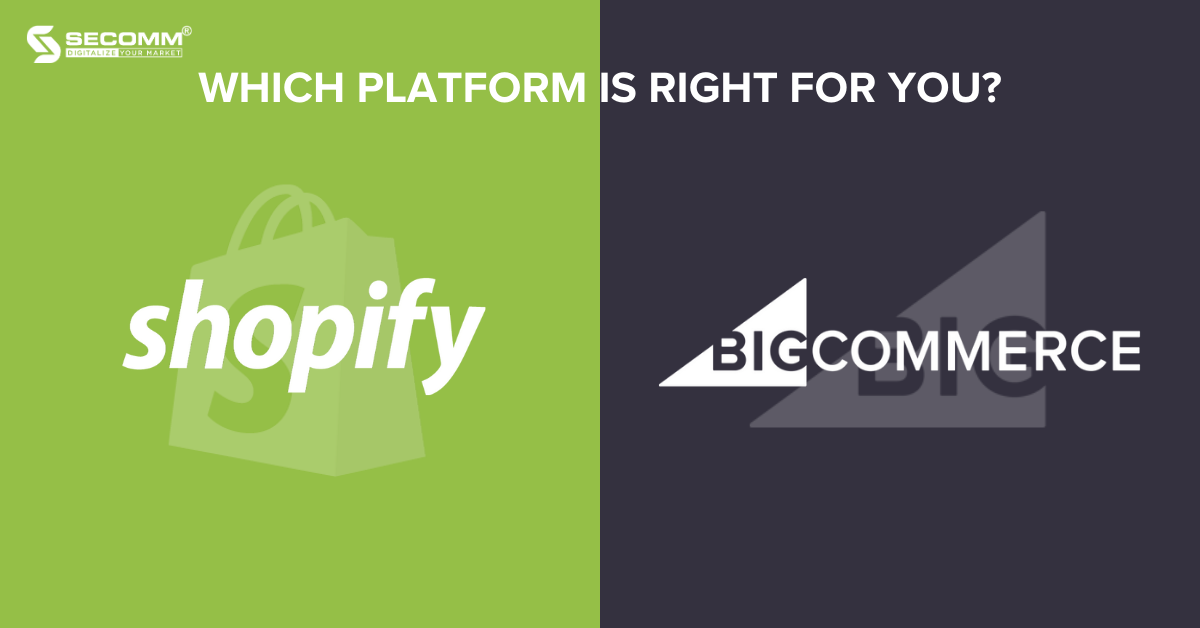
In recent times, SaaS platforms like Shopify and BigCommerce have gained popularity thanks to the growing demand for eCommerce. While BigCommerce currently supports over 45 thousand active online stores globally, Shopify surpasses it with around 4.5 million active websites. Although Shopify and BigCommerce share typical features of SaaS platforms, there are notable differences between the two.
This article will compare the distinctions between Shopify and BigCommerce, providing valuable insights to help you, as a business make informed decisions quickly.
Learn more: Shopify Plus vs BigCommerce Enterprise

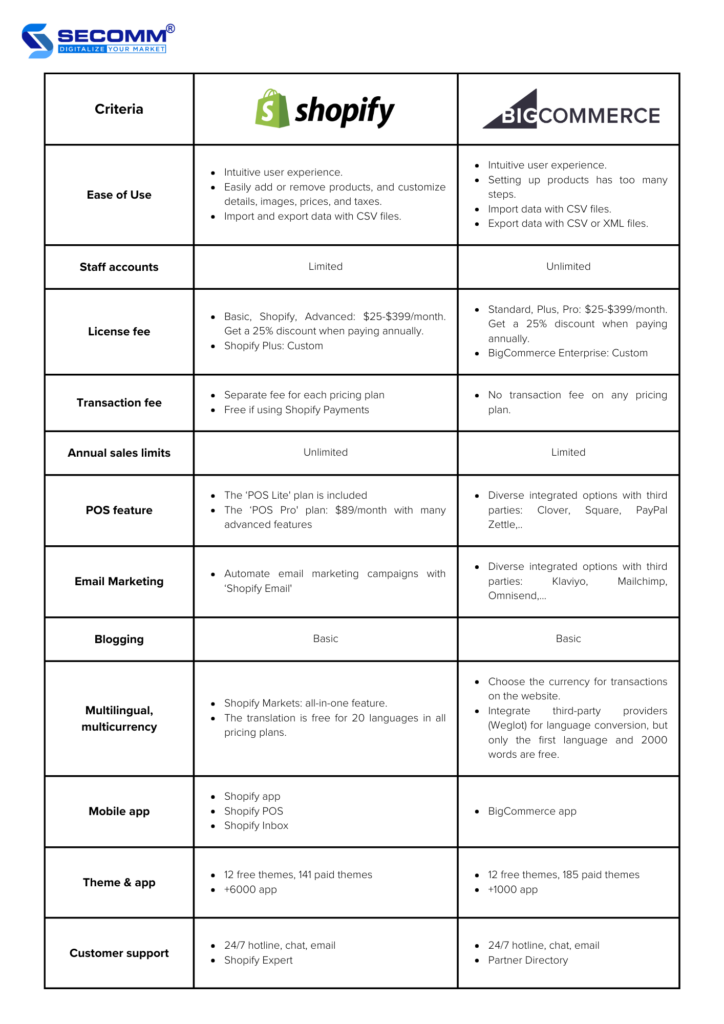
New businesses often find Shopify more user-friendly than BigCommerce when it comes to setup and usage. Adding or removing products, customization, and editing layouts on Shopify are all straightforward tasks.
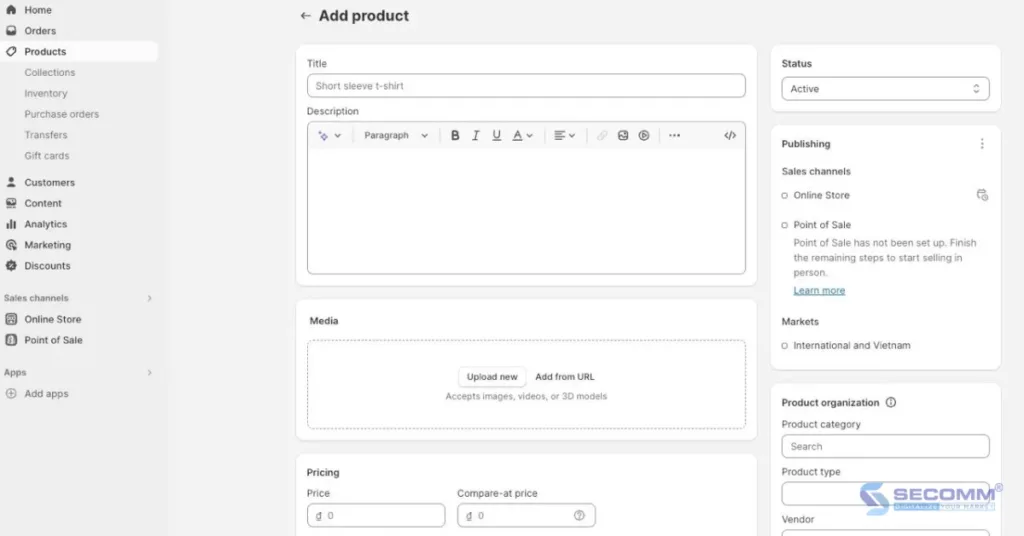
This doesn’t mean that the user experience of BigCommerce is less intuitive than the other. Both platforms are similar, providing drag-and-drop store editors, detailed documentation, and quick support. However, BigCommerce offers many built-in features that are expandable and customizable.
Users, though, may find themselves completing several different steps for each setup task, which can be overwhelming and time-consuming.

Shopify sets account staff limits for each pricing plan. Specifically, the Basic package allows 2 staff accounts, Shopify allows 5 staff accounts, and Advanced allows 15 staff accounts.
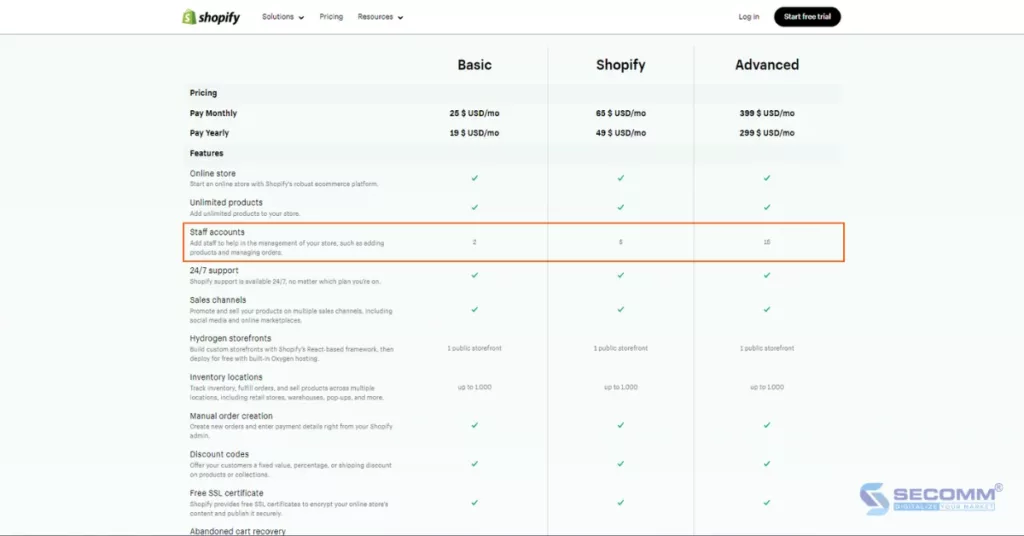
In this regard, BigCommerce has a significant advantage by providing unlimited account access for all solution packages. This flexibility can benefit businesses with many employees needing access to the eCommerce website system.
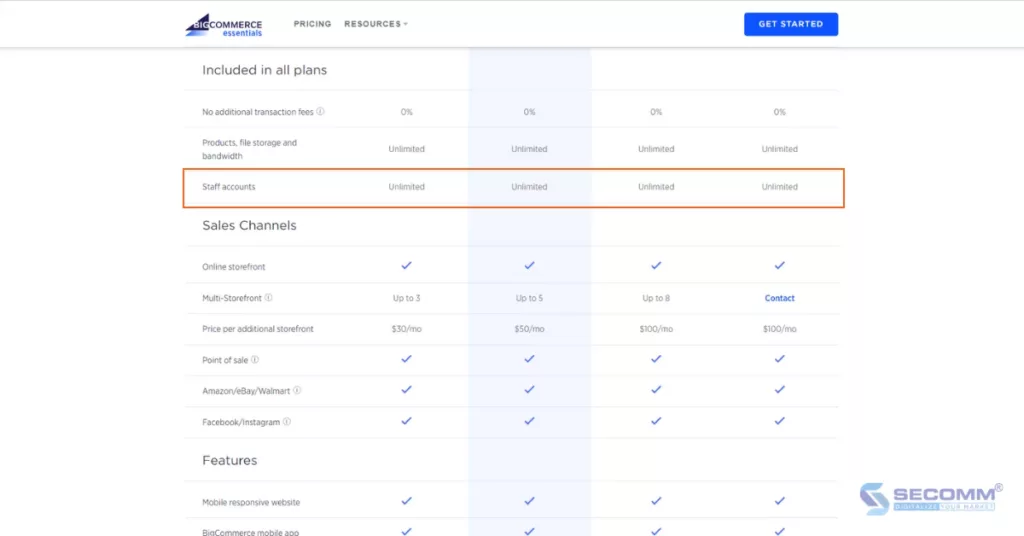
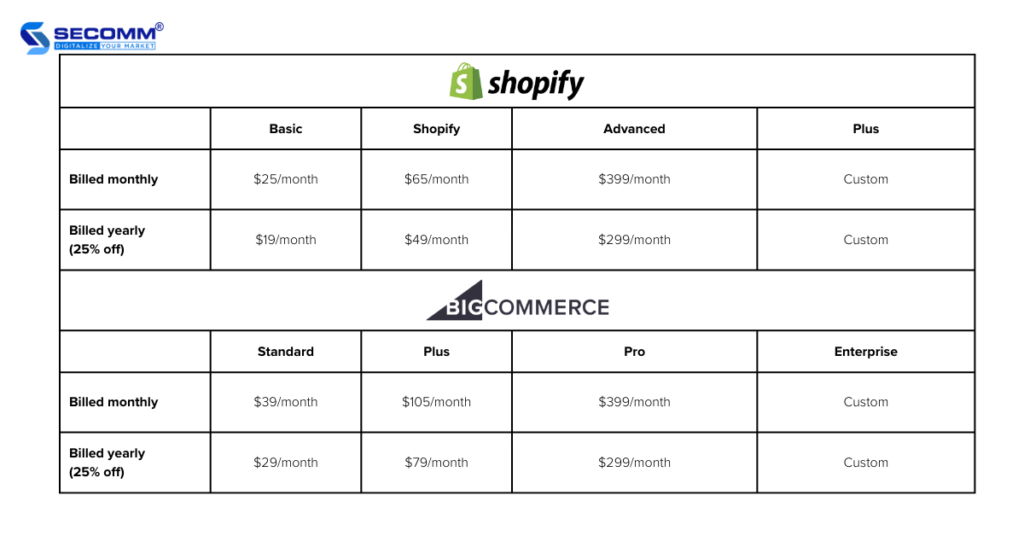
By using BigCommerce pricing plans, you can enjoy a 15-day free trial. The other offers a 3-day free trial for its 3 pricing plans, followed by a payment of only $1 per month for the initial 3 months. This gives you more time to experience the platform at a highly affordable cost.
The transaction fee is a drawback of Shopify. If you opt for third-party payment gateways, you’ll incur a transaction fee of 2%, 1%, and 0.5% for the Basic, Shopify, and Advanced plans, respectively. On the other hand, this fee is waived if you use Shopify Payments. However, Shopify Payments is limited to certain countries, some businesses may not have access. This, in turn, makes BigCommerce more appealing as it doesn’t impose transaction fees on any pricing plan.
BigCommerce sets annual sales limits to $50k for the ‘Standard’ plan, $180k for ‘Plus,’ and $400k for ‘Pro’, while the ‘Enterprise’ plan can be negotiated. To exceed these limits, you must upgrade to a higher pricing plan.
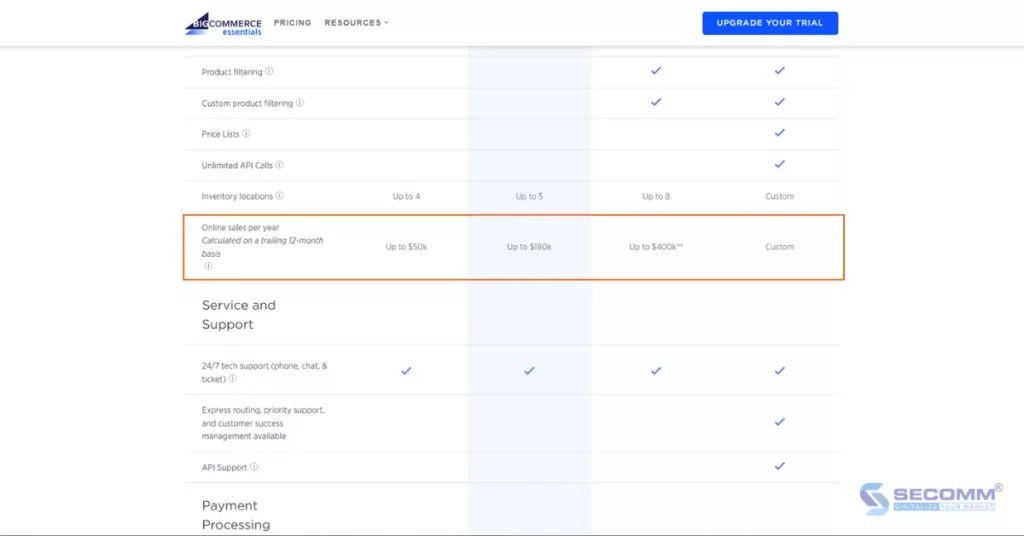
However, your business may not need the features offered in higher-tier plans and may be hesitant to pay additional fees for an upgrade. Therefore, the sales volume limit on the BigCommerce platform is a crucial factor that requires thoughtful consideration. In contrast, Shopify doesn’t impose any annual sales limits on any of its pricing plans.
The POS feature isn’t limited to eCommerce transactions but also extends to traditional brick-and-mortar stores. Both BigCommerce and Shopify allow you to implement POS on mobile devices (smartphones, tablets) and other hardware (cash registers, barcode scanners).
To use POS with BigCommerce, you need to integrate with software like Clover, Vend, Square, PayPal Zettle, and others. Hence, if you are currently using a third-party POS system may appreciate the flexibility offered by BigCommerce.
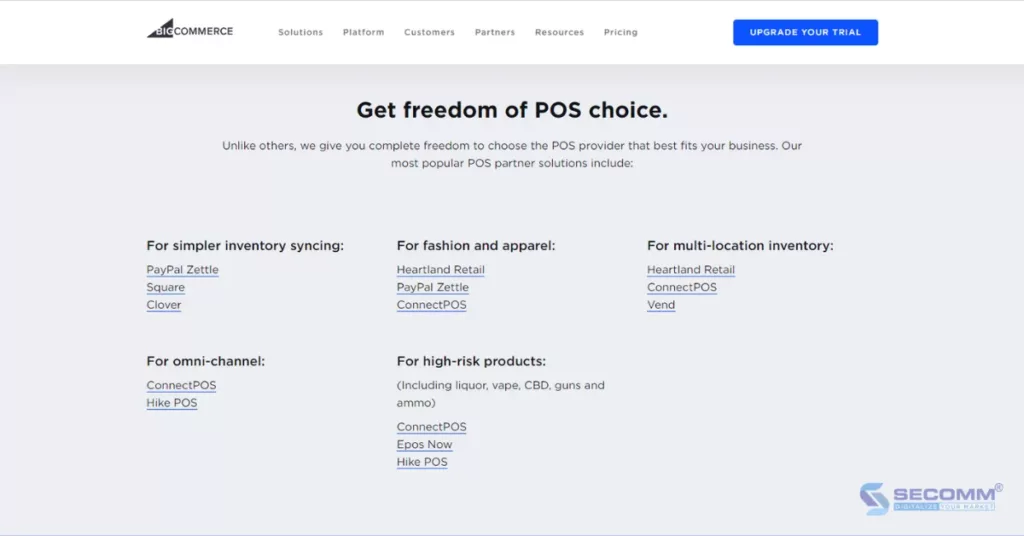
Conversely, Shopify offers built-in POS features, starting with the ‘POS Lite’ plan within its pricing plans. However, to access more advanced POS features, you can opt for the ‘POS Pro’ plan at $89 per month per location, added to the chosen pricing plan. If you choose the annual payment option, the ‘POS Pro’ plan is only $79 per month per location.
Shopify POS solution caters to diverse needs, including single-store transactions, multi-store transactions, event transactions, online and offline sales, as well as omnichannel operations.

In eCommerce, email marketing is crucial when it comes to customer attraction and substantial sales growth. Hence, it’s a feature you should prioritize when selecting an eCommerce platform.
Beyond the Shopify POS solution, Shopify offers you the built-in Shopify Email feature, designed for Email Marketing campaigns and automating email processes (Welcome Email, Winback Email, Upsell Email).
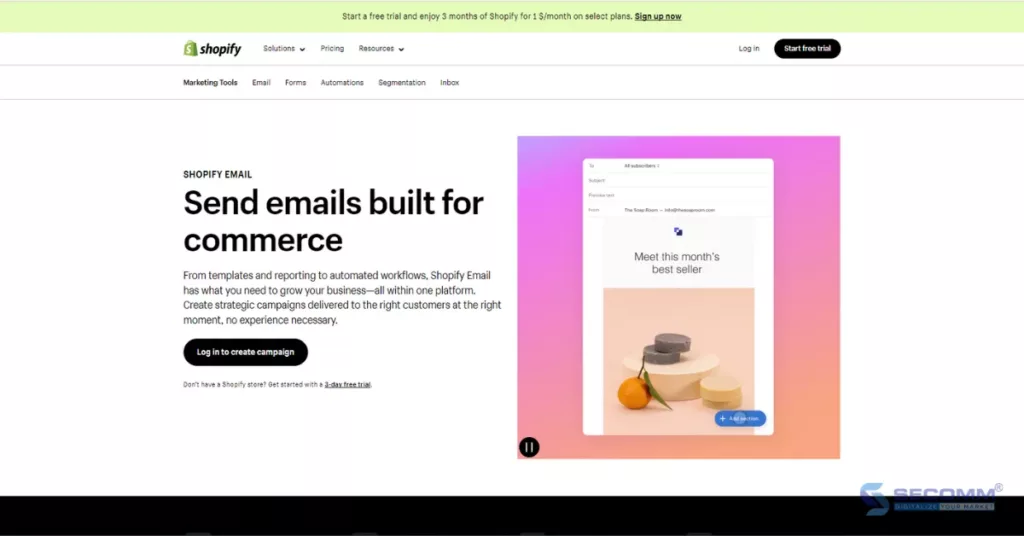
Meanwhile, for Email Marketing on BigCommerce, you need to integrate with third-party service providers like Klaviyo, MailChimp, Omnisend, and others.
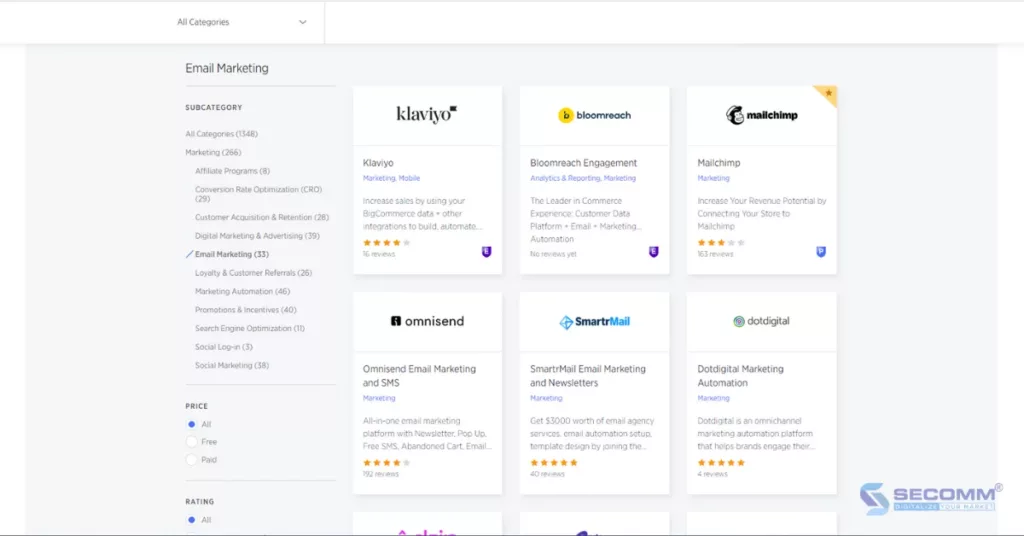
When you utilize blogging effectively, it can be one of the best sources to attract organic traffic. Both BigCommerce and Shopify come with built-in blogging features at a basic level, offering attractive templates that help you create SEO-optimized blog content to draw in potential customers. Moreover, you can seamlessly integrate with WordPress or other CMS platforms for more advanced blogging features
Cross-border selling is currently a common goal for many eCommerce businesses. Fortunately, both Shopify and BigCommerce provide features and tools to help businesses expand into the global market
Shopify Markets, introduced in 2021, is a feature that allows you to select the specific markets you want to sell in. It’s an all-in-one feature that helps you centrally manage multiple local domains, languages, currencies, and payment gateways.
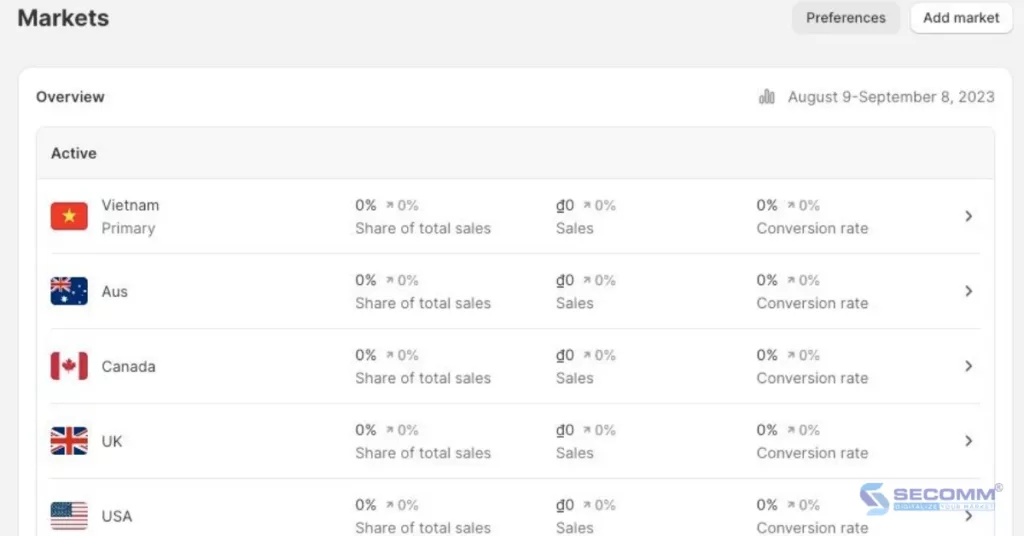
Plus, Shopify Markets utilizes the IP address of visitors outside the default ‘market’ that you previously defined to prompt them to select a location and the appropriate currency.
On the other hand, with BigCommerce, you can choose the currency for transactions on your eCommerce website instead of opting for a ‘market’ like Shopify. Additionally, the currency is automatically converted based on the customer’s IP address.
While language conversion capabilities are built into Shopify when the Shopify Markets feature is enabled, for BigCommerce websites, you’ll need to integrate with a third-party service to achieve the same, such as Weglot, which offers free conversion for 1 language and 2000 words. In contrast, Shopify provides free conversion for 20 languages across all pricing plans.
While BigCommerce has only one app to help you manage sales, interact with customers, and access basic reports, Shopify you up to 3 apps to improve efficiency in eCommerce operations.
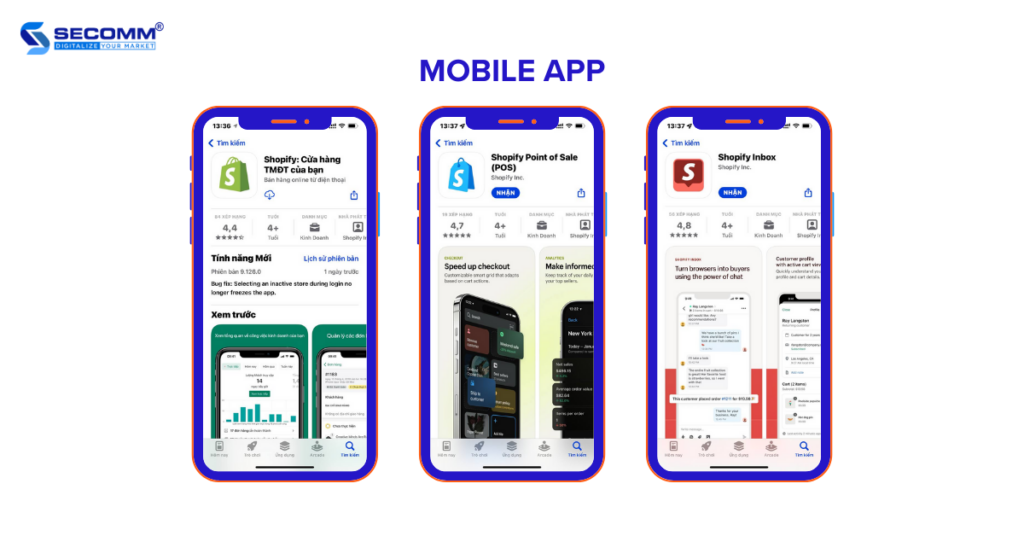
Both BigCommerce and Shopify offer you a variety of free and paid themes. For BigCommerce, the platform provides 12 free themes, but in reality, there are around 5-6 distinct free themes as the layouts are quite similar. As for paid themes, BigCommerce has approximately 185 themes ranging from $150 to $400 per theme.
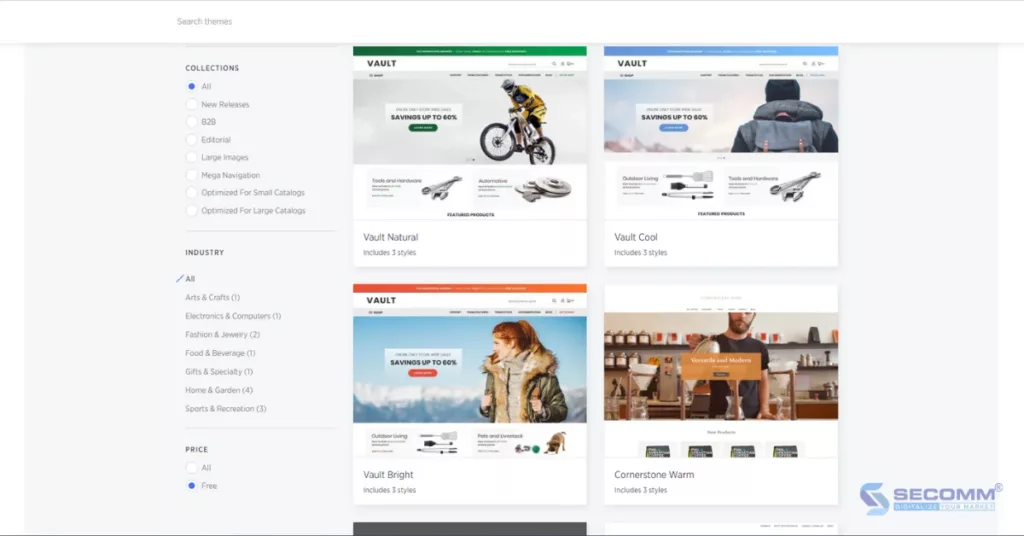
On Shopify, the platform offers 12 free themes and 141 paid themes with prices ranging from $170 to $380 per theme. Both Shopify and BigCommerce provide users with drag-and-drop theme editors to modify layouts, colors, fonts, and text sizes and add/remove elements and widgets.
However, Shopify’s themes, both free and paid, are widely favored for their modern and contemporary styles. Additionally, Shopify offers a diverse selection of fonts for you to choose from. In contrast, BigCommerce has around 8 font options.
Alongside their built-in features, Shopify and BigCommerce both offer extensive app stores to help you optimize your eCommerce activities. Both app stores offer free versions of apps, but certain features may be limited. To access the full functionality, you’ll need to subscribe to the paid versions, which often involve monthly fees. The number of apps available on Shopify and BigCommerce differs significantly, with Shopify boasting over 6000 apps, while BigCommerce has over 1000.
In the process of deploying an eCommerce website, both BigCommerce and Shopify offer 24/7 support through hotlines, chat, and email. Plus, if you seek advice and support in addressing specialized issues related to technology, design, and marketing, BigCommerce provides Partner Directory services, while Shopify offers Shopify Experts.
Above are the comparisons between Shopify and BigCommerce. However, it’s challenging to determine which platform is the best in 2023 for developing an eCommerce website. The choice will depend on your specific needs and wants.
With years of experience advising and collaborating with numerous businesses both domestically and internationally on implementing eCommerce websites on both Shopify and BigCommerce, SECOMM has gathered valuable insights to help your business streamline your eCommerce development process, optimize your website performance, and swiftly generate conversions.
Contact SECOMM today or call directly at the hotline 028 7108 9908 for free and detailed consultations.
 2
2
 9,962
9,962
 0
0
 1
1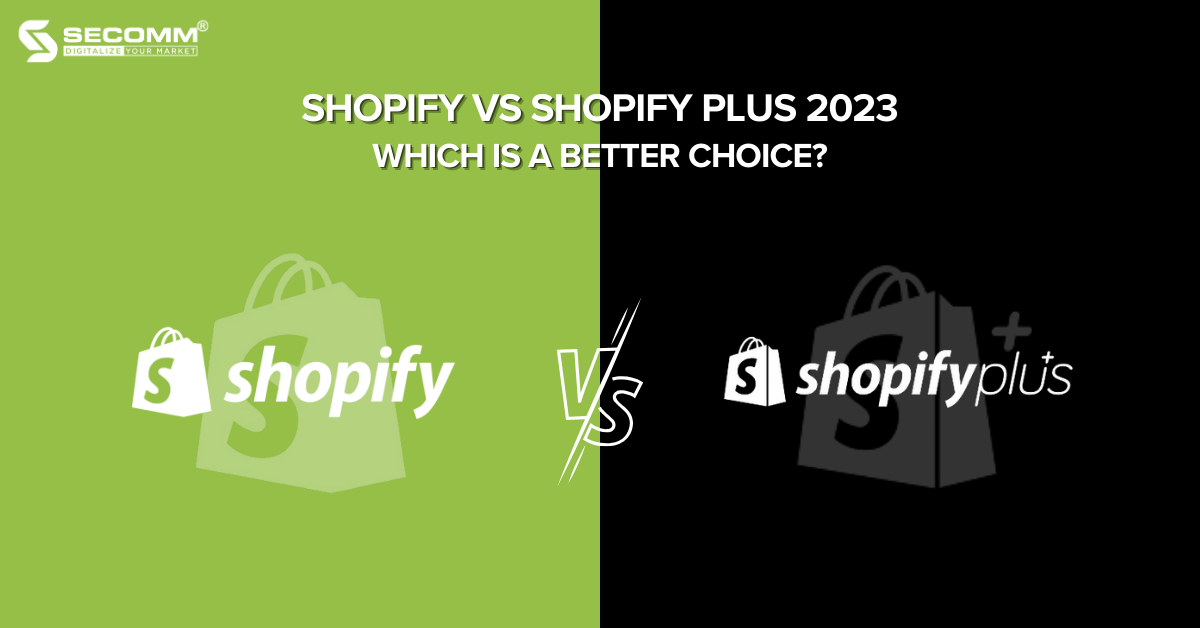
Shopify and Shopify Plus are two leading eCommerce platforms globally, used by millions of businesses to deploy eCommerce websites. The Shopify platform is designed for small and medium-sized enterprises, providing basic, user-friendly features for building and managing eCommerce websites. According to Builtwith, over 4 million active Shopify stores are currently worldwide.
On the other hand, Shopify Plus is specifically crafted for large-scale enterprises, offering advanced features, customization options, and flexible scalability. Builtwith statistics indicate that there are over 44 thousand active Shopify Plus websites globally.
What are the differences between Shopify and Shopify Plus? Which platform should you choose to build your eCommerce websites? This article will focus on clarifying the differences between Shopify and Shopify Plus in three aspects: cost, features, and support capabilities, to help you choose the most suitable platform for your needs and goals.
The first distinction and crucial criterion to consider between Shopify and Shopify Plus are the license fees and transaction fees. Shopify and Shopify Plus offer different solution packages with varying pricing to suit businesses with different budgets and scales.
Shopify offers three main pricing plans: Basic, Shopify, and Advanced, priced at $25, $65, and $399 per month, respectively. Also, Shopify has a special solution package called Shopify Starter at $5/month, enabling you to sell on social media and chat apps.
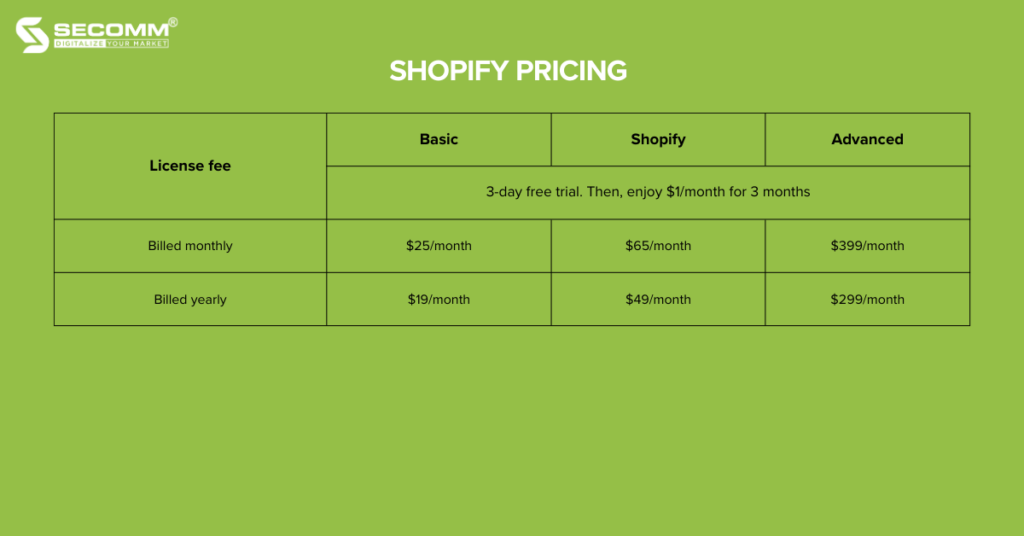
*Note: The mentioned fees apply to the Vietnamese market, and platform license fees may vary depending on the region or country.
Beyond the license fees, you also need to consider the transaction fee when using different payment methods. Shopify offers its payment method called Shopify Payments, allowing you to effortlessly accept all major payment methods on your eCommerce website.
If using Shopify Payments, you don’t have to pay any transaction fee to Shopify.
On the other hand, If you don’t use Shopify Payments and select one of many third-party payment service providers supported by Shopify, you’ll pay transaction fees of 2%, 1%, and 0,5% for the Basic, Shopify, and Advanced plans, respectively.
Since Shopify Plus is designed for large businesses, the pricing structure for the Shopify Plus package is variable and depends on the individual deployment requirements and revenue of each business. According to Shopify, the initial cost for using Shopify Plus is $2,000/month, with subsequent increases based on monthly revenue.
Specifically, when the revenue of a Shopify Plus store reaches $800,000/month, the platform will apply a charge of 0.25% of the monthly revenue. It’s worth noting that the fee will not exceed $40,000/month and $480,000/year.

Similar to the Shopify pricing plans, Shopify Plus supports both Shopify Payments and third-party payment service providers. However, the transaction fees associated with Shopify Plus are lower compared to regular Shopify plans. If you don’t use Shopify Payments, you’ll incur a transaction fee of 0.15% on each transaction.
When it comes to features, Shopify Plus excels by providing a range of advanced features for you to customize your eCommerce websites, aiming to deliver a unique experience for customers.
Related Reading: 6 key Shopify Plus features
Most Shopify businesses typically utilize either the available free or paid themes on Shopify, encountering several limitations when customizing the checkout or cart pages. However, with the implementation of Shopify Plus, you can leverage Shopify Scripts to tailor small code segments, enabling the creation of a personalized shopping experience for customers at the cart and checkout pages.
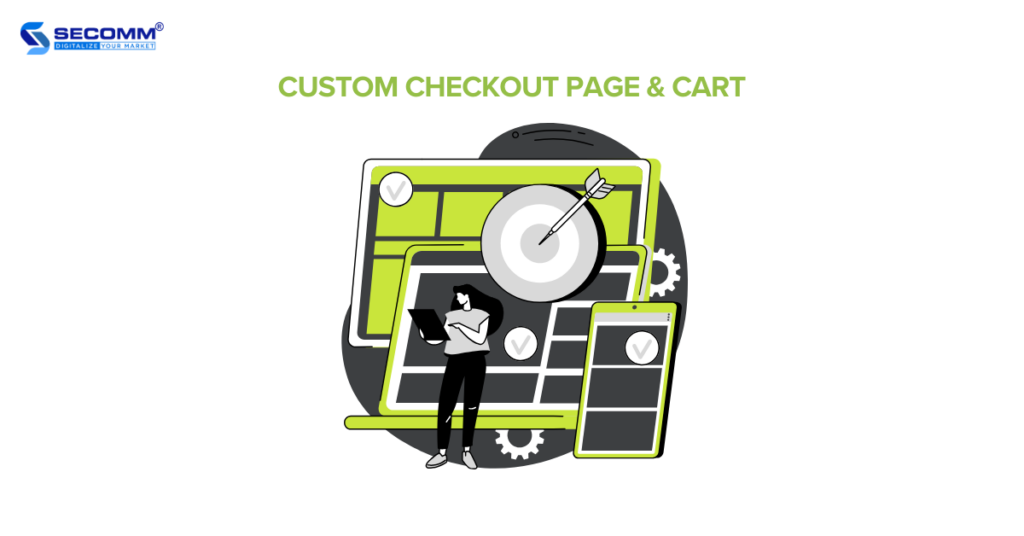
The Shopify pricing plans provide a set of built features for businesses to automate eCommerce and marketing operations. On the other hand, with the deployment of Shopify Plus, businesses can utilize specialized tools to automate eCommerce processes, such as:
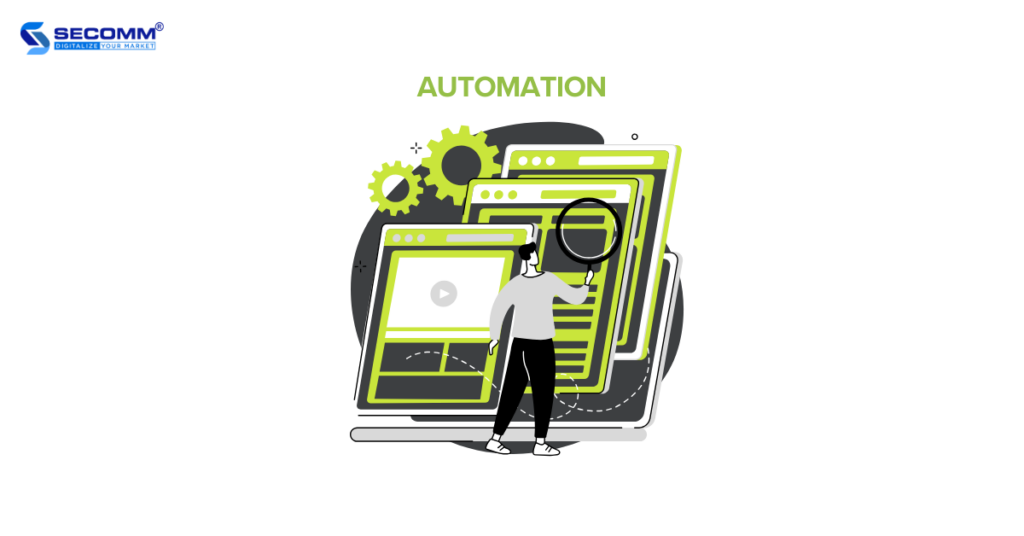
For all Shopify businesses, the Shopify POS feature is included in the standard service package known as POS Lite, but it has limitations in terms of features and POS usage locations. To unlock more advanced features and extend the POS capabilities, Shopify businesses need to upgrade to the POS Pro package, priced at $89 per month per location.
On the other hand, Shopify Plus businesses enjoy free access to POS Pro for their initial 20 locations. This implies that businesses implementing Shopify Plus can leverage advanced POS features, including BOPIS deployment, unlimited user accounts, omnichannel selling, inventory management, and more.
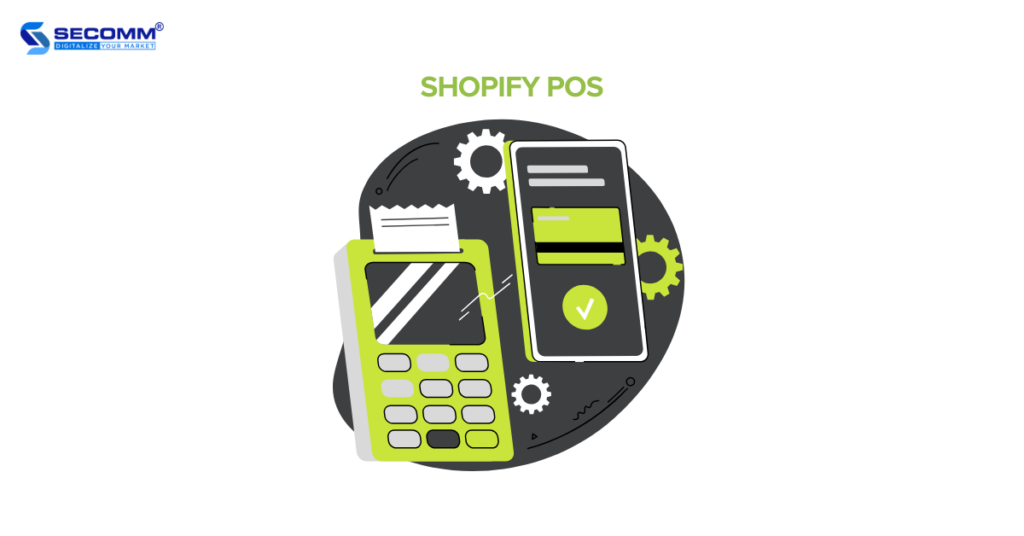
This feature is specifically designed for Shopify Plus businesses, facilitating B2B transactions directly through the eCommerce website without reliance on third-party apps or alternative solutions. You can set up catalogs, payment terms, and company profiles, and customize prices specifically for B2B customers.
This provides the flexibility to develop a website that serves B2B and B2C customers or craft a specialized platform dedicated to B2B clients.
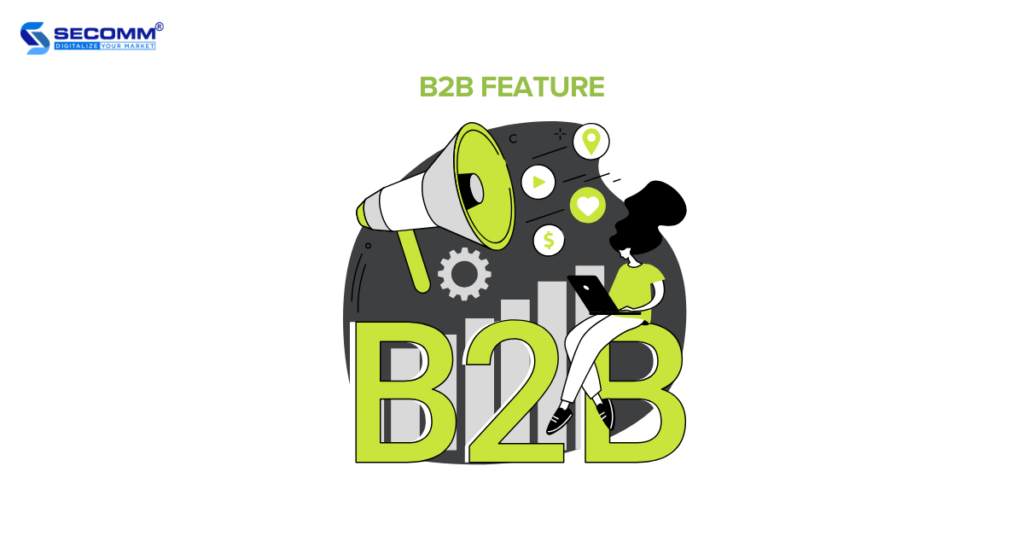
The wholesale feature is specifically designed for Shopify Plus merchants. This feature allows you to customize the wholesale website interface differently from the regular eCommerce site, adjust pricing, and establish a distinct ordering process specifically for wholesale customers. You can also choose to showcase products intended for wholesale transactions exclusively on the Shopify Plus wholesale website.
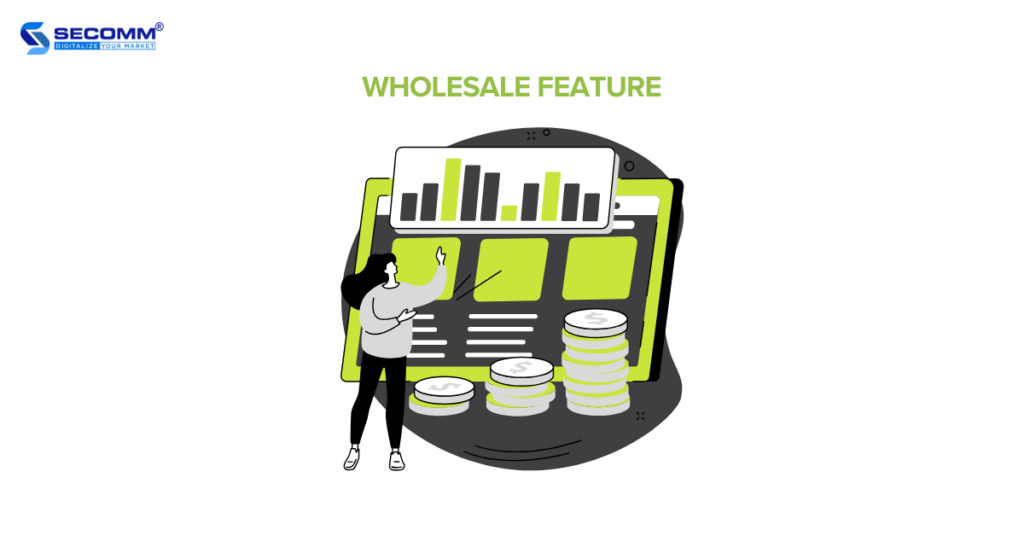
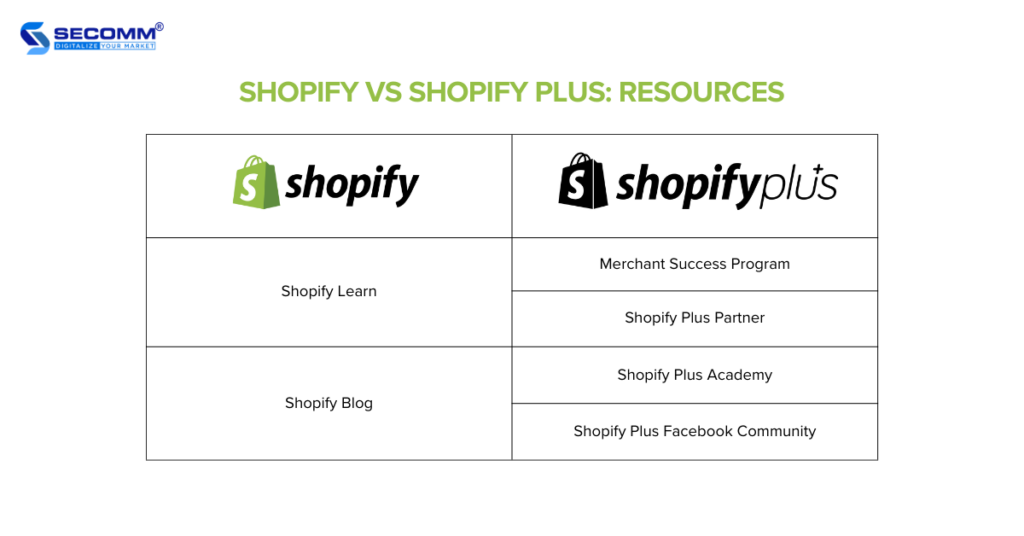
For Shopify businesses, they can access support 24/7 throughout the entire process of building and advancing their eCommerce website through channels like the hotline, email, or chatbox. Additionally, Shopify provides resources for businesses to enhance their eCommerce operations, including:
In addition to the support services available through the hotline, email, or chatbox, businesses utilizing Shopify Plus enjoy enhanced access to educational resources and support:
Here is an overview of the significant differences between Shopify and Shopify Plus platforms. The decision on which platform is most suitable depends on each business’s scale and deployment requirements.
For startups or small to medium-sized enterprises with minimal customization requirements and a desire for quick product launches, regular Shopify solutions may be more suitable.
On the other hand, large-scale enterprises with high integration and customization needs should prioritize Shopify Plus.
With years of experience deploying Shopify Plus eCommerce websites for leading businesses such as Vinamilk and Suzuverse, SECOMM boasts a professional team with exceptional technical skills and in-depth knowledge of the Shopify Plus platform.
Contact SECOMM or call the hotline at 028 7108 9908 to deploy Shopify Plus today!
 2
2
 6,036
6,036
 0
0
 1
1Subscribe to get the latest eBook!
Hotline